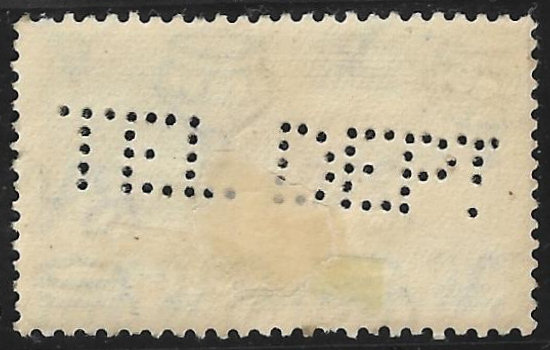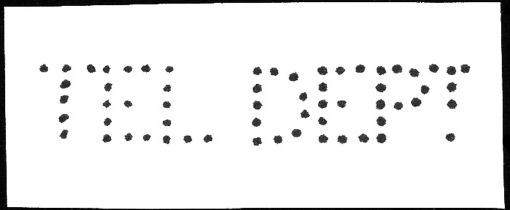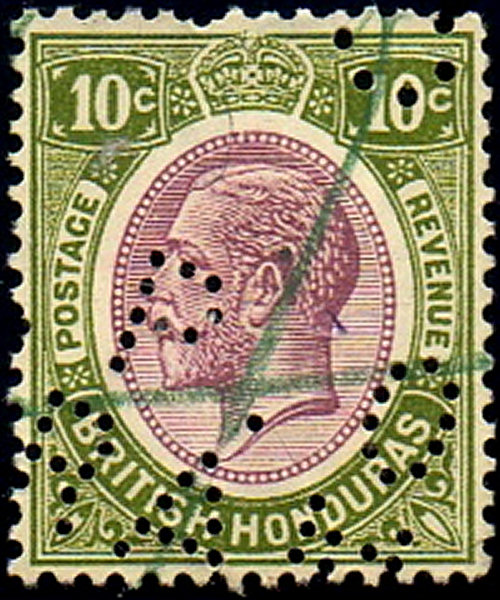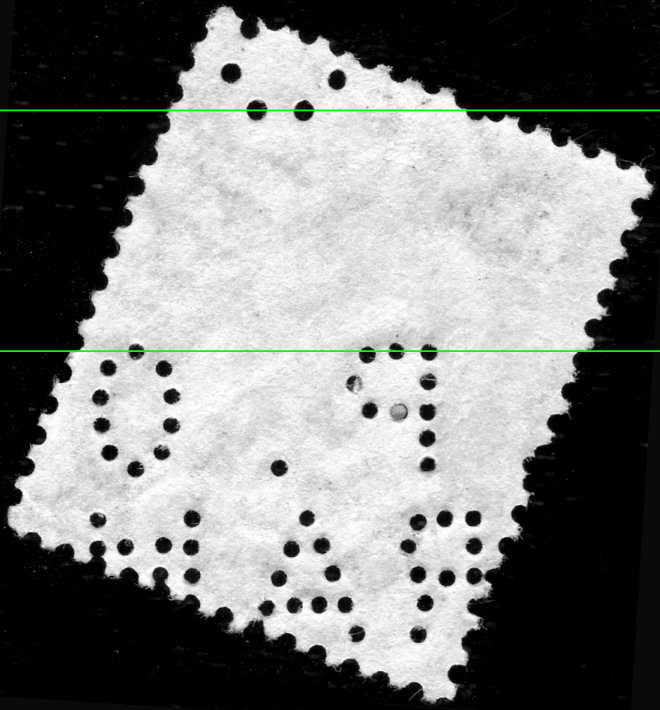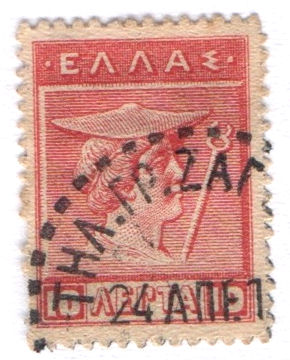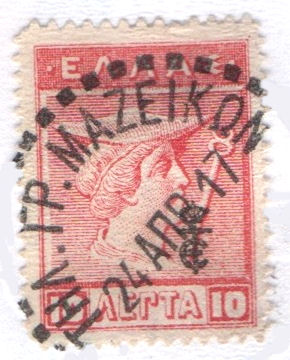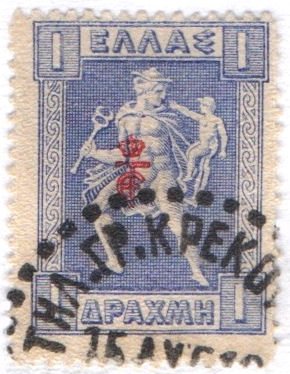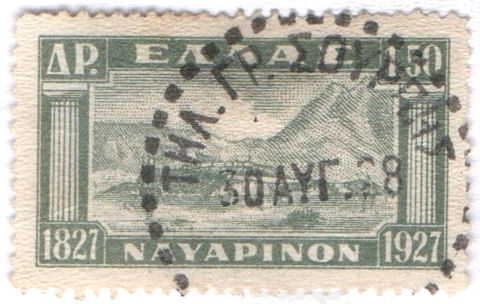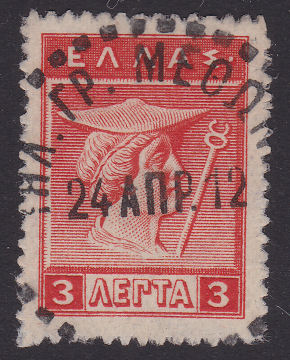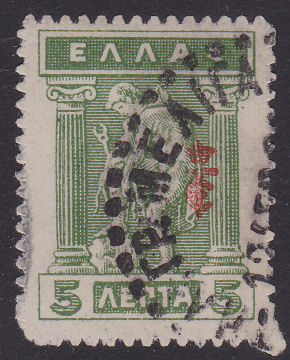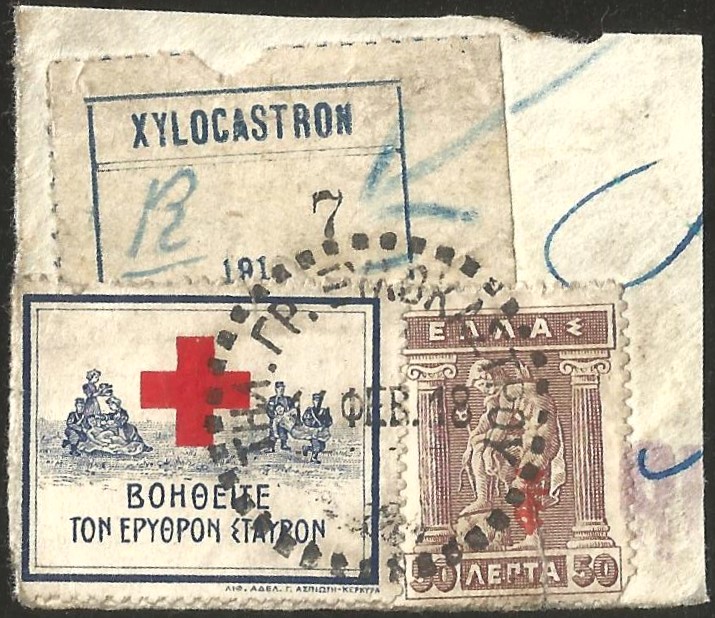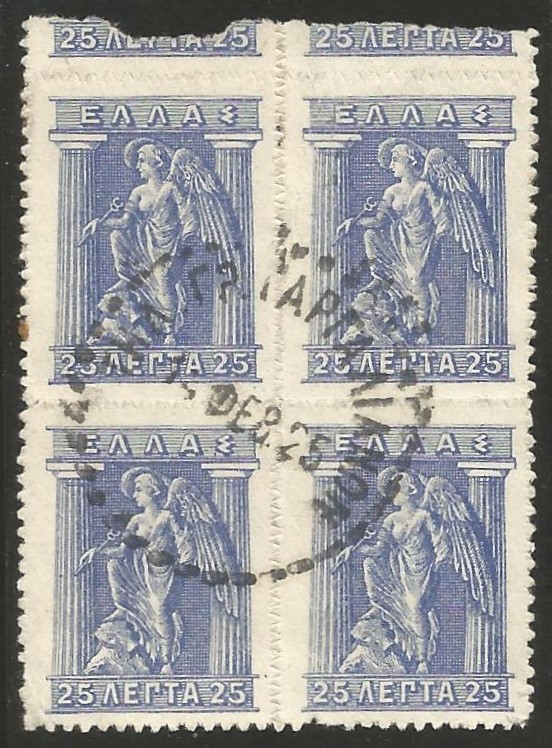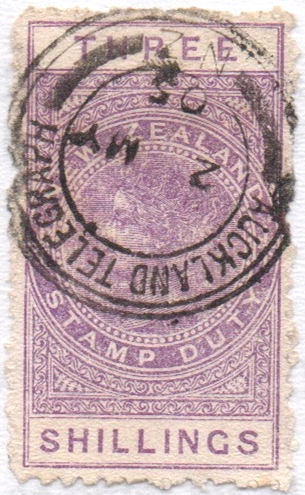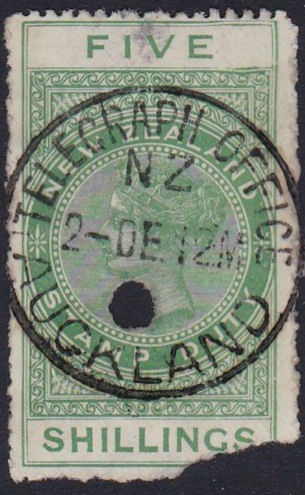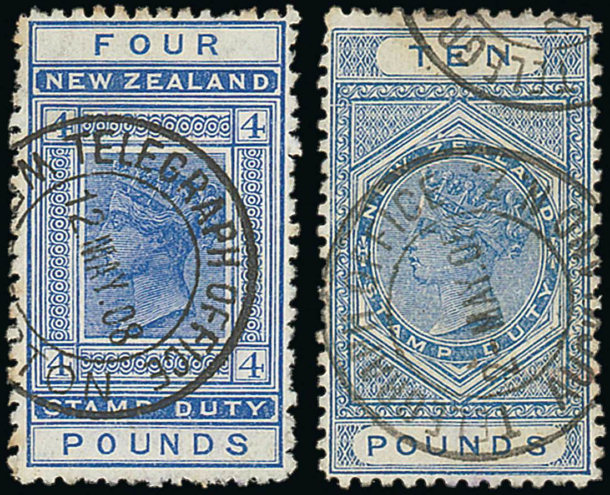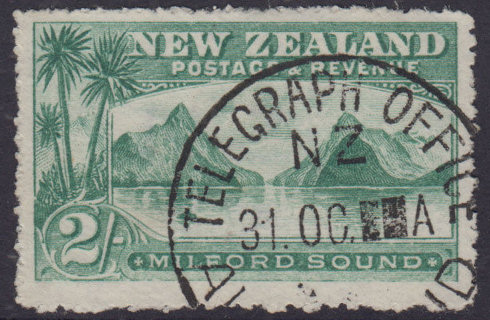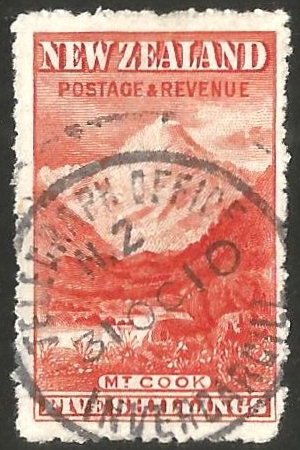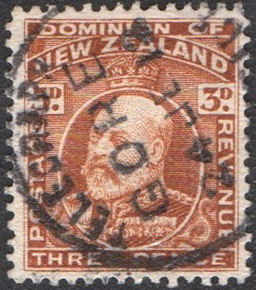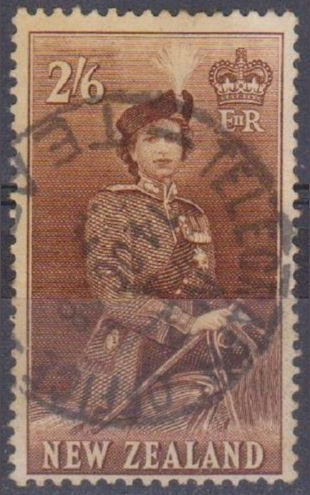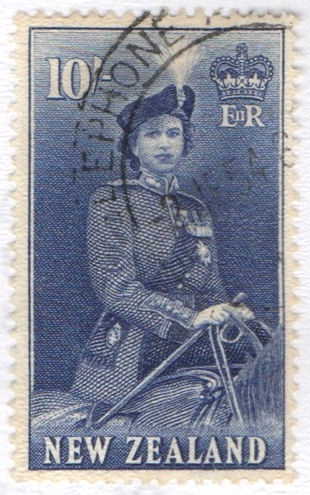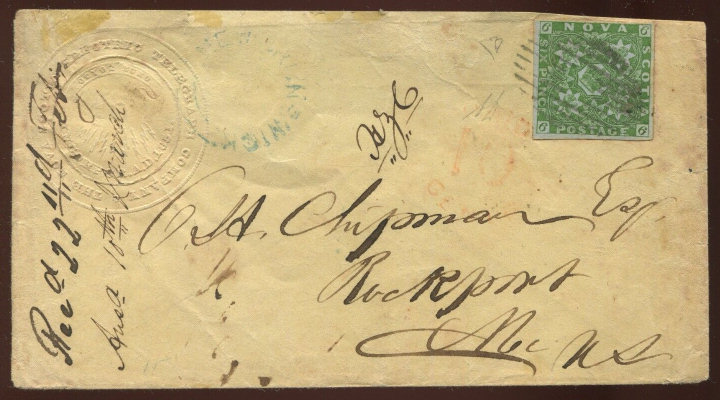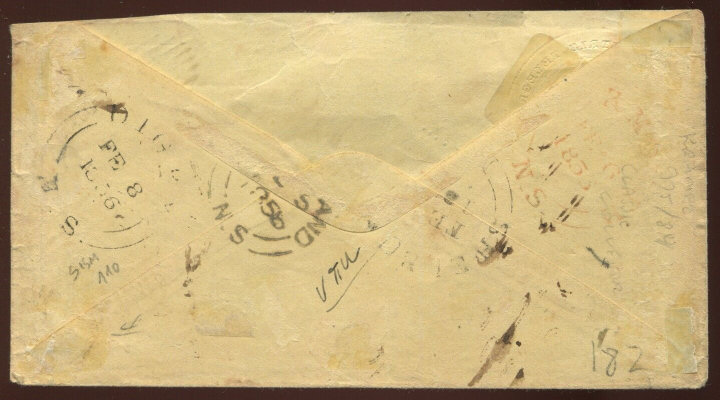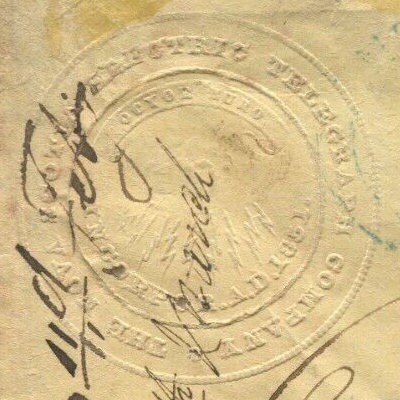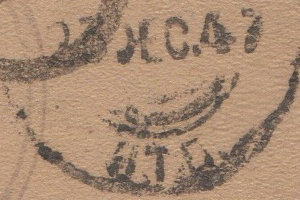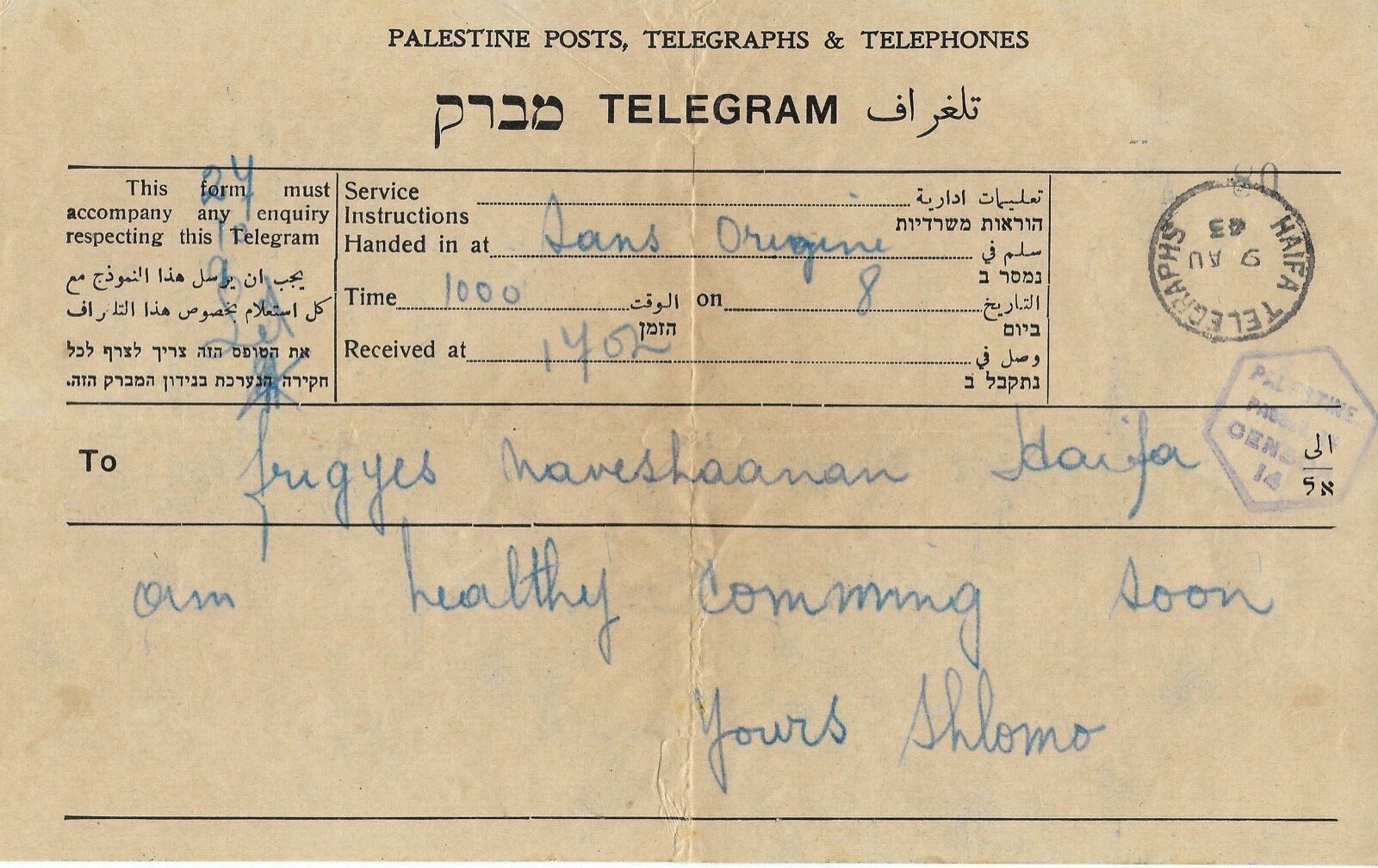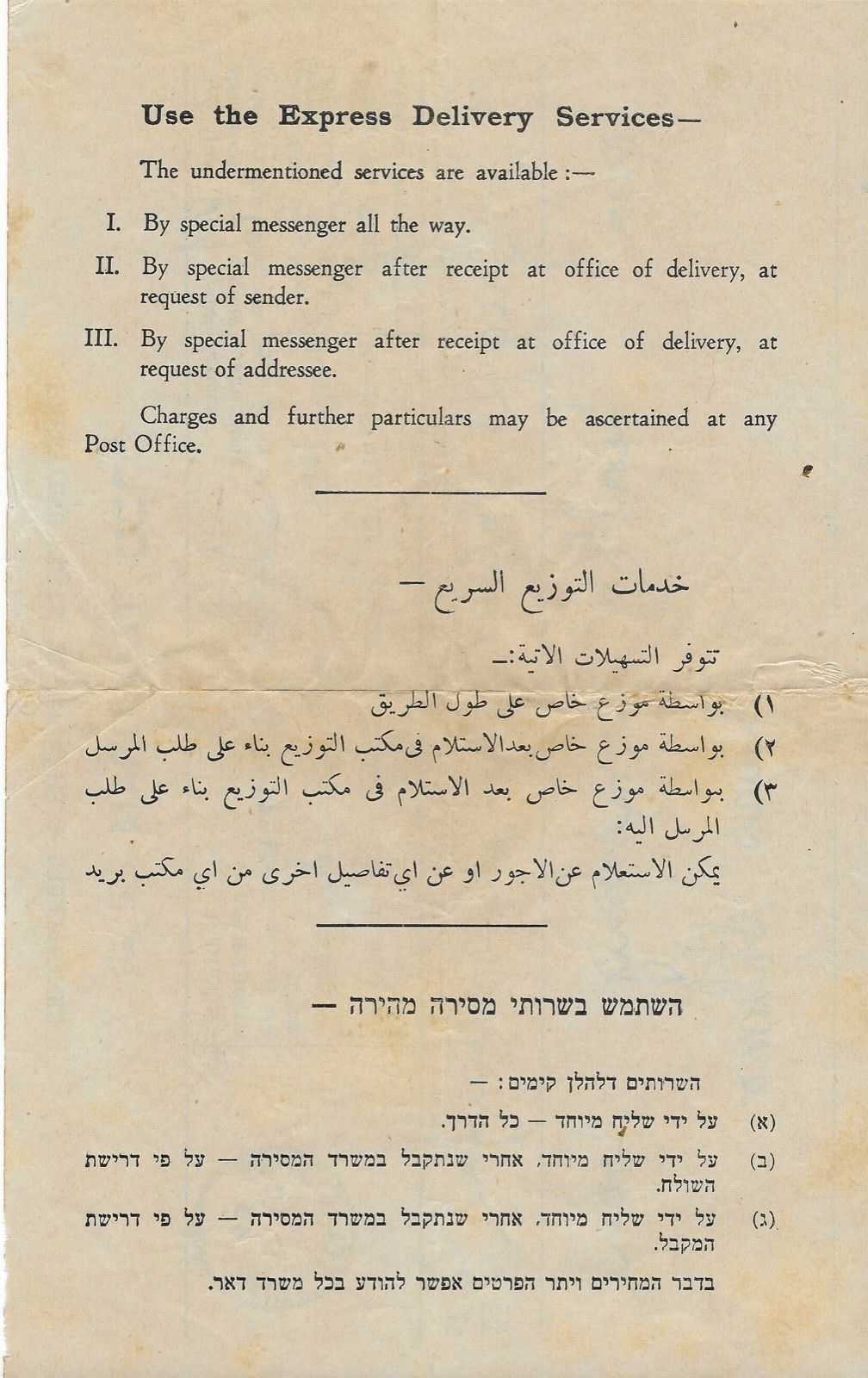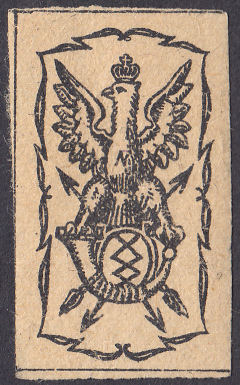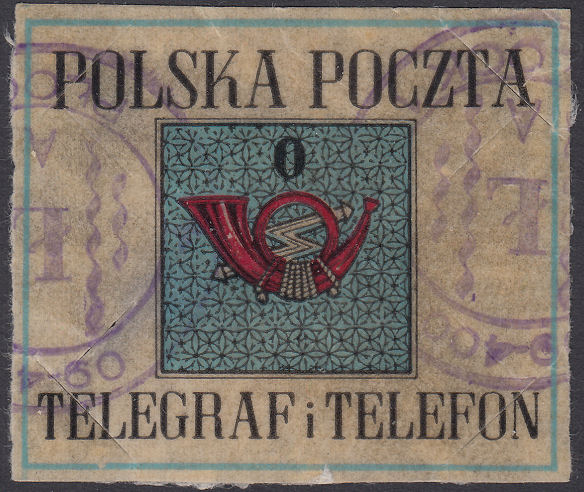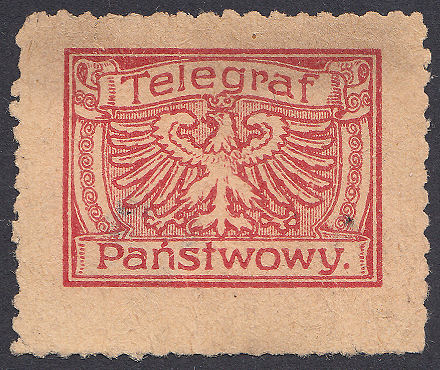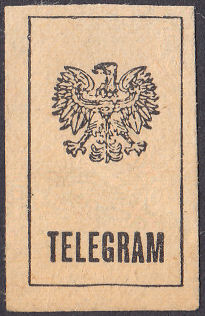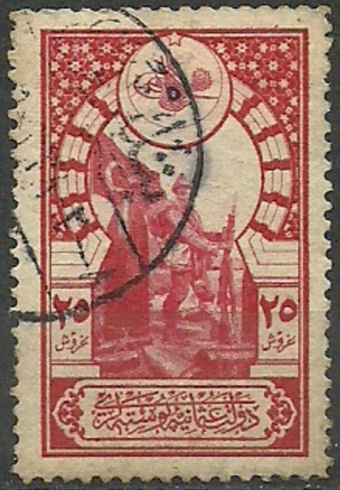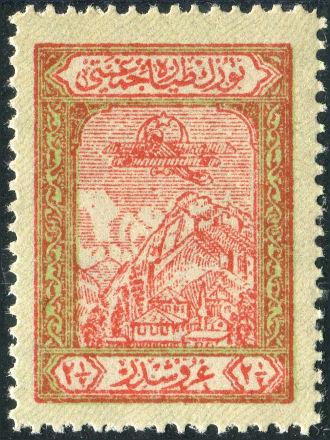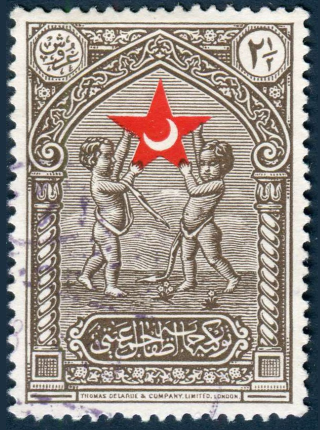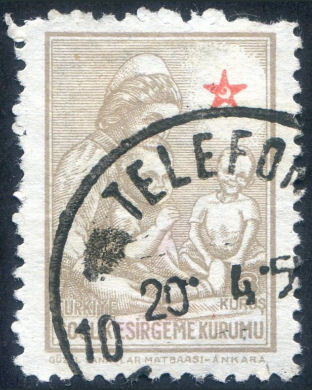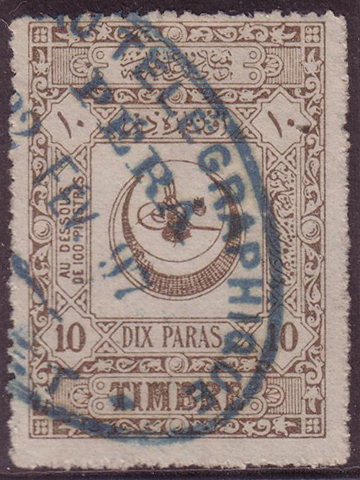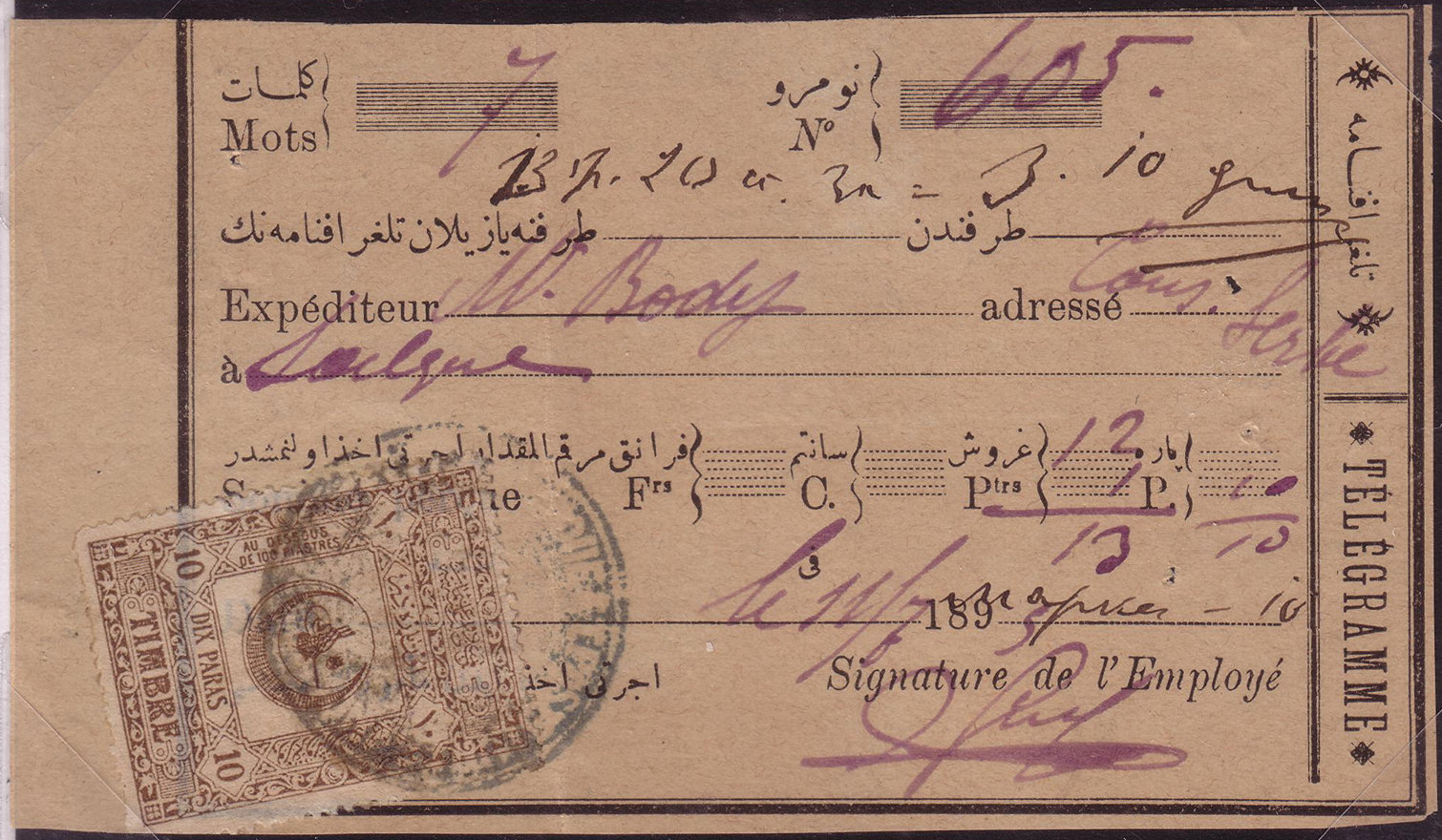| Up a level | |||||||||
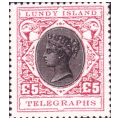 |
 |
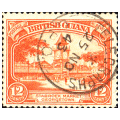 |
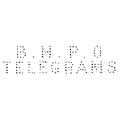 |
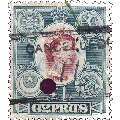 |
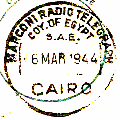 |
 |
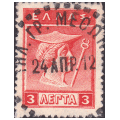 |
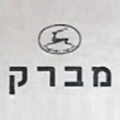 |
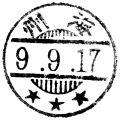 |
| Bogus | Bhutan | British Guiana | British Honduras | Cyprus | Egypt | Falkland Is. | Greece | Israel | Korea |
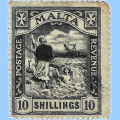 |
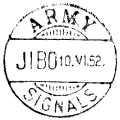 |
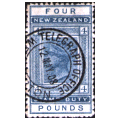 |
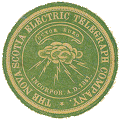 |
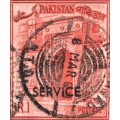 |
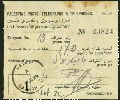 |
 |
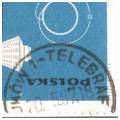 |
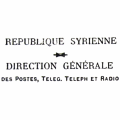 |
 |
| Malta | Mauritius | New Zealand | Nova Scotia | Pakistan | Palestine | Papua, New Guinea | Poland | Syria | Turkey |
Miscellaneous.
Most countries used a telegraph system at one time or another, but relatively few are mentioned on this site so far.
Largely that is because it has grown out of the book by Steve Hiscocks that used narrowly defined criteria for listing.
It did not include postage stamps used for telegraphic purposes, or even stamps that were intended for both postal and telegraphic purposes.
The media of the internet does not suffer from the same financial constraints of publishing s book, so for some countries I have gradually
widened the scope from Hiscocks' original inclusions.
Here I hope to add information about telegraphy in countries unlisted by Hiscocks for various reasons.
I know that some people will have no interest in this, however I also know that some will be very interested. .
Bogus
These are 'stamps' that purport to be Telegraph stamps but have been produced privately, presumably for the sole purpose of making money
out of collectors who may believe them to have philatelic value. Some are more persuasive than others, but they all misrepresent themselves.
I am surprised that some of these have not landed the perpetrators in prison, but then perhaps they did.
Similarly I am surprised that the growing number of 'forgeries', 'reproductions' etc., appearing on eBay that
appear to be copies of genuine stamps produced on a home printer.
They are often described as "From my deceased grandfathers' old collection. I know nothing about stamps, please make your own mind up",
or something equally disingenuous. Personally I think more policing is well overdue as collectors are being defrauded.
Anyway, this is my attempt to shed some light.
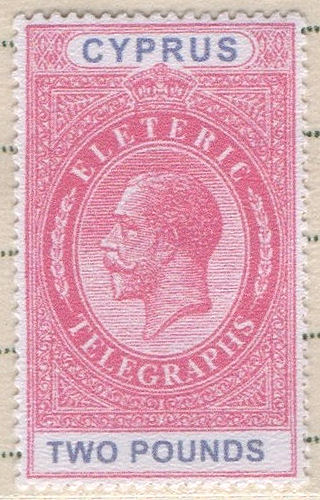
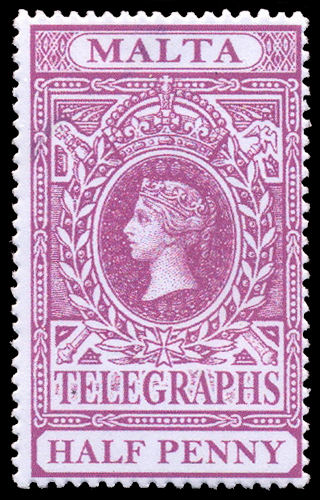
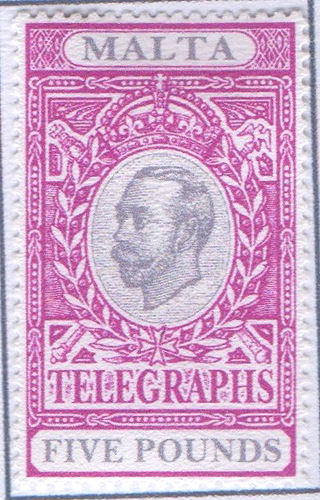
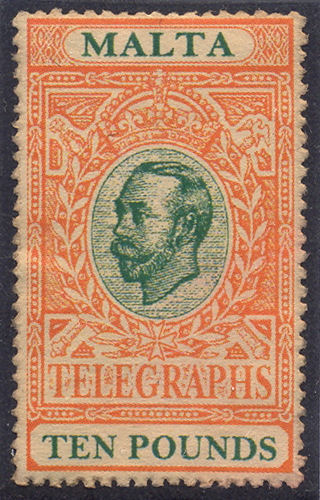
The above purport to have been produced by existing countries with the authority of the Crown and most with significant face values.
There is no evidence that such stamps were ever legitimately printed or even contemplated. I think they are Illegal stamps.
Hopefully whoever produced these is in prison for a very long time.
The stamps below indicate that they were for use on the Island of Lundy in the mouth of the Bristol Channel of England.
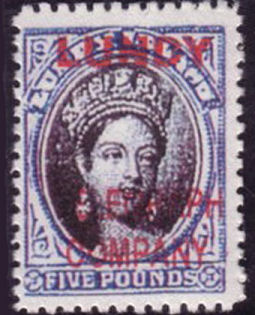
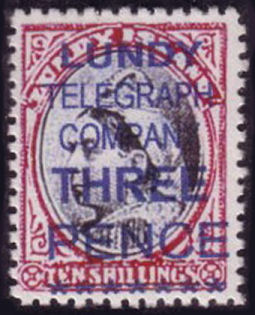
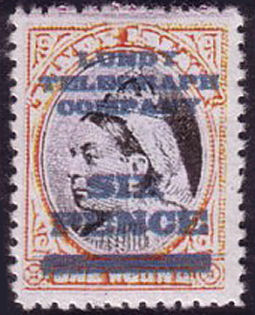
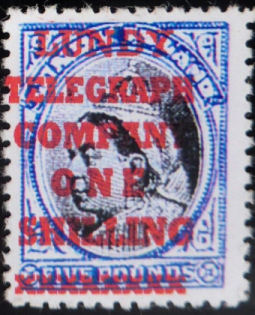
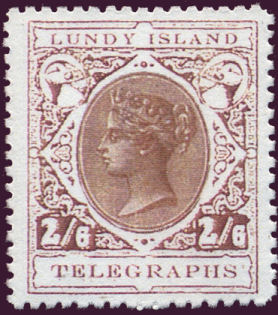
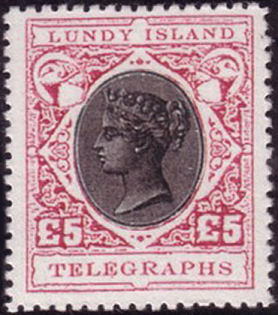
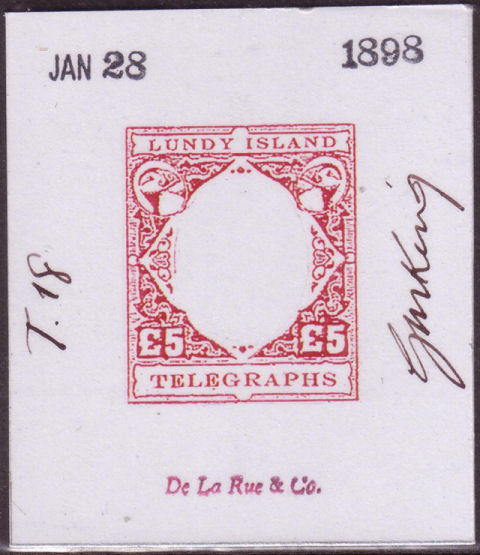
This last item is particularly egregious. It purports have been produced in 1898, a time when the Post Office had a monopoly on telegraphs,
by De La Rue & Co. in a quality well below their normal standard, and appears to be signed Gerald King !
Some collectors have paid significant sums of money for these items, believing them to be genuine. Why is this man not in prison ?
Images courtesy of Rolf Lamprecht.
Further information and/or examples are invited.
These are supposed to be U.S. Army Franks "For Official Business Only"
I am told that the US army never issued franks for that purpose. Perhaps it was a hint that they should, but I am more
inclined to think that they are simply bogus and intended to milk collectors. Further information welcome.

Images courtesy of Todd Parker.
:——————— END OF BOGUS ———————:
Bhutan
The map of Pakistan below shows where Bhutan is.
Bhutan was a late starter. It used the telegraph forms of India (see there for another example). 2Nu60 for 9 chargeable words from Phuntsholing to New Dehli.
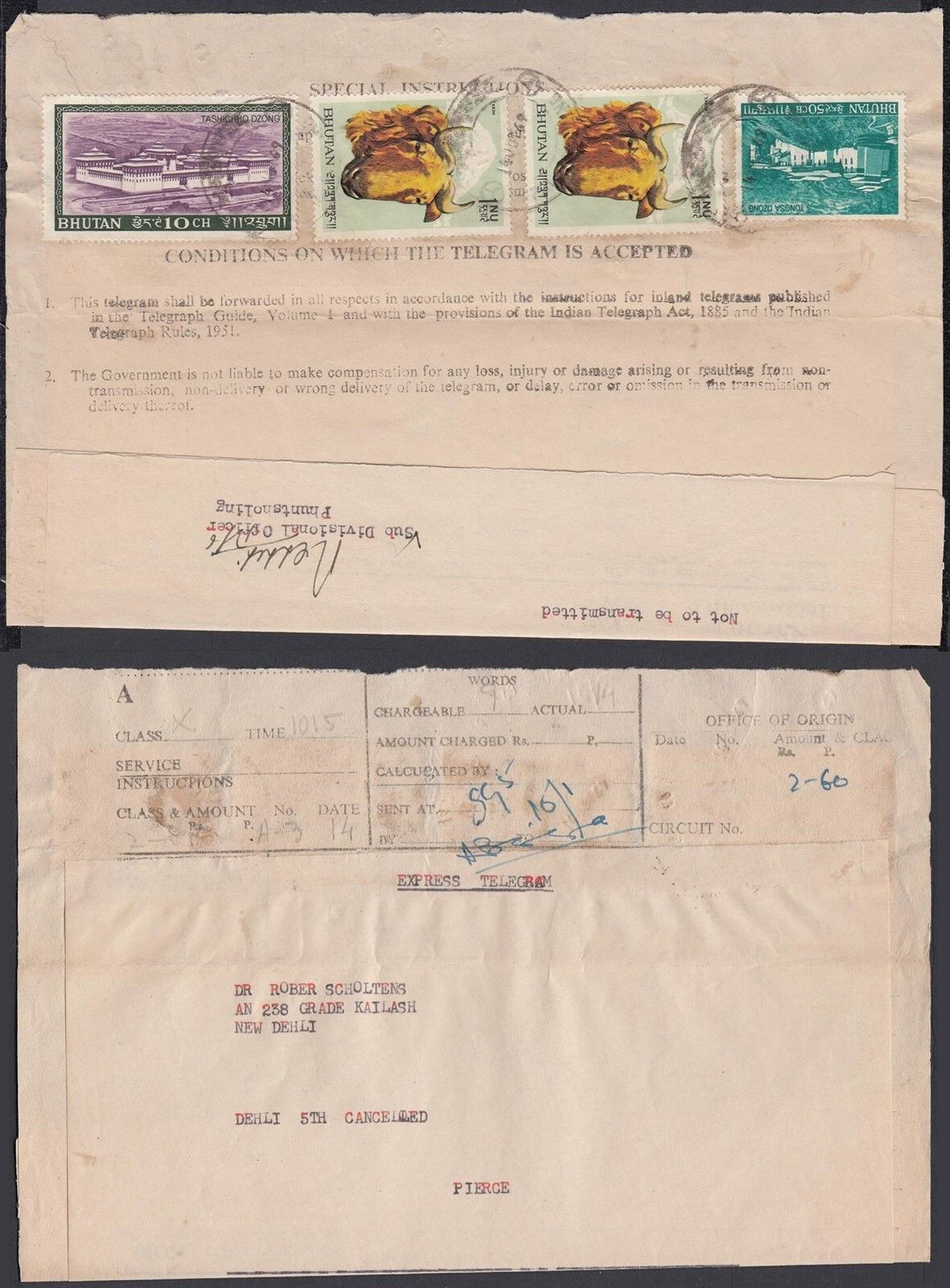
The back refers to "... provisions of the Indian Telegraph Act, 1885 and the Indian Telegraph Rules, 1951".
Images courtesy of vgstamps2015 on eBay (click an image for listing).
Bhutan was a late starter. It used the telegraph forms of India (see there for another example). 2Nu80 for 24 chargeable words from Phuntsholing to Calcutta.
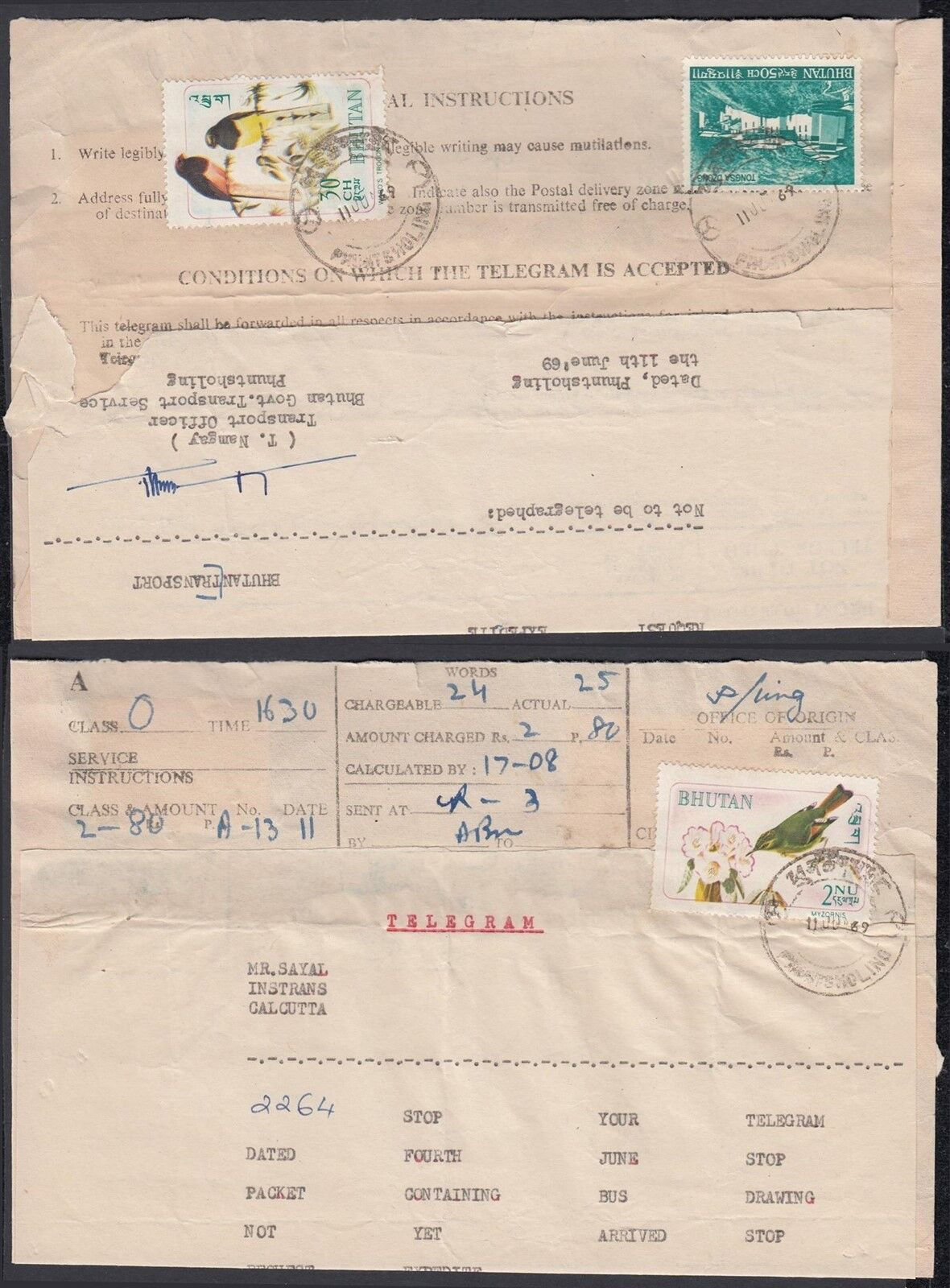
This was from the Bhutan Govt. Transport Service in Phuntsholing. Transport was a high priority in Bhutan at the time.
Images courtesy of vgstamps2015 on eBay (click an image for listing).
British Guiana
With one exception, all these images come courtesy of Les Bottomley
TELEGRAPHS / GEORGETOWN
1899.
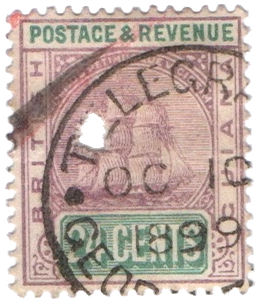
TELEGRAPHS / G.P.O.
1943.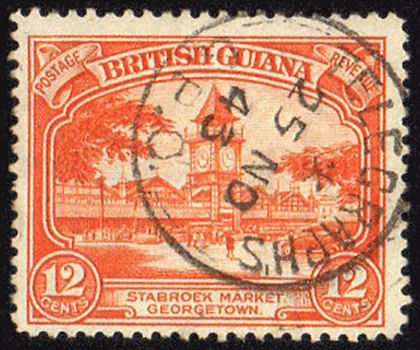
This image from Wiki Commons.
TELEGRAPH N.A. / BRITISH GUIANA
Seen from 1946 to 1949.
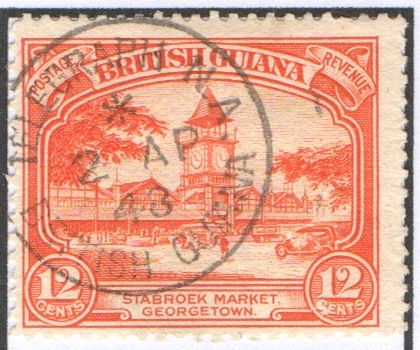
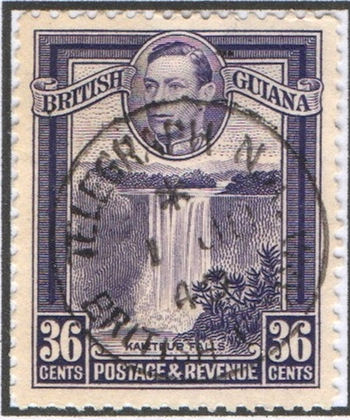
CENTRAL TELEGRAPHS / B.GUIANA
1947.
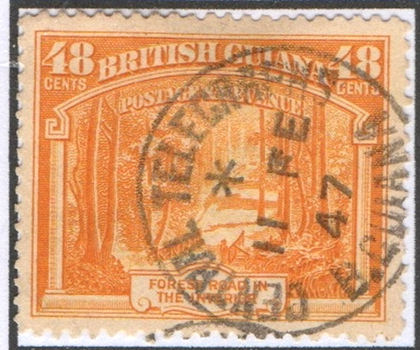
WIRELESS MACKENZIE / BR. GUIANA
1946.
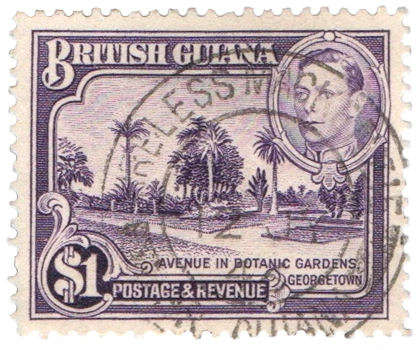
Mackenzie or McKenzie is on the Demerara River about 57 miles (91km) south of Georgetown.
A wireless-Telegraph station list for 1910 shows only Georgetown, which itself was not in the 1906 list.
British Honduras
Jeff Turnbull (well known to the Perfin Fraternity) has kindly sent me these images which he says relate to two dies recorded in the World Perfin catalogue.
The description there is "Telegram punch on Postal issues". I may be wrong (it is not unknown) but I take it that these were used as cancels,
perforated through stamps and form together, though the 50c with additional handstamp is a puzzle. The stamps are of 1938 and were used until 1953.
These are fairly high values as you would expect, but there were also $2 and $5 values.
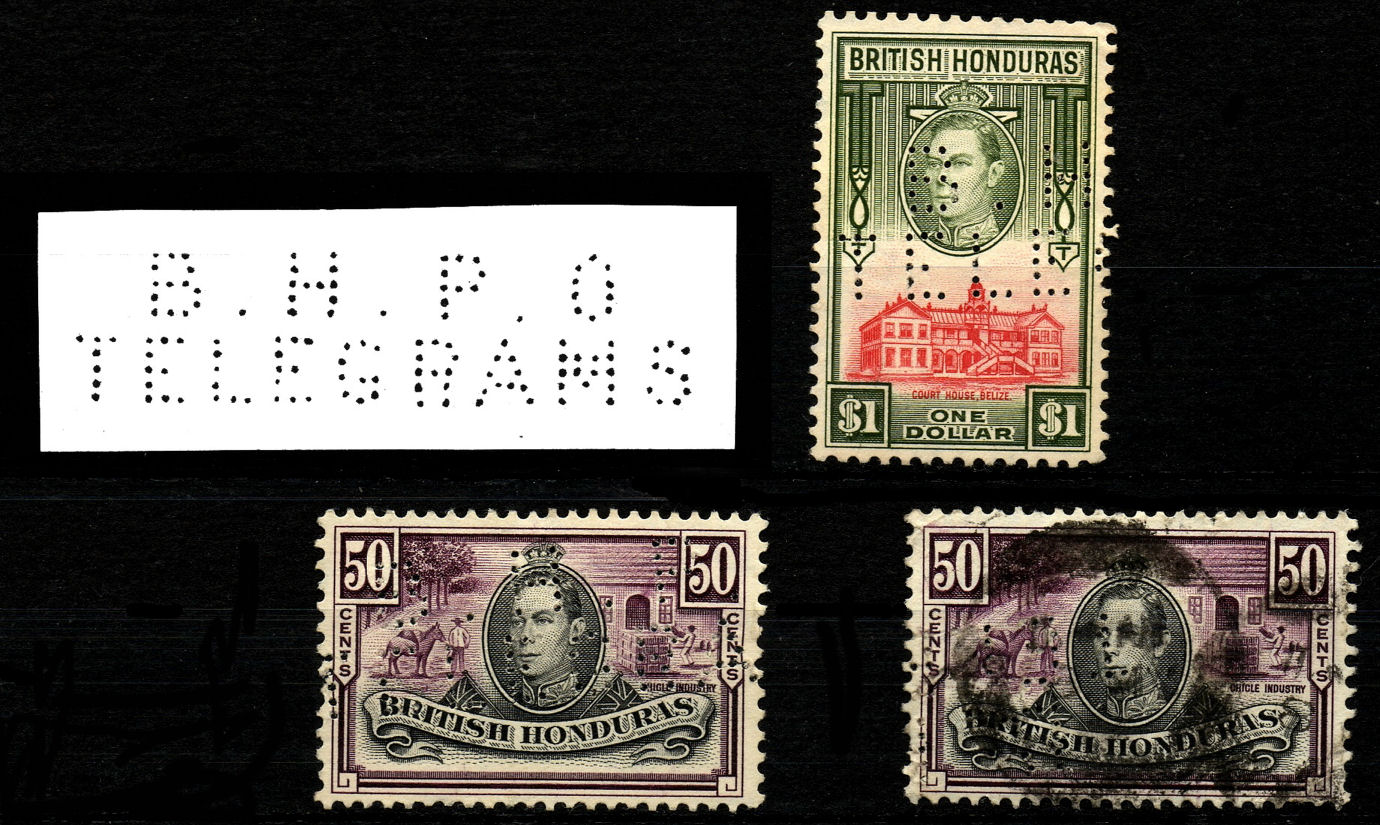
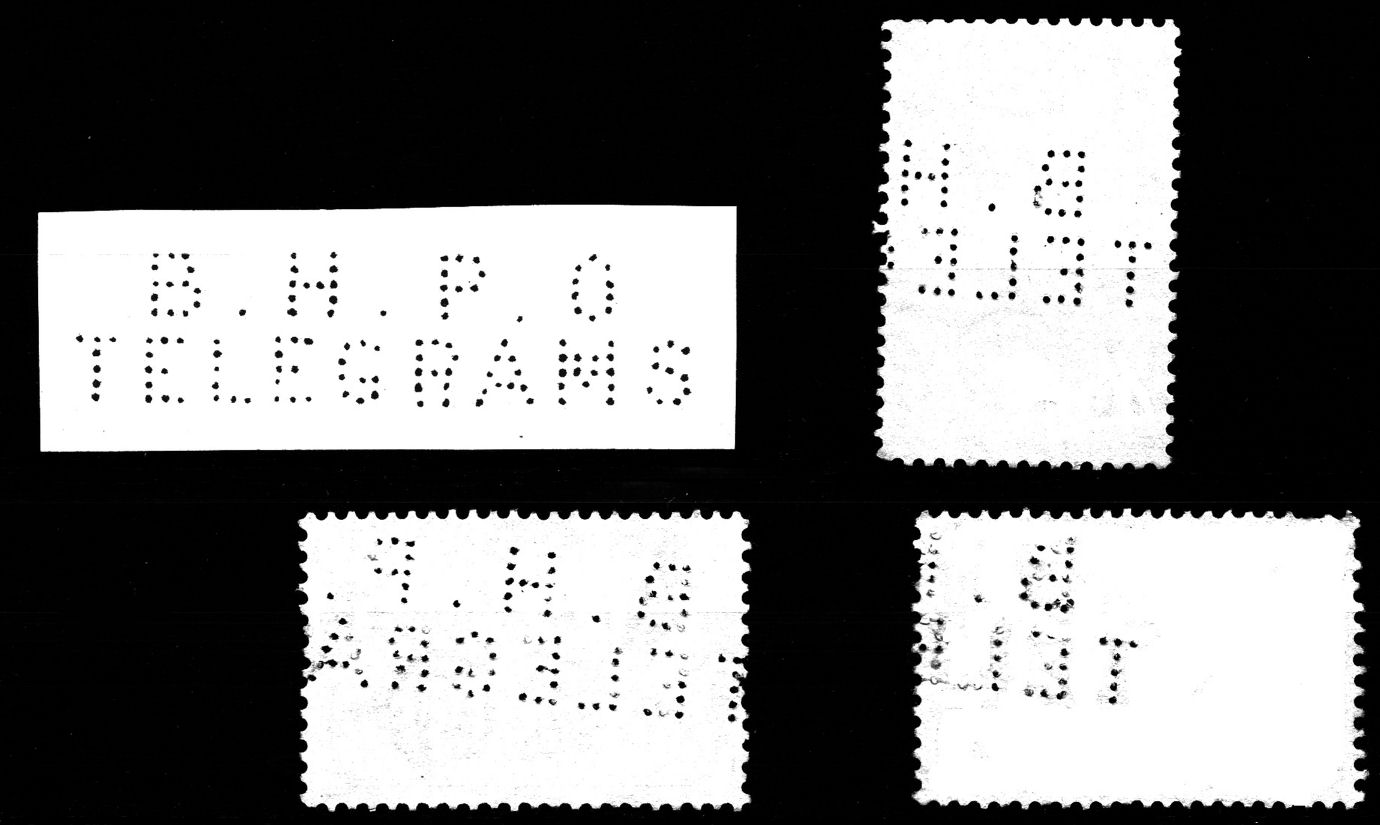

The perfins are at various angles and I think the usage was similar to that in Eritrea.
A quantity (15) of British Honduras stamps with a range of perfins, kindly provided by Matthew Stevenson.
Eight of them have parts of the perfin shown above.
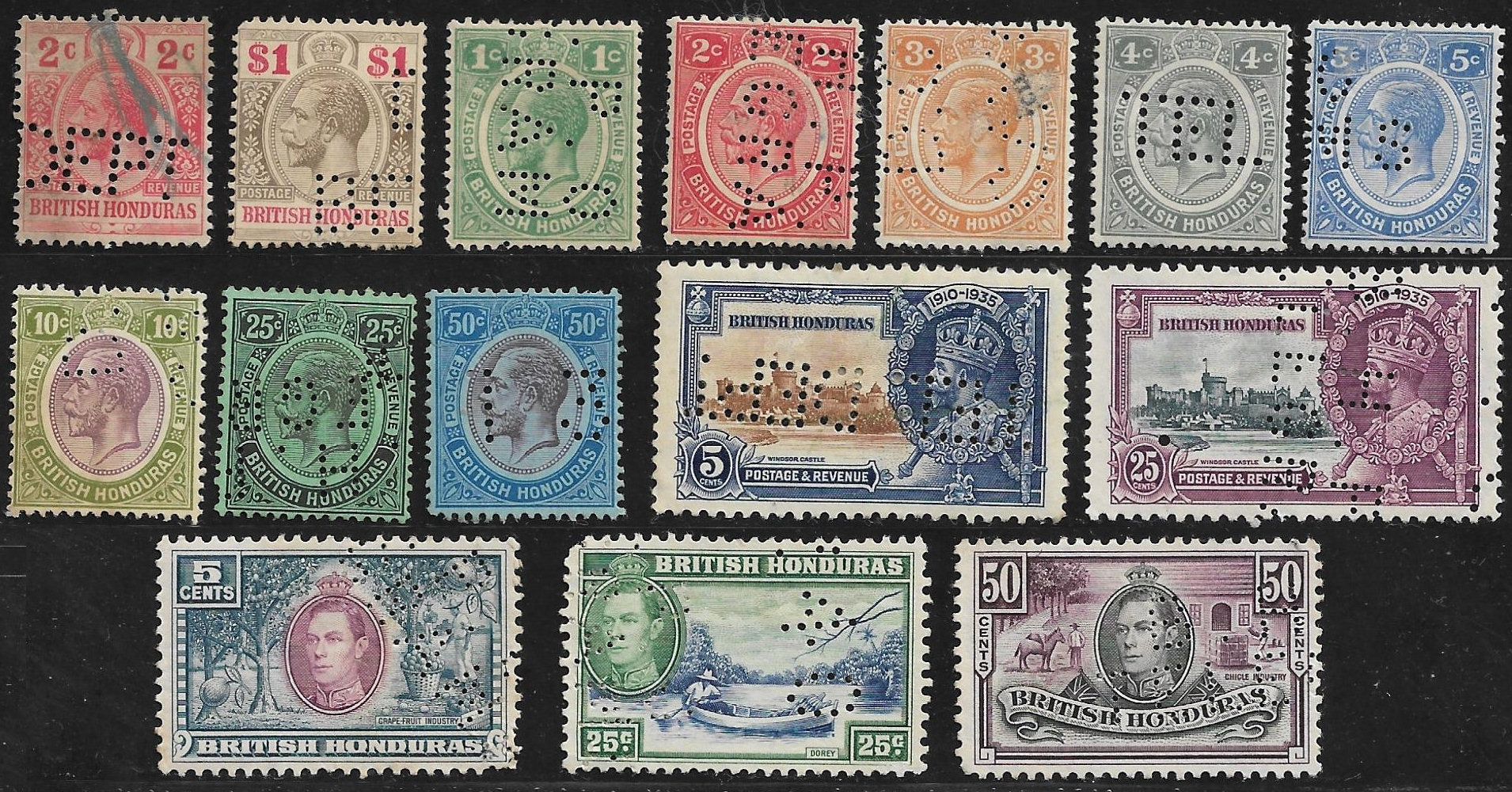
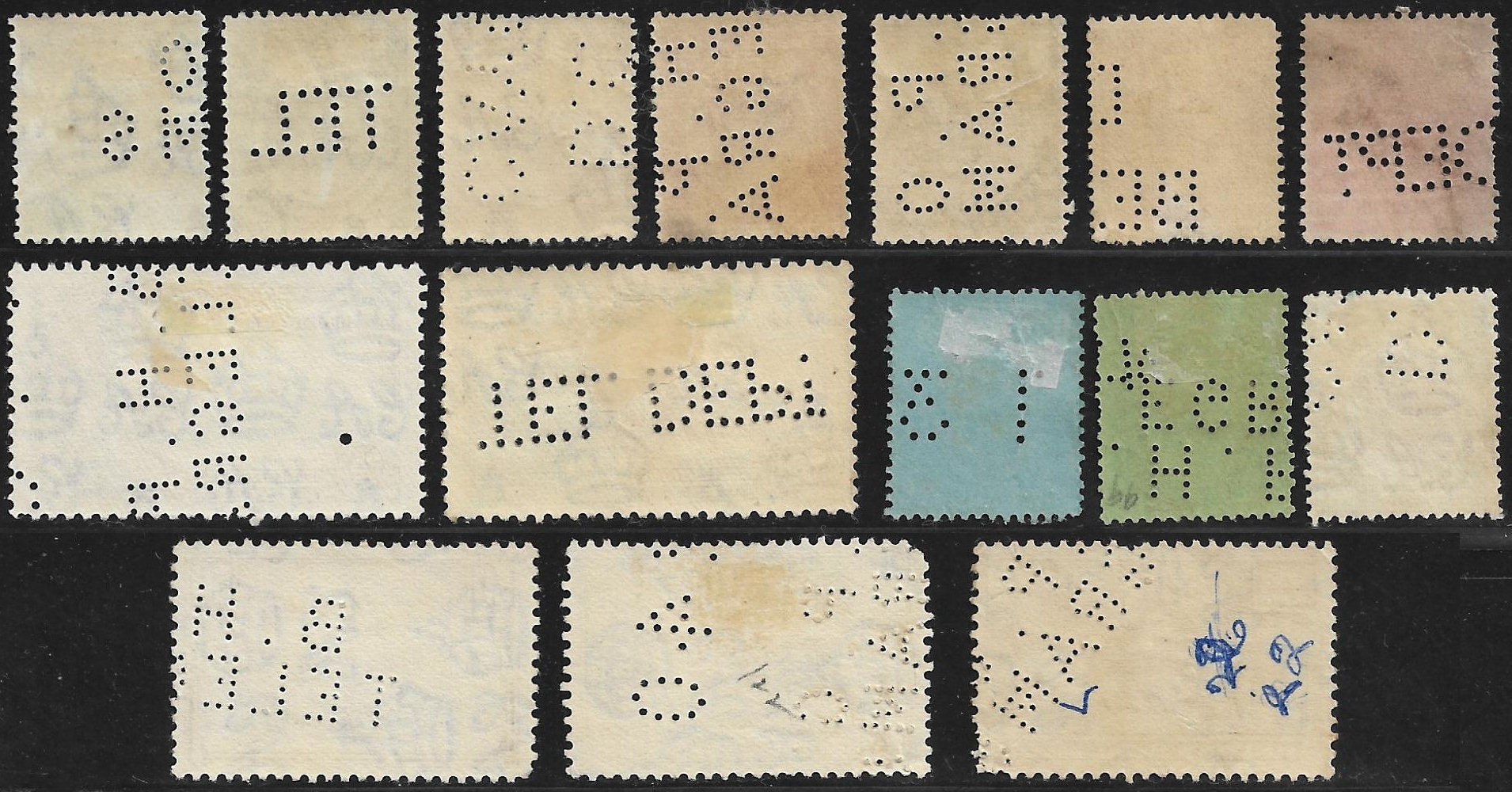
Three of them show parts of District Commissioner perfins. British Honduras is divided into six districts, each had a District Commissioner.
The $1 and 3c on the top row, and 10c below give examples of "D.C. / CAYO" and "D.C. / BELIZE". They are not telegraphic.
The other districts are Corozal, Toledo, Stann Creek and Orange Walk.
Did you notice the 50c blue in the middle with "13"?
Some, but not all, of the BHPO perfins have an associated date perfin in larger holes about 10½mm above it.
Here are 3 examples, the middle from Jeff Turnbull, the others from above.
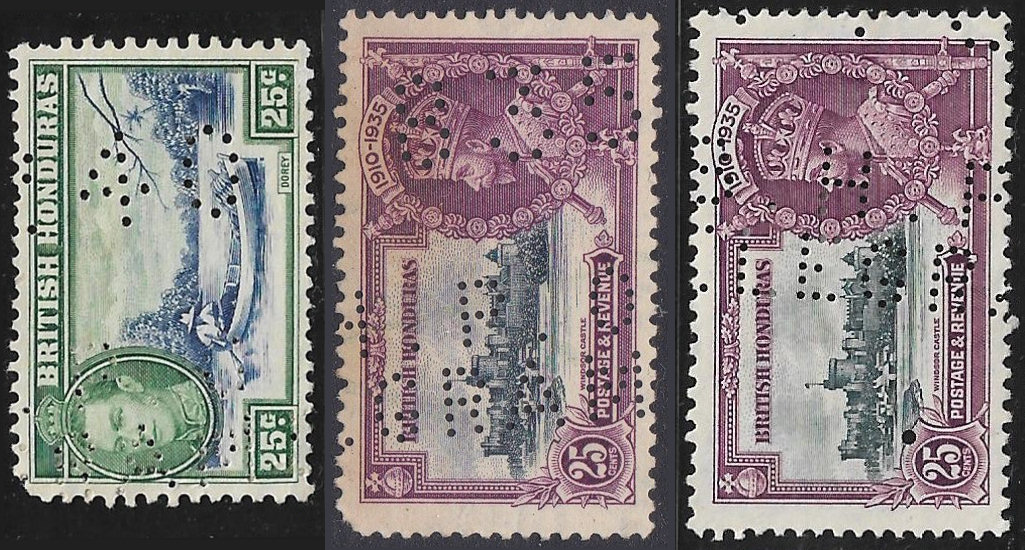
This is the backs of the outer two with the middle derived from the front of the one above.
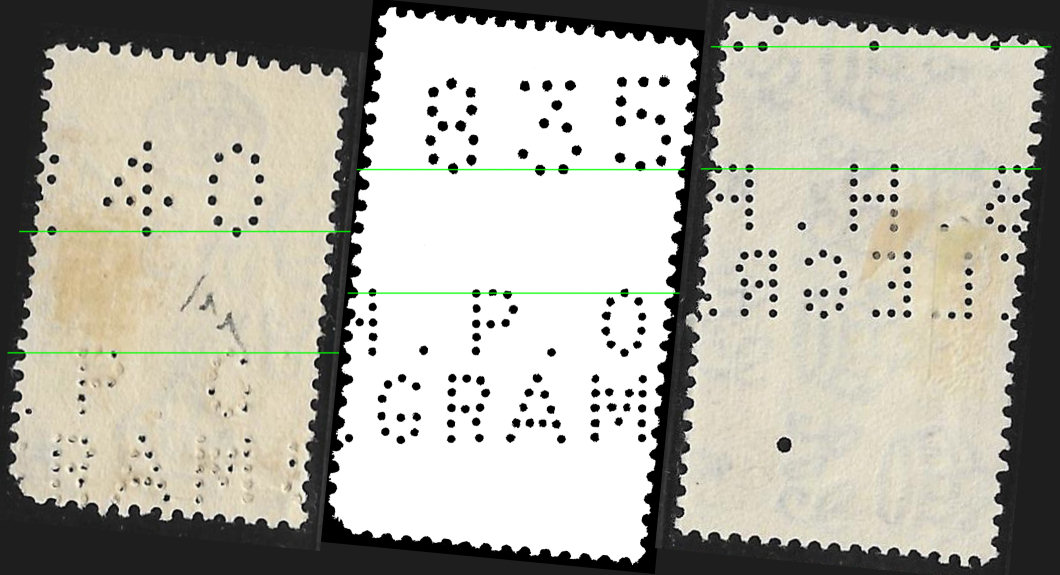
Interestingly, by rotating each by 4½ degrees, they nicely line up and the distance between the BHPO and date perfins can be measured.
Left to right, 10.25, 10.4 and 10.37mm, which given inherent inaccuracies, is surprisingly consistent.
The date format would seem to be one or two digits for the month, followed by 2 digits for the year, but the last shows there is something before that.
More images needed. - Next up, the other 25c !
Since the 25c figured prominently just above, I looked at the other 25c closely.
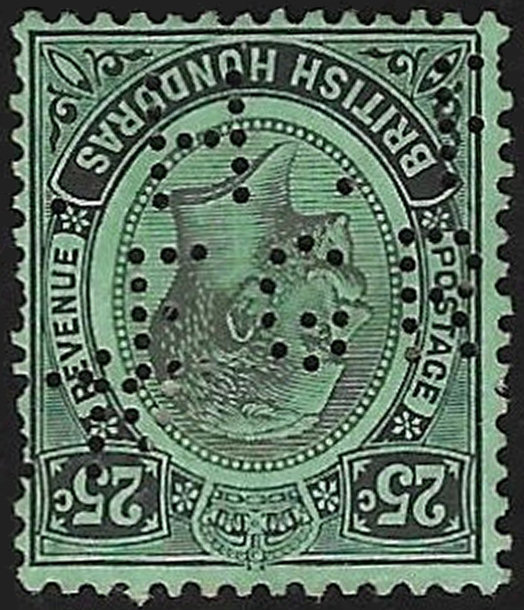
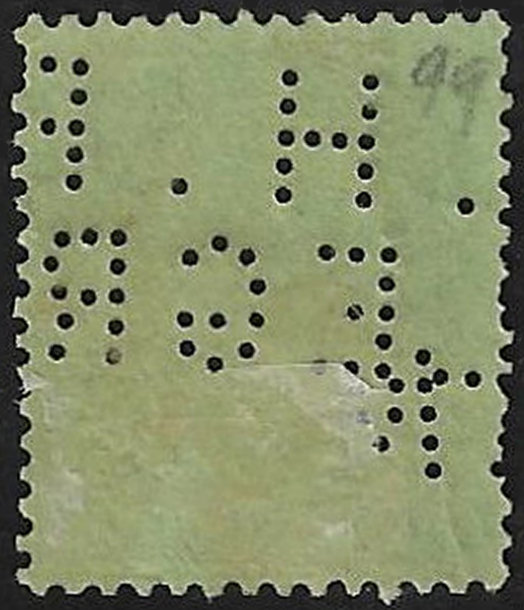
Though part of the BHPO perfin can be clearly recognised, there is something else extra at the bottom.
It is clearly not in the large-size holes as the date perfin though.
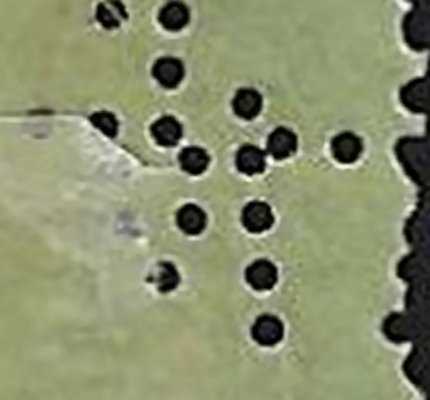
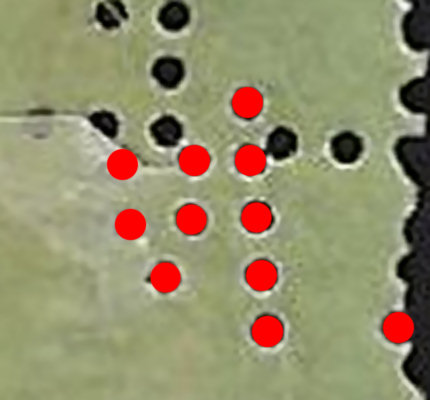
I have marked in red the extra holes. To me it looks like an incomplete ". M" reading right to left. Perhaps the end of "A. M." or "P. M."
I have no idea why it is incomplete. This could well be an earlier version. - But then, see below :
Re-visiting Jeff Turnbull's images of four stamps above those of Matthews, the first two also have extra perforations.
This is the 1c.
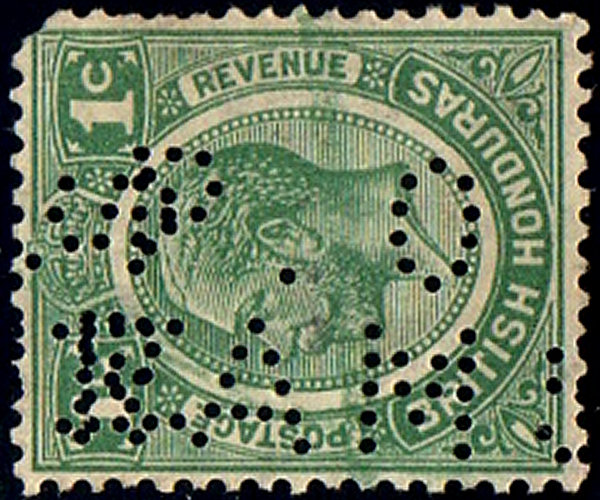
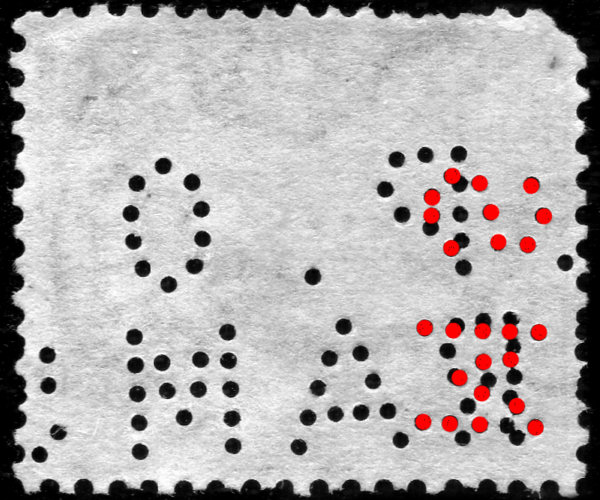
It has an extra "MS" of "TELEGRAMS" reading upwards, so the form was cancelled twice at approximately right-angles.
The gap on this is 10.2mm, but the angle is 21.3 degrees, rather than the 4.5 degrees of the others.
Images courtesy of Jeff Turnbull, who says :
"This type of die where one can change the date to suit is known as a Carpet die
they are often found on receipts and the like."
Cyprus
These may not be telegraphic, but they are punched high-values and are cancelled with "CANCELLED" in a box.
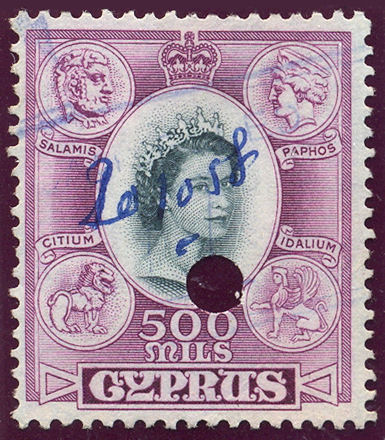
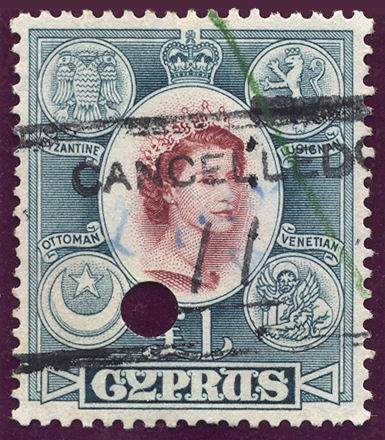
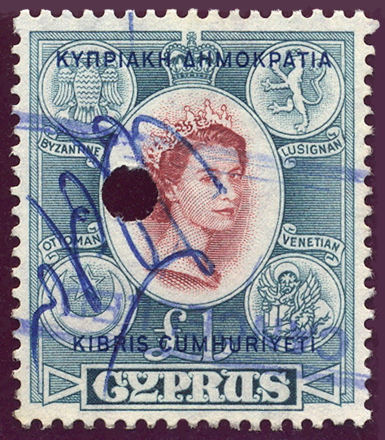
Images from RL.
Some items of stationery used on Cyprus can be seen on the Eastern Telegraph Co. page.
Egypt
A Telegram of 1906 printed by McCorquodale & Co. Ltd. of London.
It is printed in English, French and Arabic and used in Suez on 20 May 1906 for a message from Cairo.
![]()
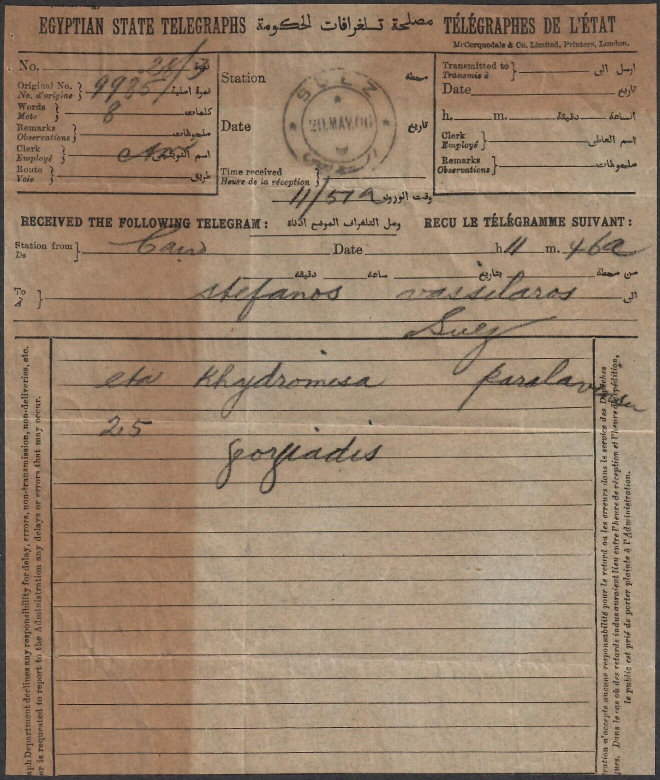
The left-hand panel has standard disclaimers in English.

The right-hand panel has the equivalent in French.

I see no disclaimers in Arabic, but it may have been at the bottom which appears to have been cropped.
Images courtesy of Vahe of GV PHILATELIAN. (click image for listing).
A Telegram of unclear date, but probably in the 1930's.
It is headed "Arab Republic of Egypt / Telecommunications Organization / International Sector"
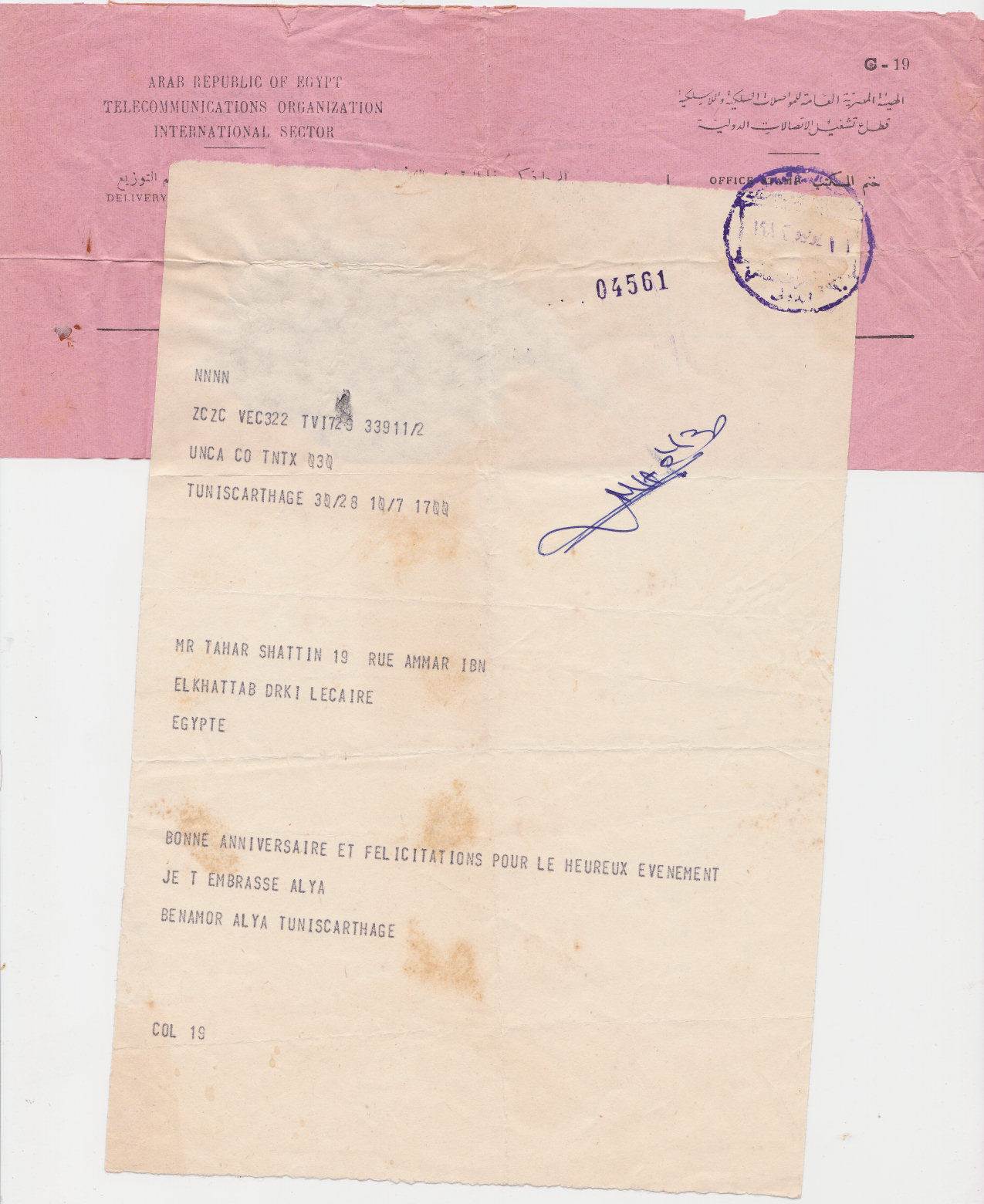
The back of the pink heading paper has Station addresses and phone numbers in Arabic and English for Cairo, Alexandria, Port Said and Suez.
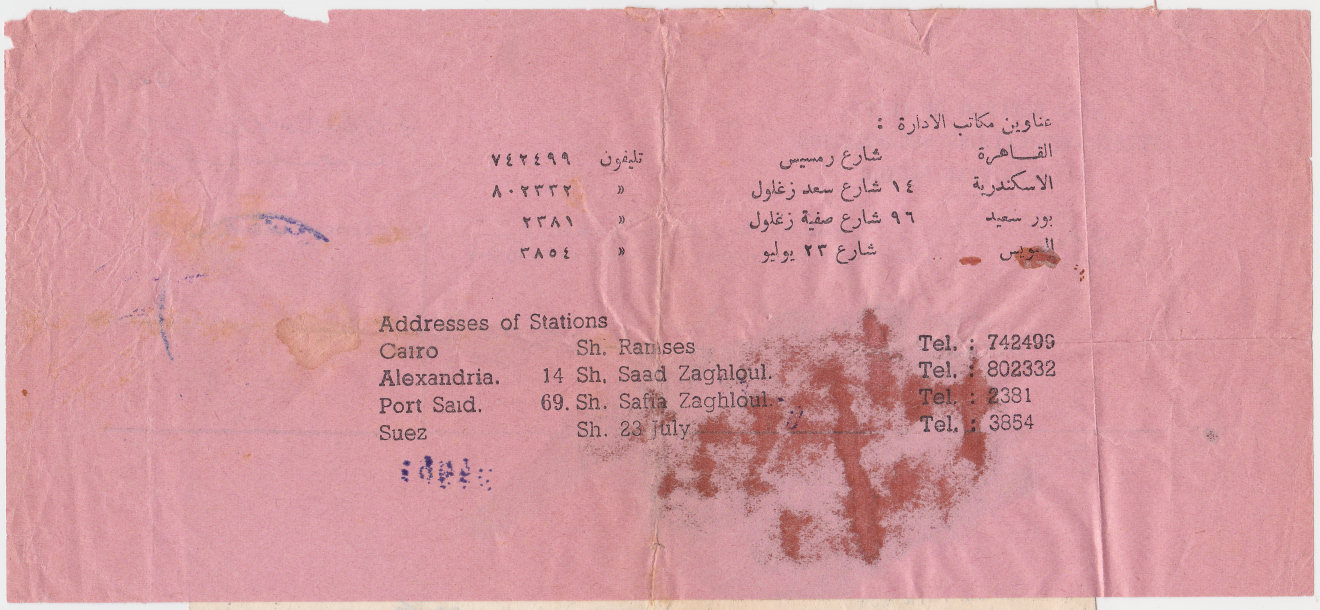
A Telegram of unclear date, but probably 12 August 1942 or 1943. Form G14 ?
It is headed "Egyptian State Telegraphs" in English and Arabic
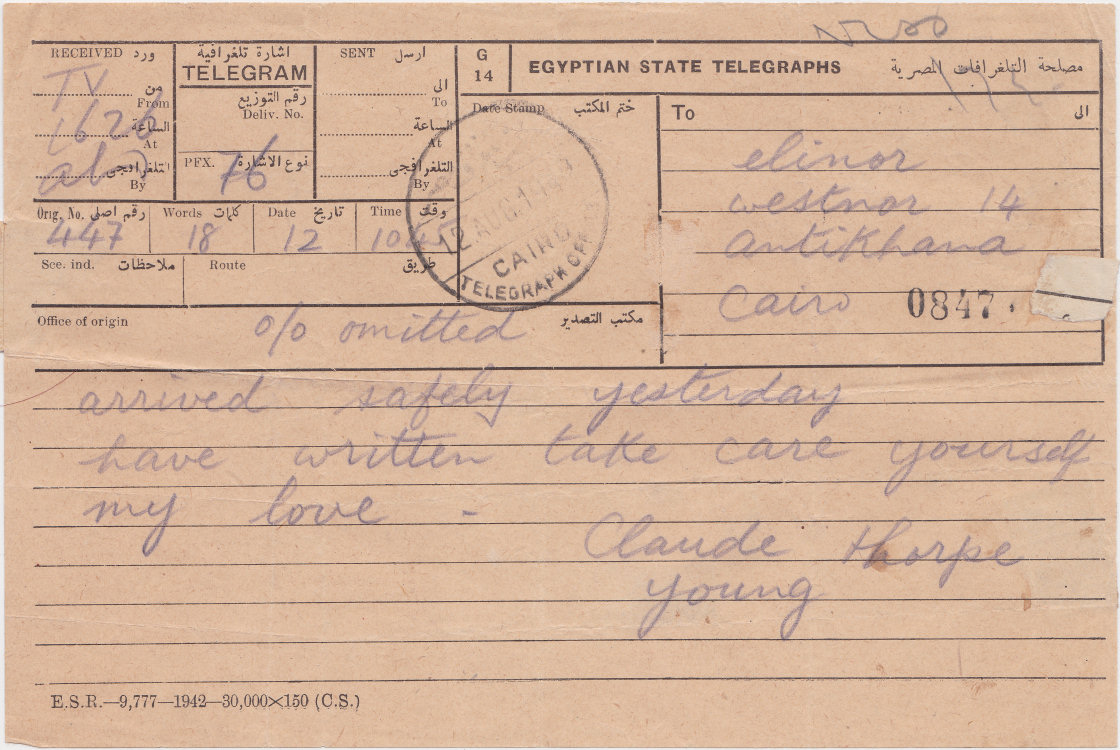
There is an imprint at bottom-left suggesting it was printed in 1942.
![]()
Telegram of the Marconi Radio Telegraph Company of Egypt S.A.E., Associated with the Eastern Telegraph Co. Ltd.
This is marked "C18 A" at the top. It is dated 8 January 1943 and was received on the 12th.
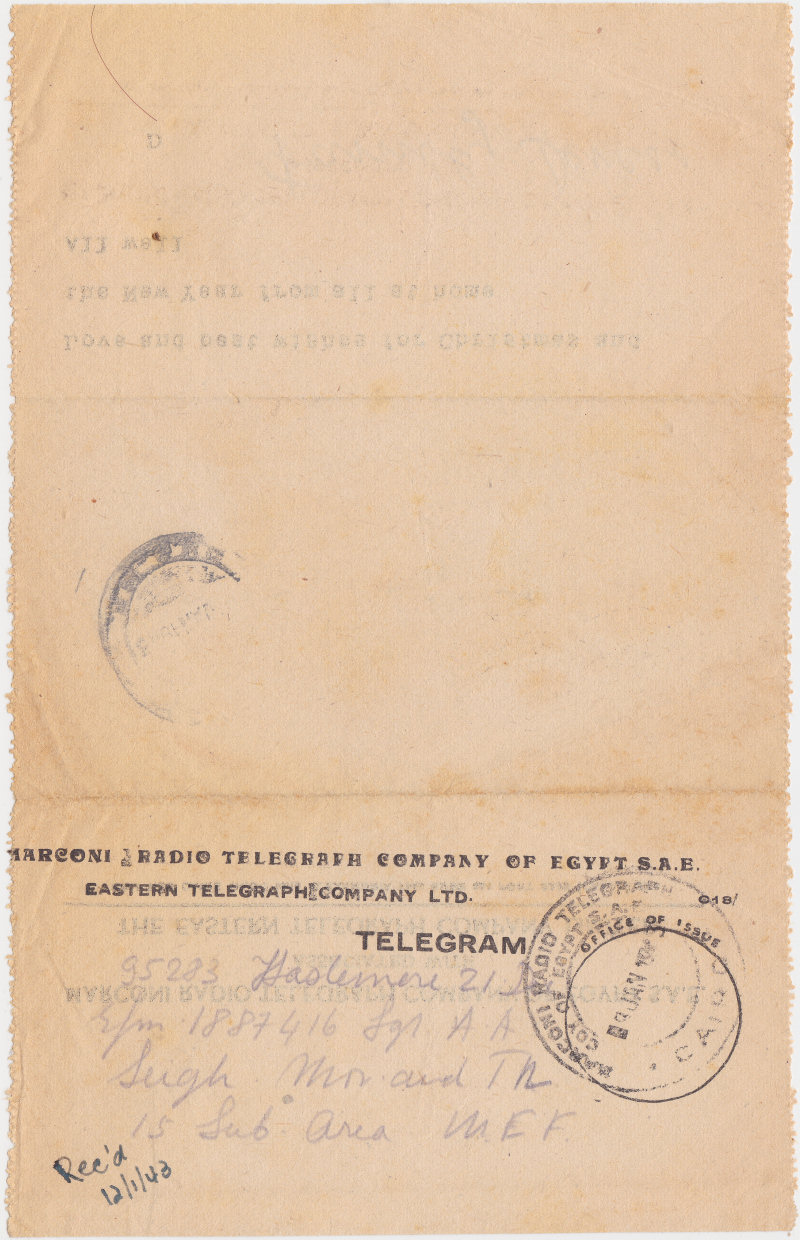
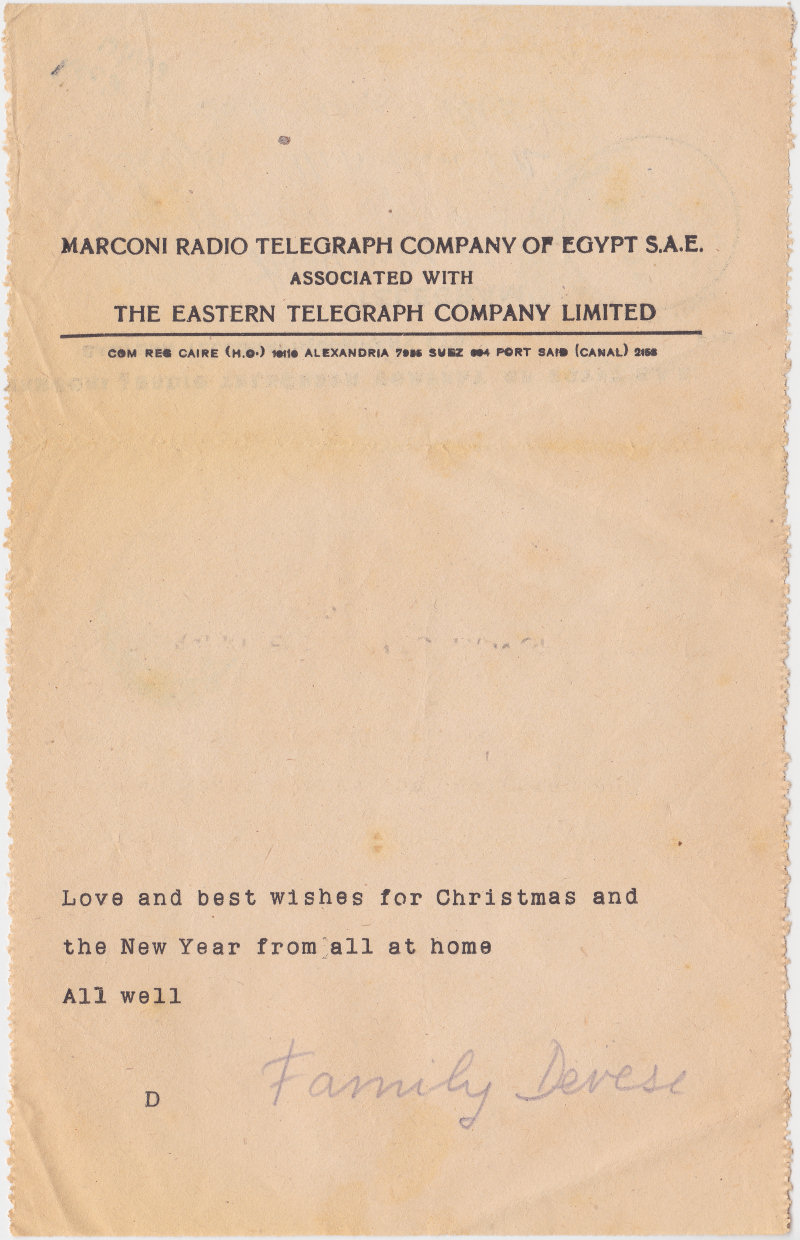
There is also an interesting imprint under the Eastern Telegraph name.
![]()
A similar Telegram of the Marconi Radio Telegraph Company of Egypt S.A.E., associated with the Eastern Telegraph Co. Ltd.
This is marked "C18 A" at the top. It is dated 6 March 1944.
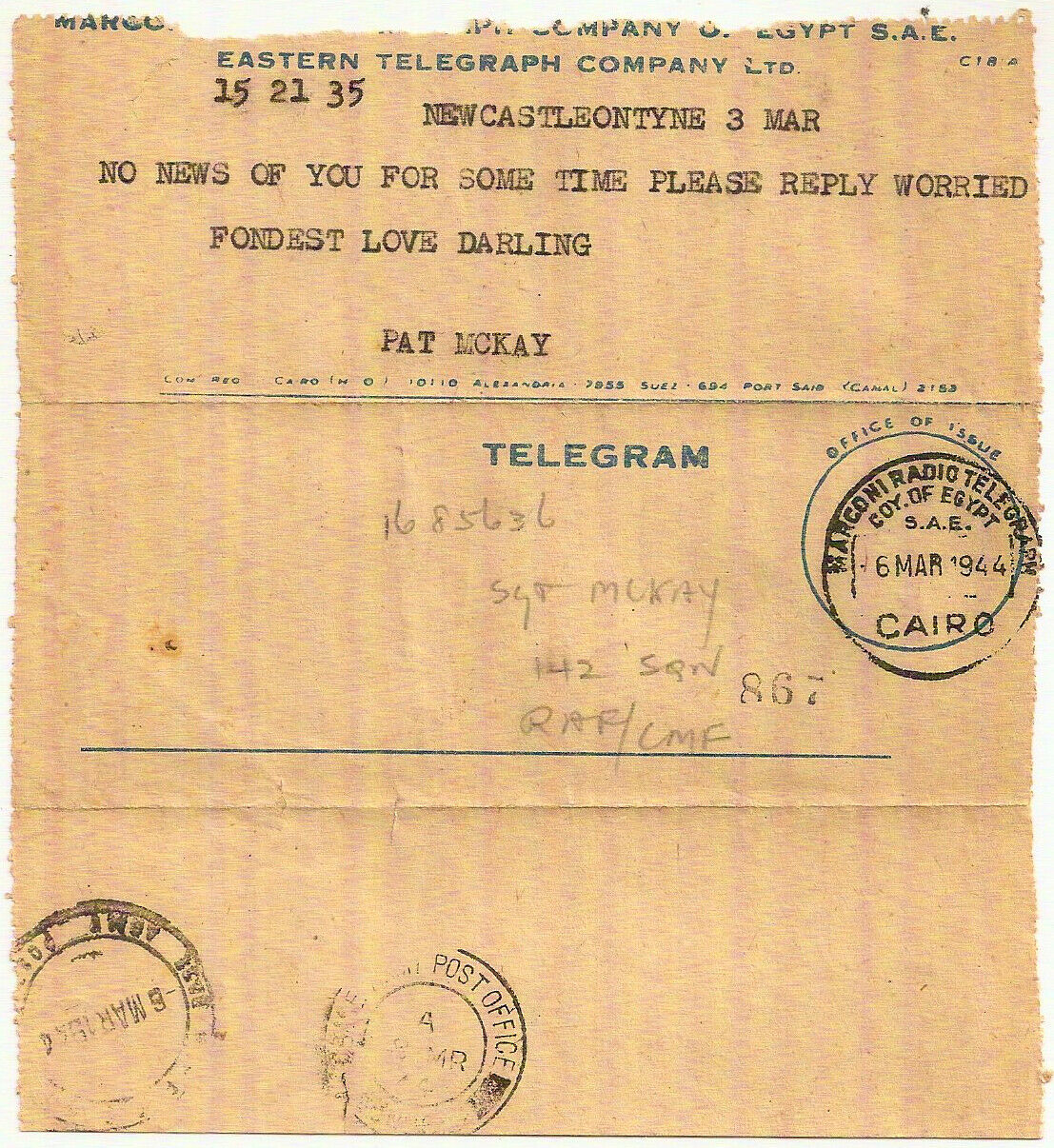
There is also an interesting imprint.
![]()
An undated Telegram envelope used of Egyptian State Telegraphs, marked "Form G 10" on the right.
This is in English, Arabic and French.
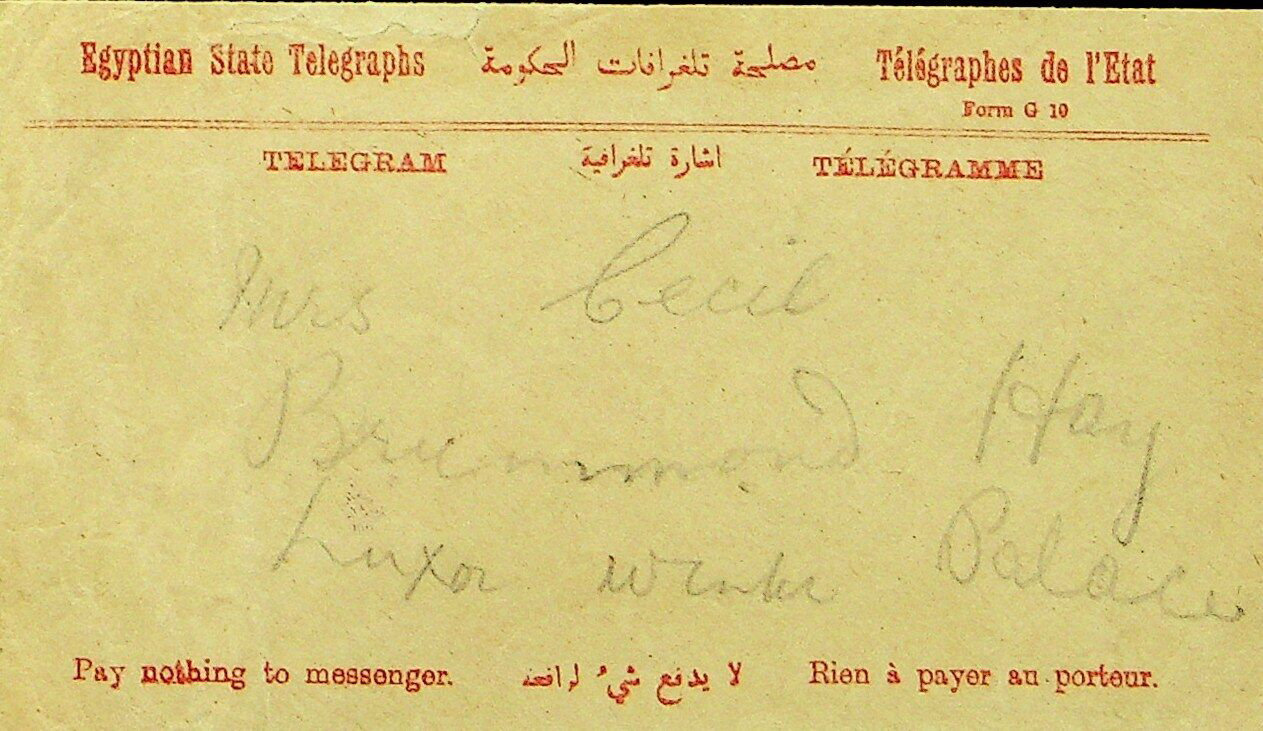
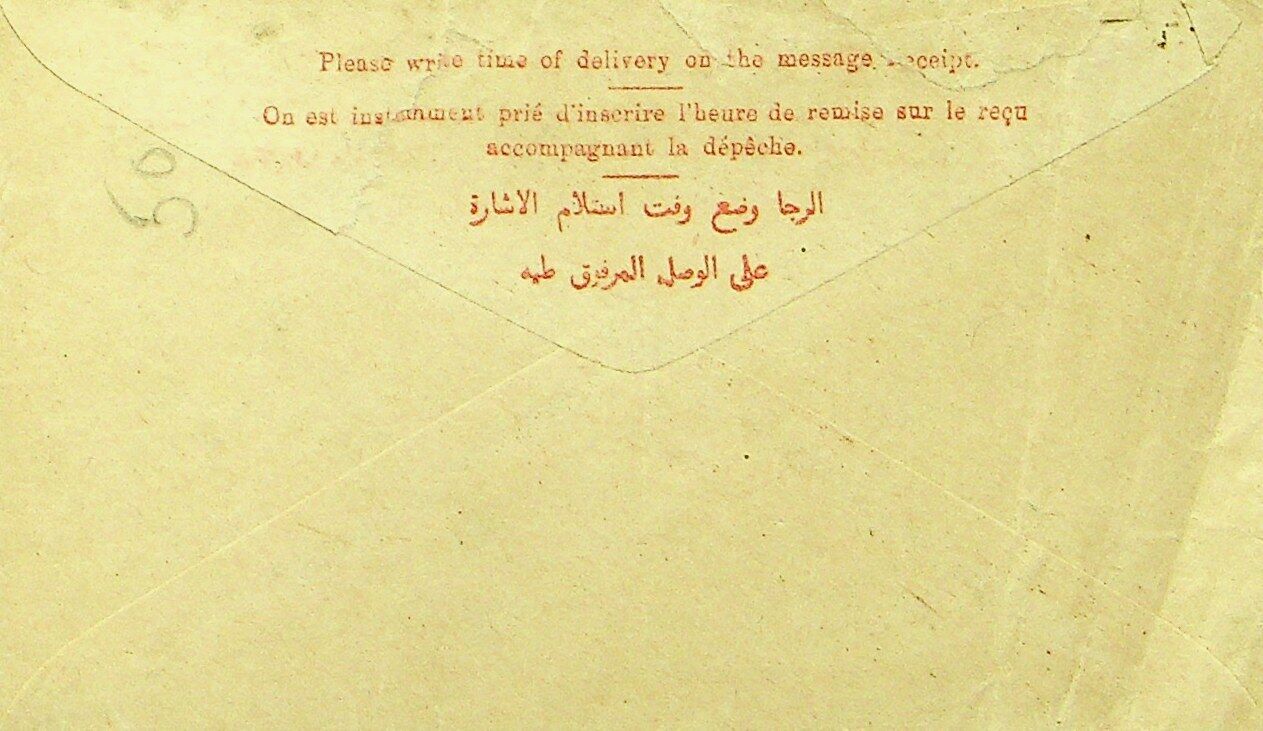
Image courtesy of AsianStamp - (click for listing).
Falkland Islands
I would have thought that they would have wireless telegraphy from an early date, but a U.S. Navy list of 1912 shows nothing for them.
According to Atlantic-cable.com, A cable was laid from Montevideo to the Falkland Islands for the Admiralty during the 1914-18 war,
but was abandoned afterwards. That suggests that by then they did have wireless communication.
The Dependencies were the first part of Antarctica to be brought under British control and date from 1908.
Unused red "Sent" form
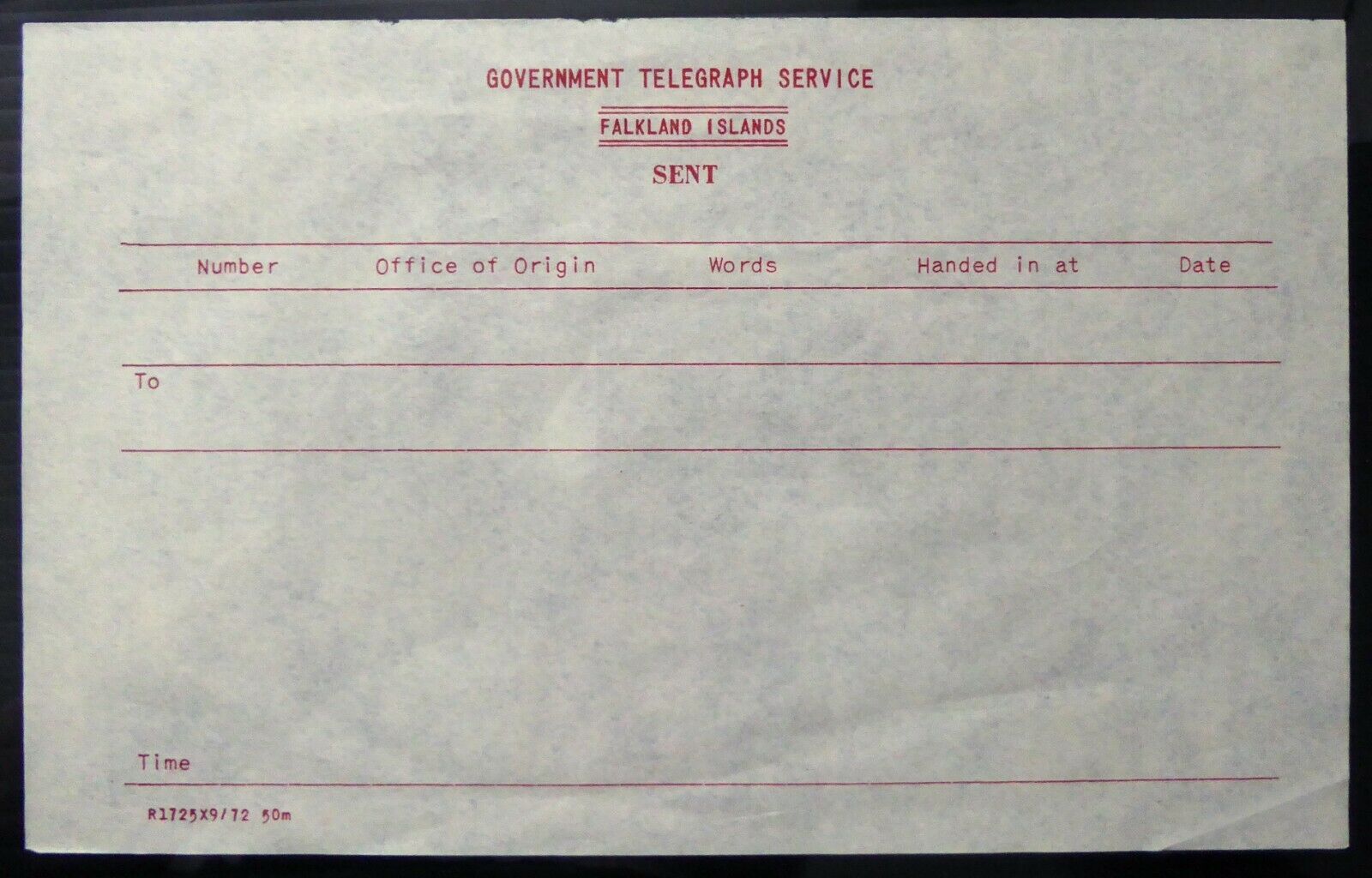
This has an imprint of "R1725x9/72 50m" at bottom-left, perhaps indicating a printing of September 1972.
Unused dark blue "Received" form with imprint of "P2538 P4776/32/401381 500 11/66 R. Ward 843" at top-left which I think indicates a printing of November 1966.
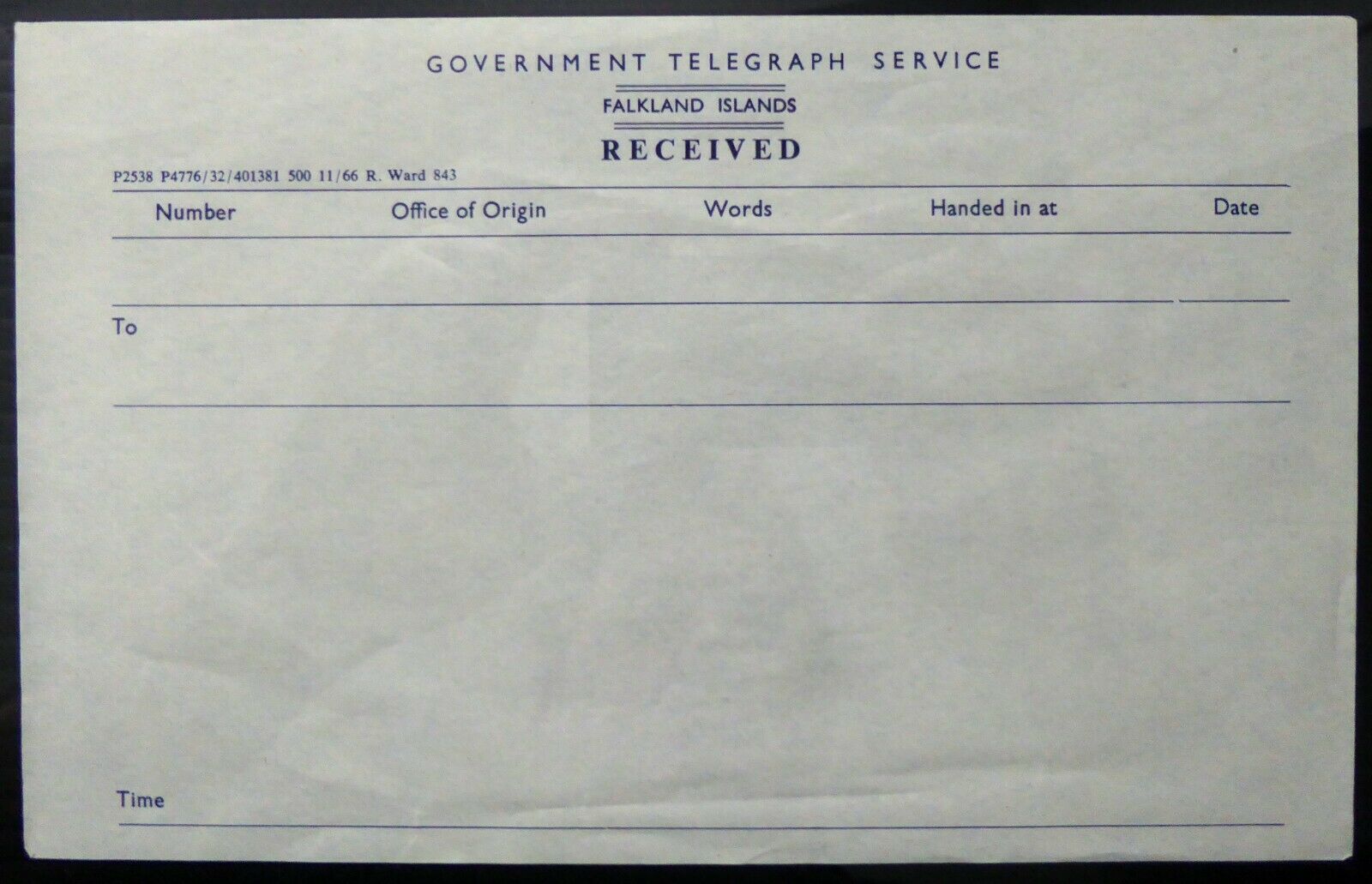
This is a short form, but appearts to be complete.
Unused dark blue "Received" form with "W. & S. Ltd" at top-left with the Dependencies included.
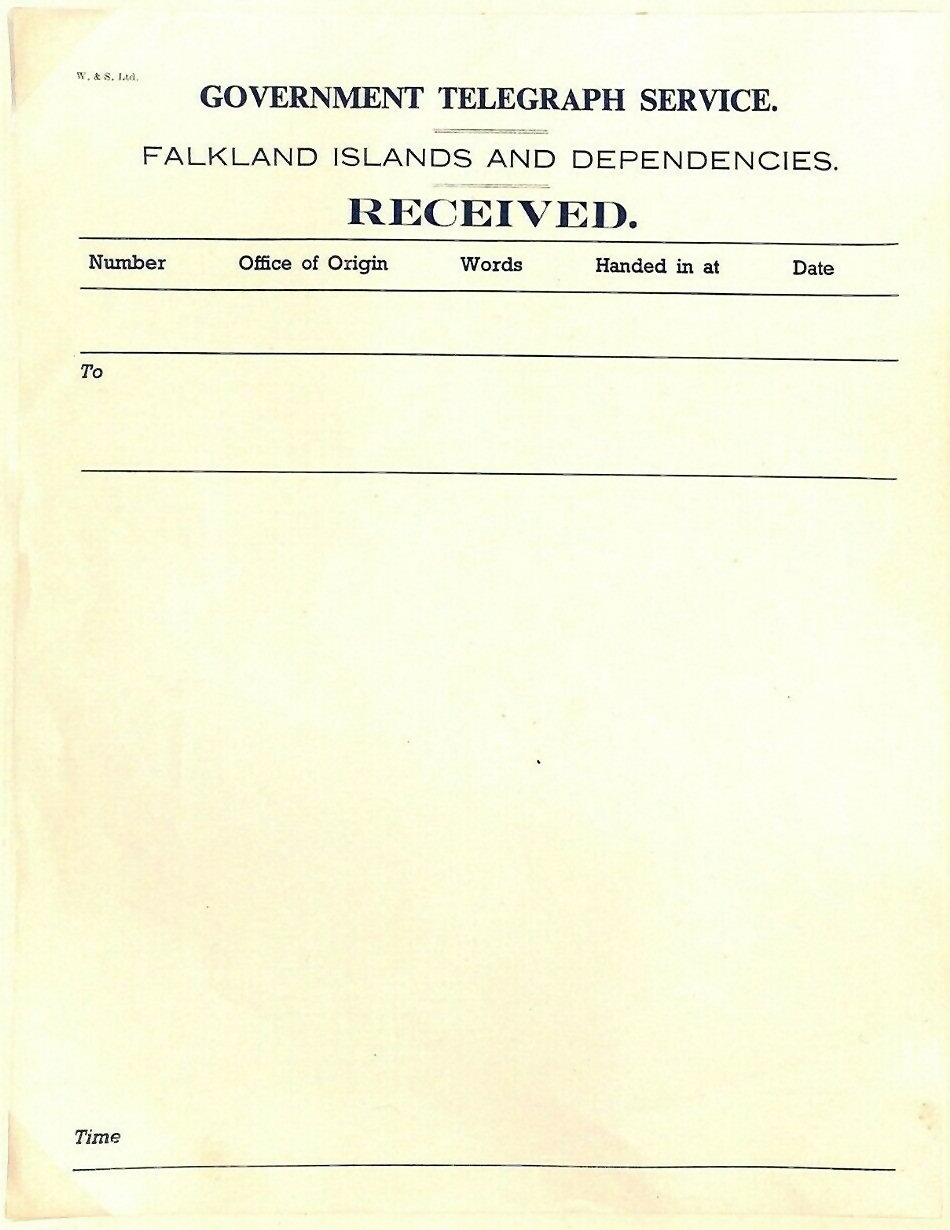
This is a much longer form. Image courtesy of Samwells Ltd.
click image for eBay listing.
Greece
I have seen it claimed that 'dash circles' as the perimeter of a cancel is an indication of telegraphic usage.
I know of British usage where this is certainly not the case, however there may be some truth in the case of Greece.
The first 4 images are courtesy of Les Bottomley who first drew my attention to these. The next two are mine.
For the purposes of interpreting place names and dates, some (upper-case) Greek Letters are similar to English (A, B, E, I, K, M, N, O, T, X, Y, Z)
but some are different (Γ→G,
Δ→D , Η→EE, Λ→L , Ξ→KS, Π→P, Ρ→R , Σ→S, Φ→F, Ω→O.
They start with ΤΗΛ. ΓΡ. which is an abbreviation of ΤΗΛΕΦΩΝΙΚΟ ΓΡΑΦΕΙΟ meaning TELEGRAPH OFFICE, followed by the place name.
According to Les, they were in use from 1900 to as late as 1969, but mostly 1911 to 1935, with 3mm high lettering and 36 dashes in the circle.
I think Les was taking this from another source, but does not say what that source was. He said there were about 136 named cancels.
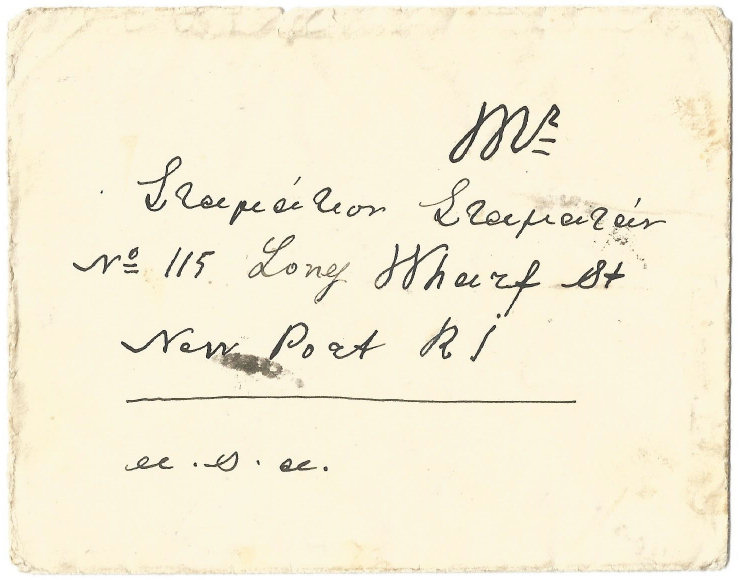
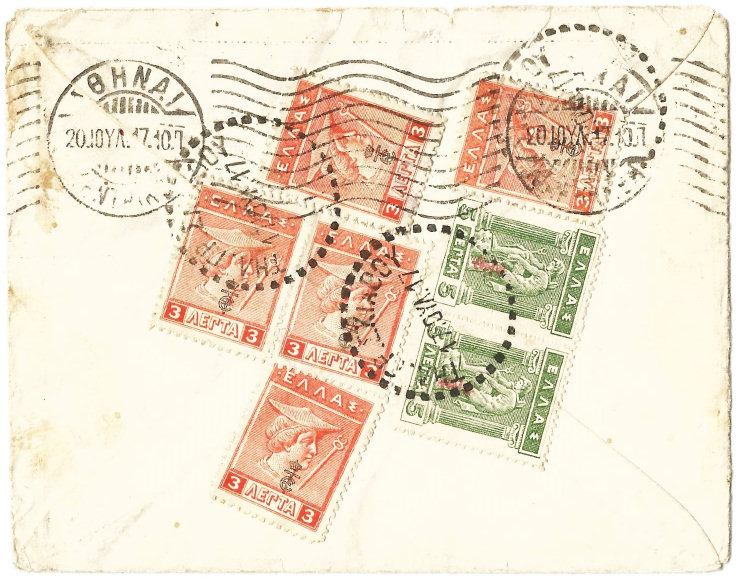
This would seem to be a delivery envelope for a telegram from SKIATHOS (ΣKIAθOY, 17 July) island to New Port, Rhode Island, USA, via Athens (AθHNAI, 20 July).
There are no arrival marks. The stamps on the back are all overprinted with Crown over ET. This series of stamps was produced both as Litho and Engraved variants. This is the the 1916 issue.
According to stamp-collecting-world.com :
"During World War I, the pro-neutrality government in Athens ordered that all the current postage stamps be overprinted to prevent their use by the pro-Entente provisional government of Eleftherios Venizelos."
It was applied to both variants. The stamps add up to 25 Lepta, so it is a bit strange that a single 25L stamp was not used. Images courtesy of Bram Leeflang.
This has a cancel saying ΤΗΛ. ΓΡ. ΛΙMNΗΣ or LEMNOS TELEGRAPH OFFICE. With the punch hole it could easily be thought to be telegraphic.
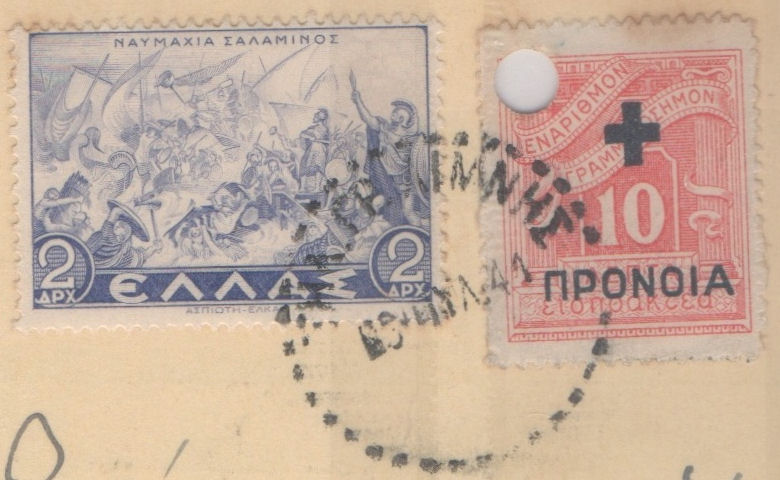
The complete item though looks like this. It appears to be a commercial card with two punch holes that are 3.125 inches (80mm) apart, a standard filing guage.
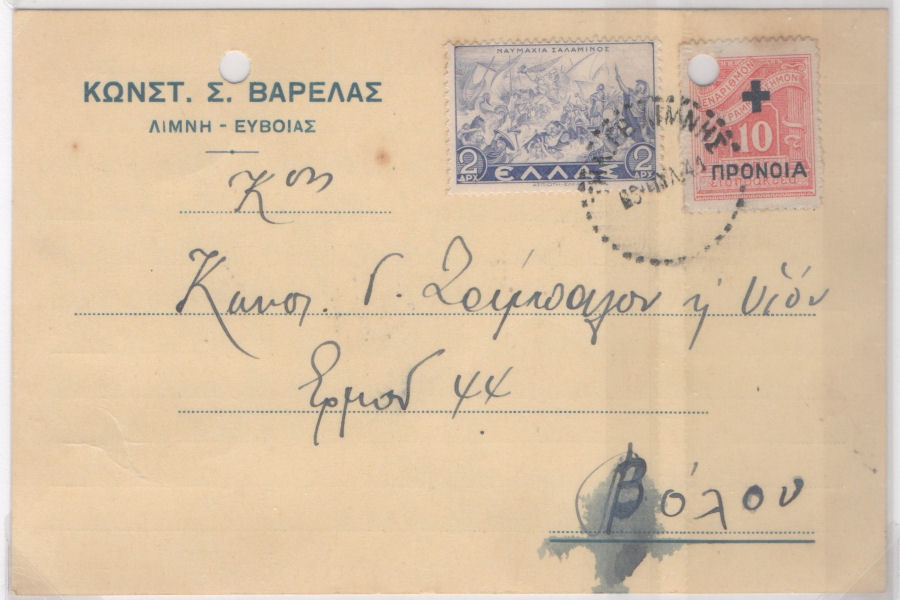
It bears a 2 Drachma stamp of 1937 and a 10L Postal Tax stamp of 1937. Courtesy of Les Bottomley.
Such cancels may well have been used on stamps on telegraph forms, and even more likely on delivery envelopes, but they were also on other things.
Telegram Seals.
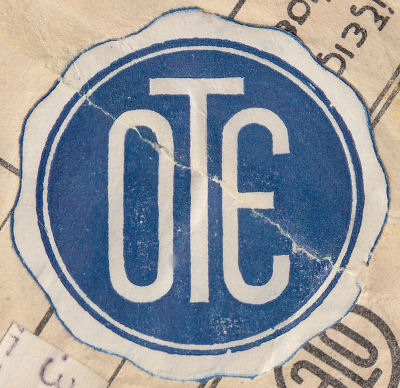
A few are known and shown in the section on seals.
Israel
The modern state of Israel was established in 1947. I have no information about telegraphy there.
A telegram dated 21 July 1960 from Zurich Switzerland to Holon. Israel. מברק at the top is Hebrew for Telegram.
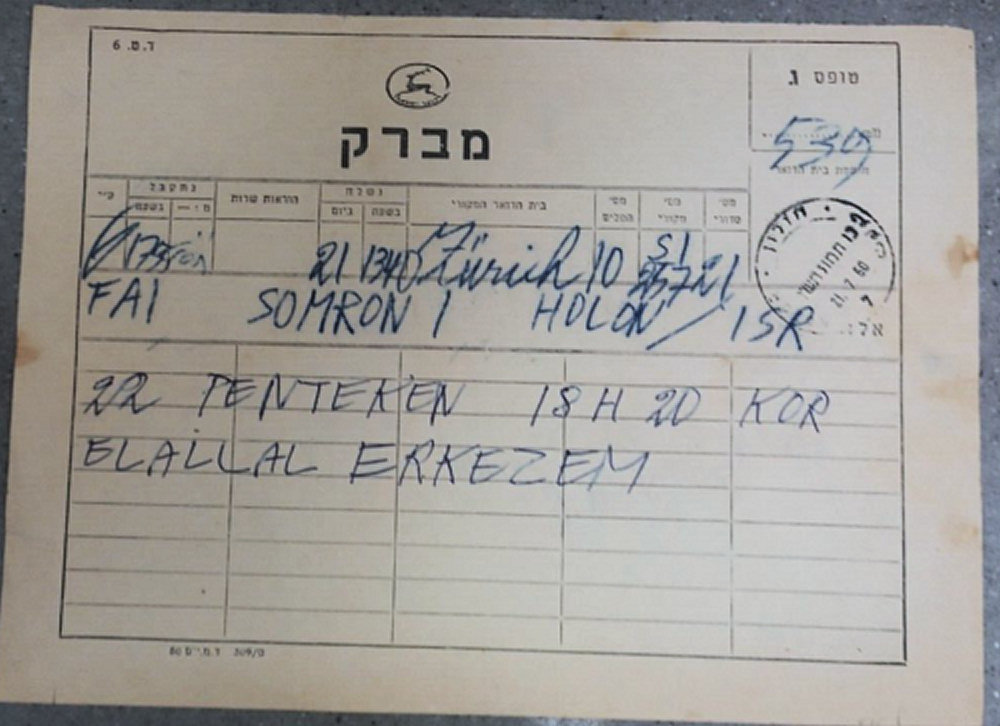
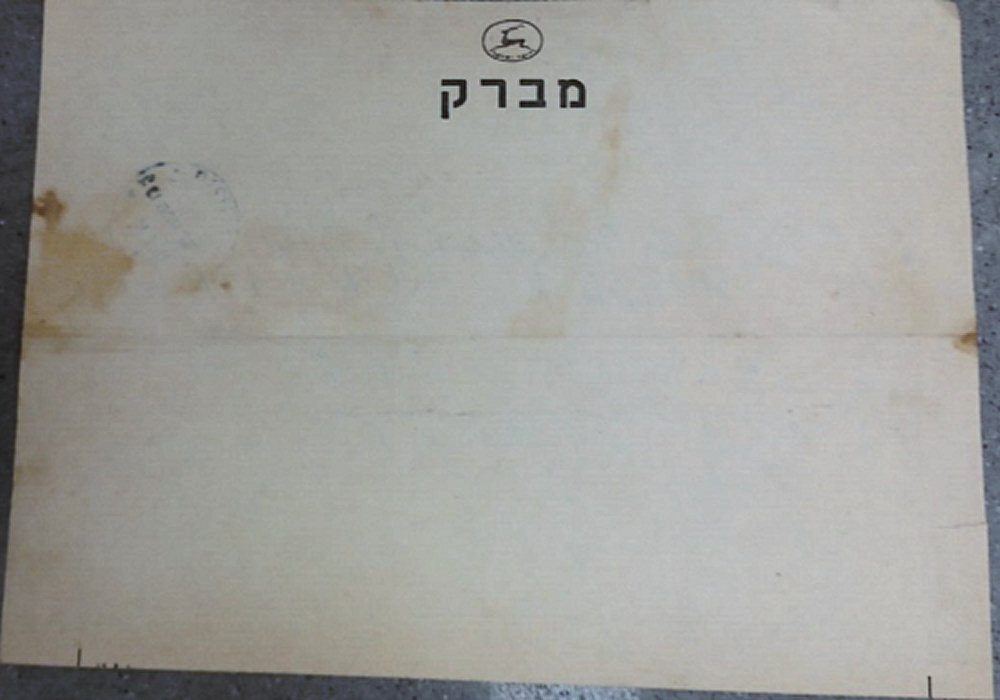
Images courtesy of Leonid of tegincoin on eBay. Click image for listing.
Korea
The GreatNorthern had a submarine cable laid between Fusan, (later Pusan and now Busan, 부산시) in Korea and Tsuschima (対馬, a Japanese Island) around1900-1901.
The Japanese had been growing in influence and took control of Korea in 1910. During the period 1910 to the end of World War II, the Imperial Japanese Telegraphs
used their telegram forms and seals in Korea, though apparently not their telegraph stamps.
Currently, what little information that I have regarding Telegraphy in Korea comes from the Korea Stamp Society (KSS), and I would particularly like to thank Ivo Spanjersberg for his help.
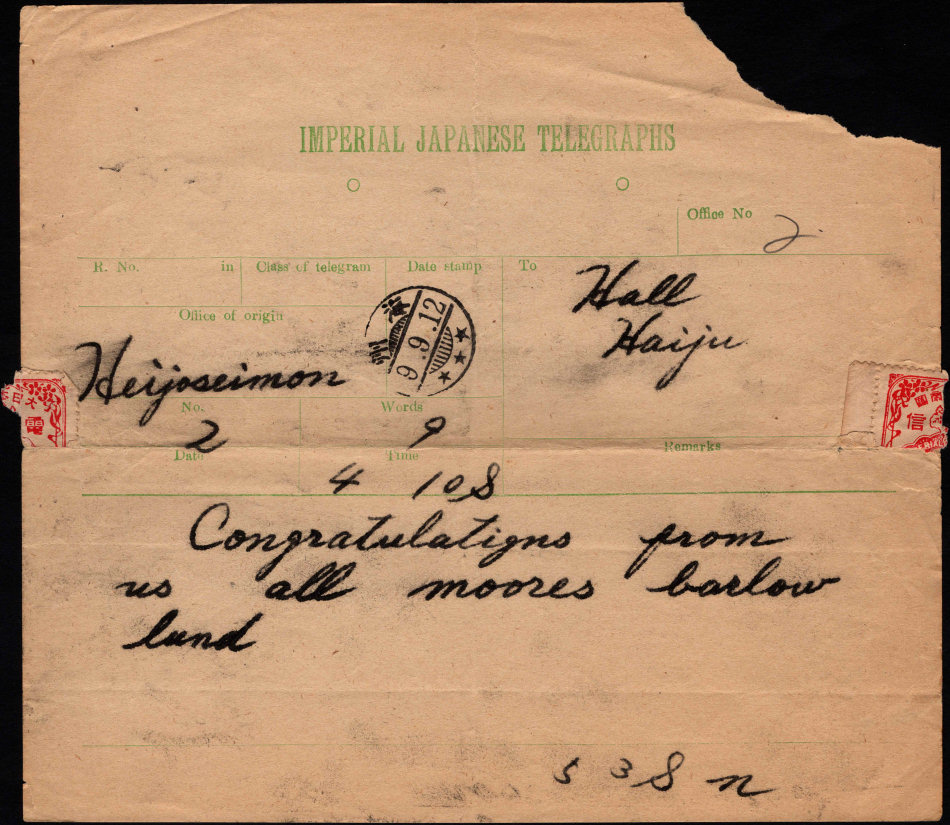
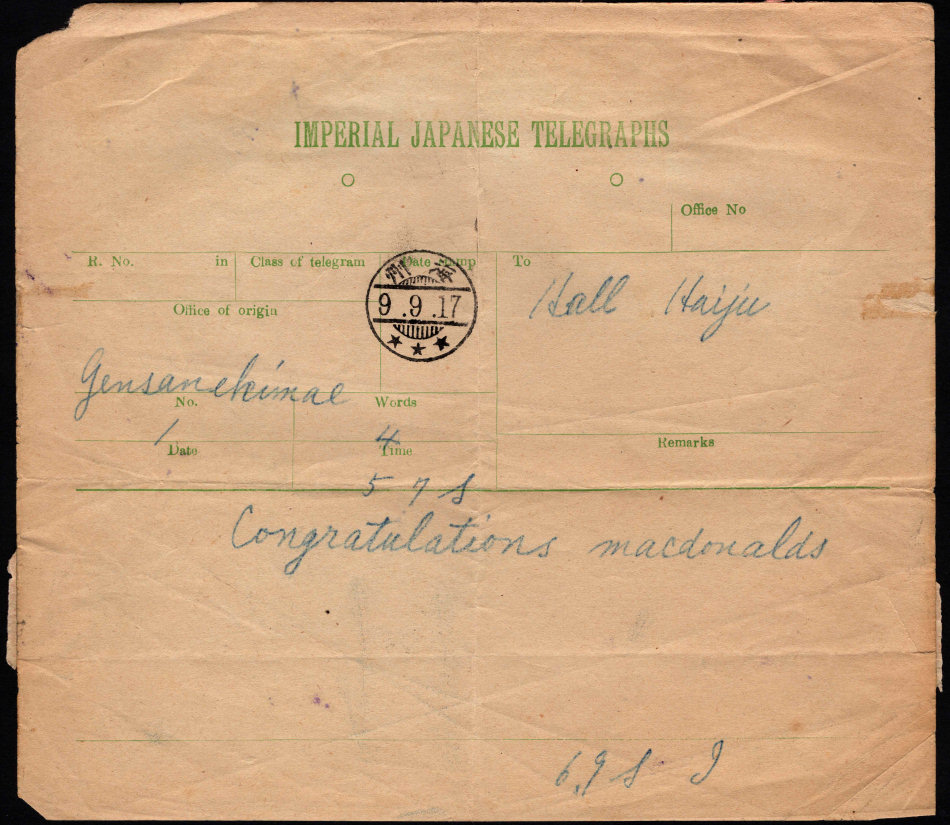
Two telegrams with cancels marked 海州 (written right to left). I see it is transliterated as Haiju which is now in North Korea. Confusingly there is also a place called 海州 (Haizhou) in China.
These images come courtesy of KSS \
Robert Finder (chairman).
With the end of WWII, it had been hoped that Korea would become a free country again, but that was not to be. The DPRK in the north appears to have made it difficult to follow what happened with telegraphy there.
The ROK in the south though should be amenable to study and I would welcome input from those interested.
My list of Japanese Telegraph cancels includes :
Busan, S.Korea = 韓国釜山
Malta
This may not be telegraphic, but is a punched high-value similar to Cyprus above.
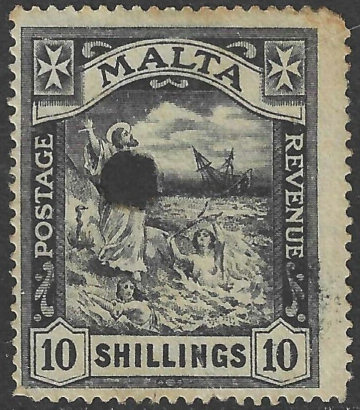
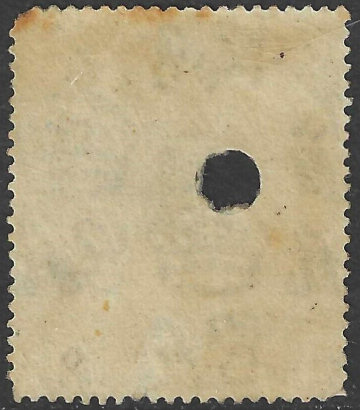
I normally get permission to use images from eBay, however eBay does not allow contact with the seller, James Gulliver, instead saying :
"We couldn't find an answer. Unfortunately, due to the high volume of messages this seller has received, they are unable to respond to your question right now.
We suggest reviewing the item again to see if your answer is in the seller's listing."
Since I cannot ask, I will fall back on the "fair use" doctrine and show it anyway. This is described as the 1921 issue and the watermark is visible on the back.
Seller stampsbyjamie, click image for listing.
A receipt for £2 paid to register a telegraphic address of "KANEGOODS" for a year on 18 September 1967.
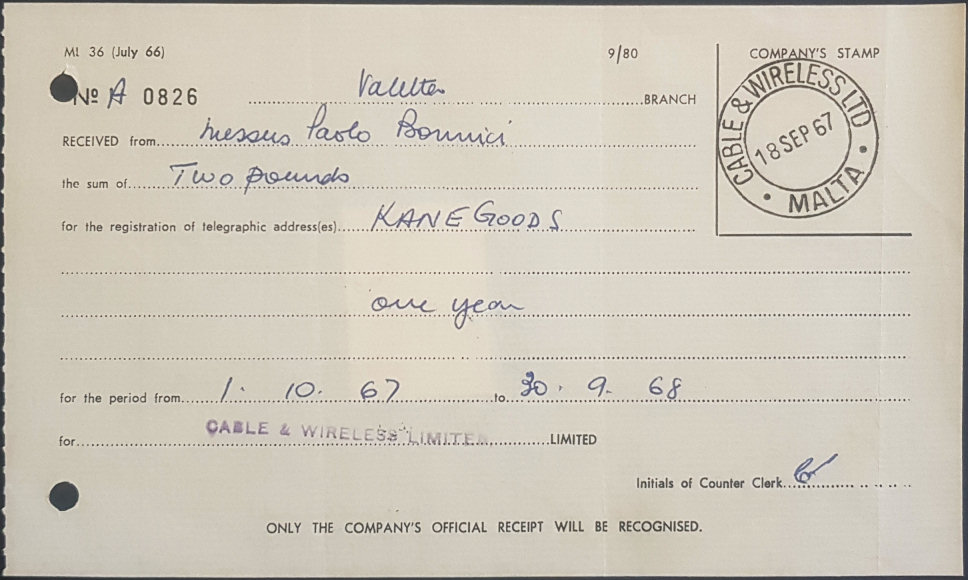
It has a date-stamp of Cable & Wireless, Malta.
The back has a 2d postage stamp to pay a receipt tax (on items from £2 to £100), which has the same C.D.S. on it.
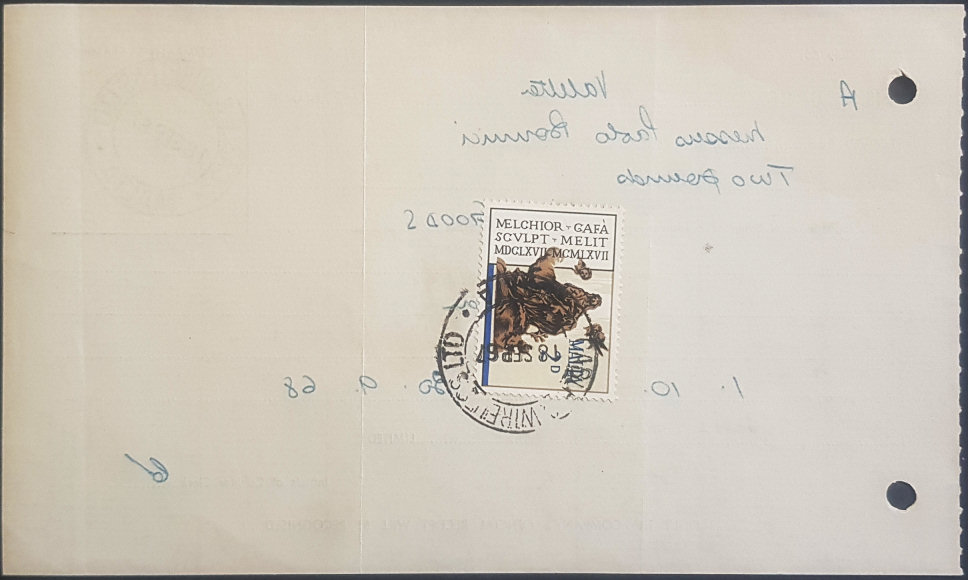
Other 2d (or less) postage stamps are likely to have similar hand-stamps on them for the same purpose.
These images are courtesy of Matthew Axiak, who tells me the rate was 1d before around 1931/32 and 4d from August 1970.
This became 1c7 after decimalisation in May 1972, and it rose to 2c sometime in the early 1980s before being abolished by the late '80s or early '90s.
Additionally, I show a number of items of stationery from Malta under the Eastern Telegraph Co.
Mauritius
The JIBO 10.VI.52. Army Signals cancel of 10 June 1952 indicates a military presence, presumably left over from WWII.
The next day the 2 stamps were cancelled at Port Louis on the Northwest coast.
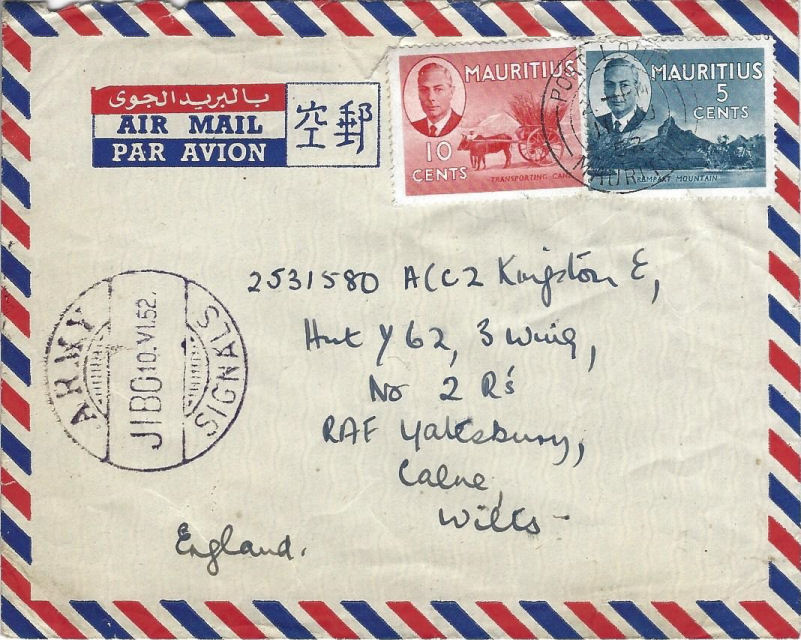
The image comes courtesy of Anders Uggla from Sweden, who tells me that the King's African Riffles Regiment was there at the time.
The code should either indicate this regiment, or perhaps the location of their camp.
The EIMM 3.XII.54. or possibly ETMM 3.XII.54. Army Signals cancel of 3 December 1954
A 2½d British stamp was added and cancelled the same day, again at Port Louis.
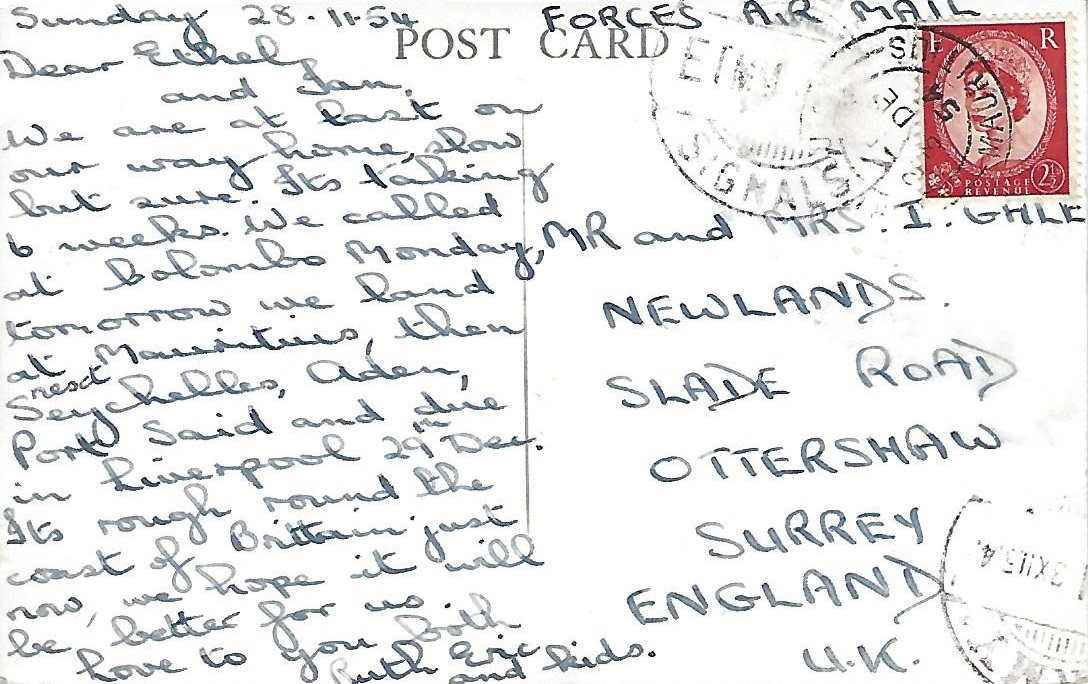
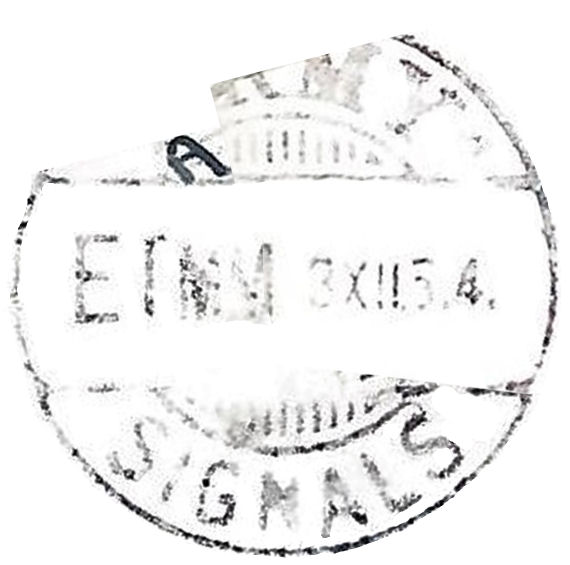
The other side indicates the location of the cabin where this was probably written aboard H. T. 'LANCASHIRE'
formerly HMT Lancashire before the mainmast was removed.
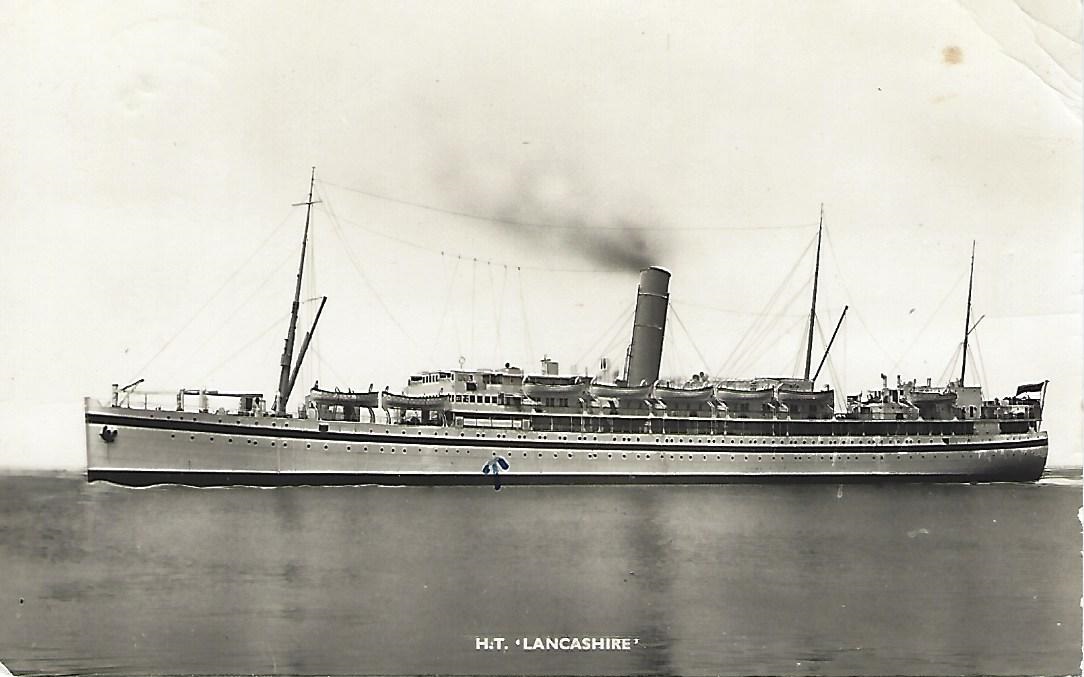
It was returning from the "Far East" back to Britain. The Army Signals cancel was presumably applied aboard the ship and the card handed to the
Mauritius postal authorities on docking. Images courtesy of Anders Uggla.
New Zealand
Victorian Stamp Duty Postal Fiscals used 1905, 1908 and 1912 for something related to Telegraphs.
It is by no means certain what exactly. The 3/- and 5/- could have been used to send a telegram,
but the £4 and £10 are perhaps more likely to have been used for accountancy purposses.
Does anyone know more about this usage ?
Stationery
Cablegram dated 14 December 1945, in conjunction with Cable & Wireless Ltd.
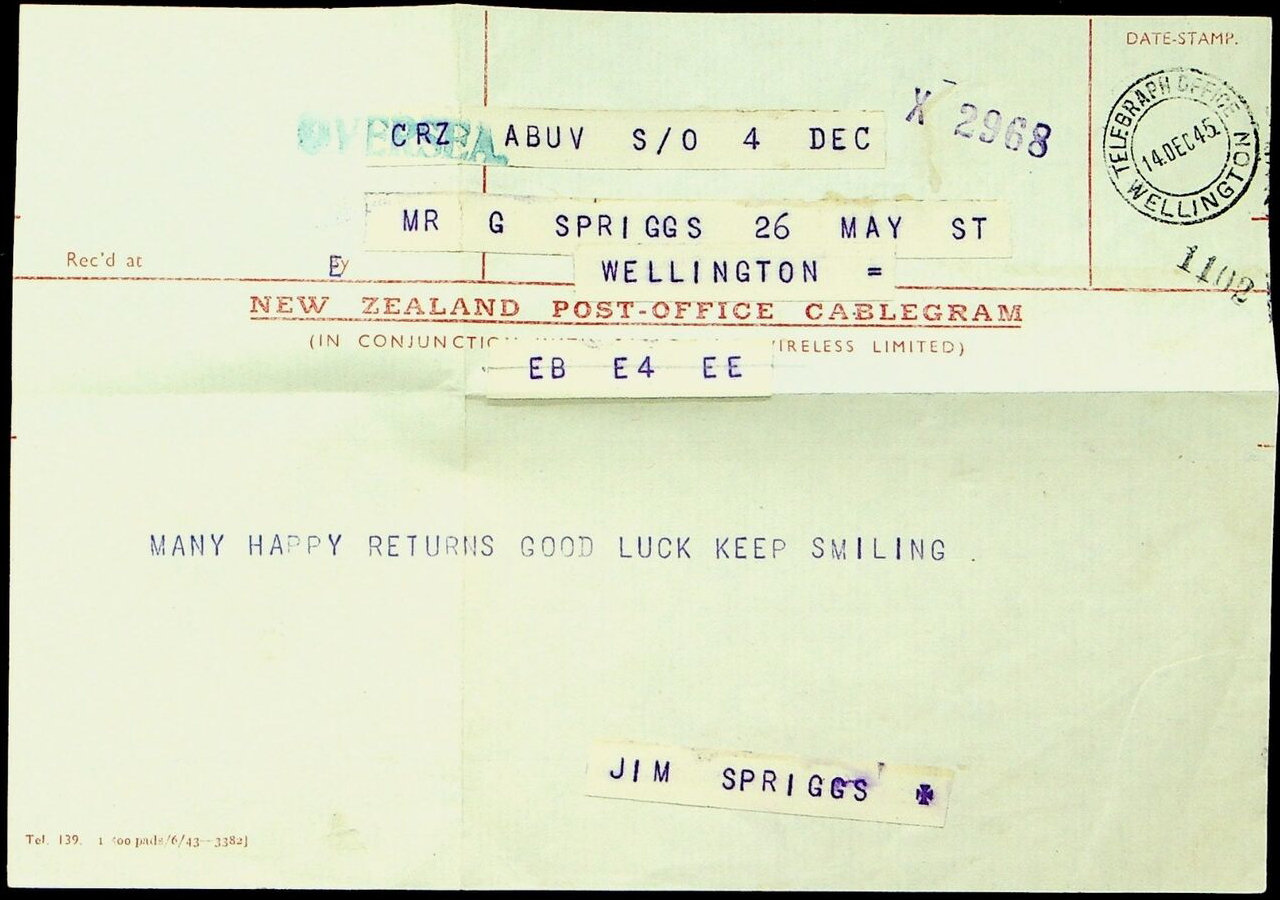
Imprint at bottom-left with "Tel. 139. 1 400 pads/6/43—3382J", which I take to imply that it was printed June 1943.
Back with envelope.
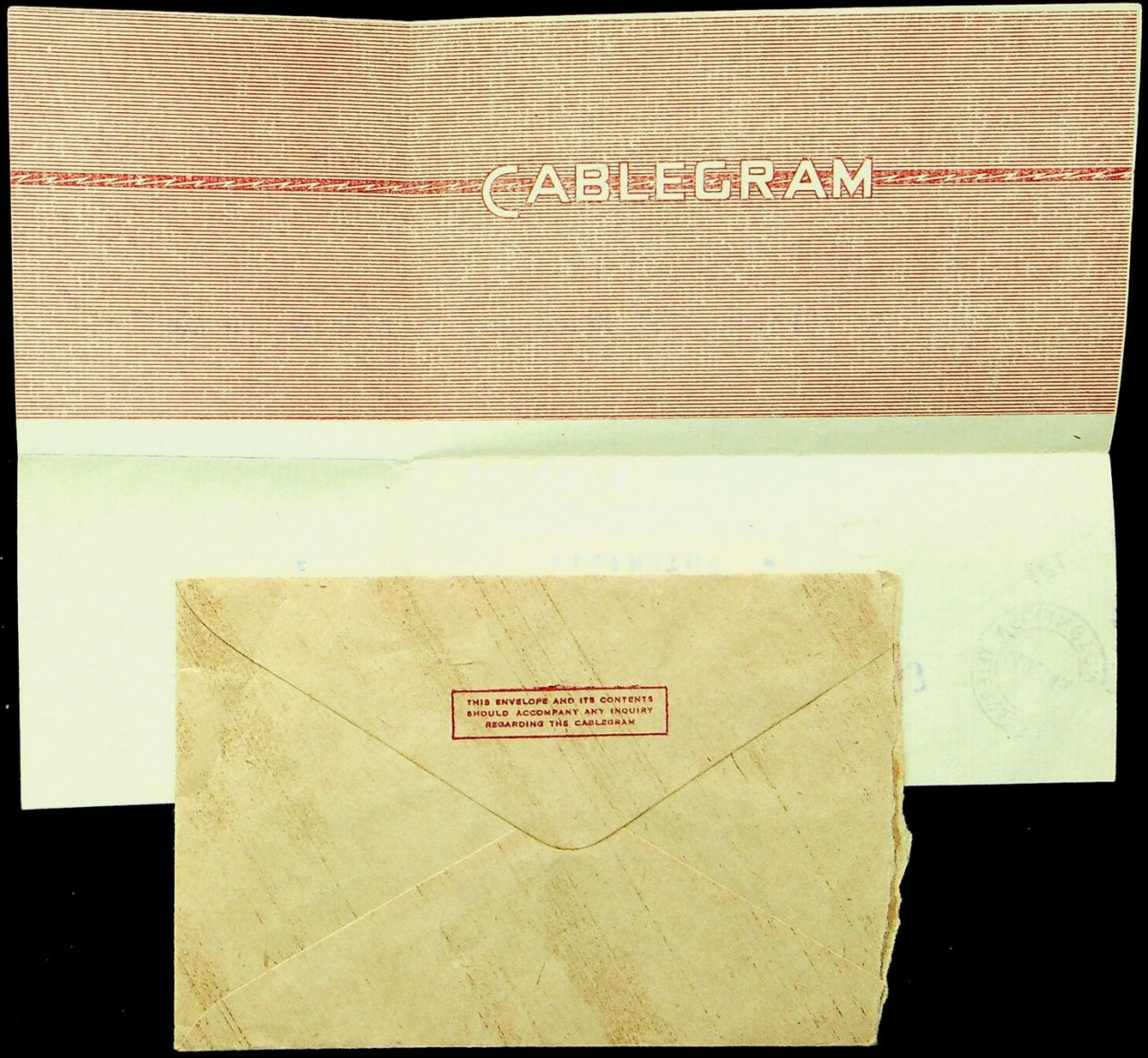
Envelope front.
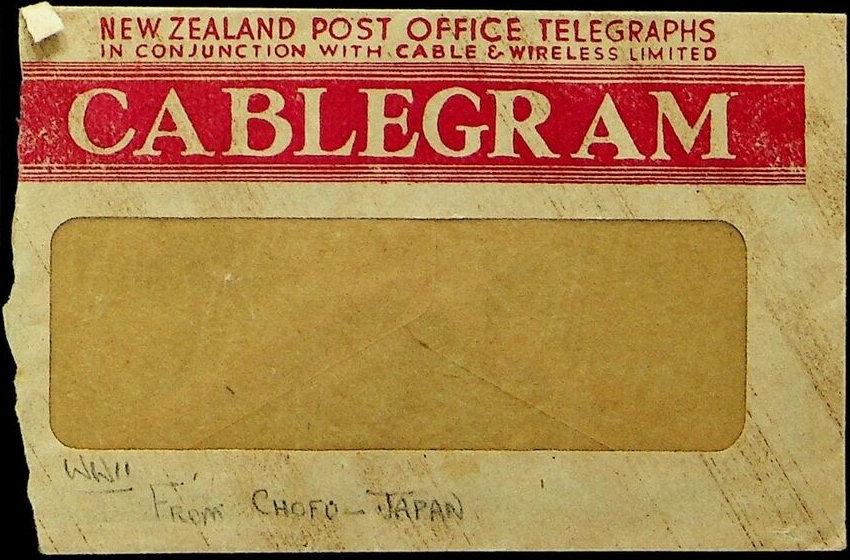
1945 Cablegram images courtesy of AsianStamp - (click an image for listing).
16 February 1959 Telegram envelope front and back.
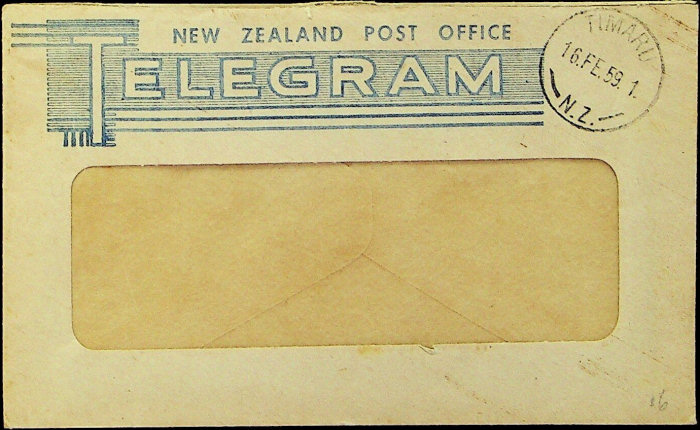
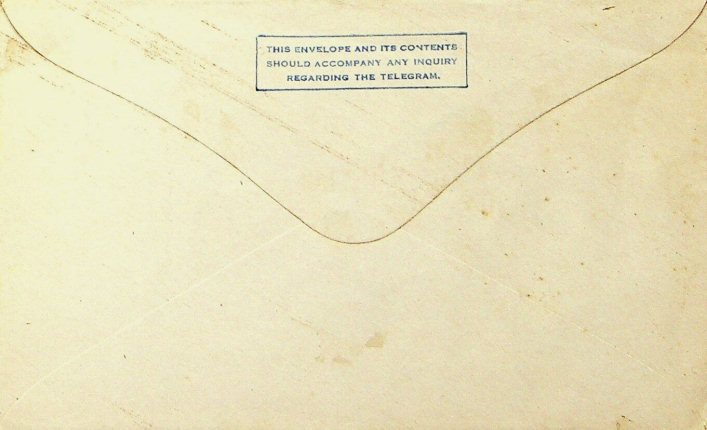
Telegram envelope of 1959, courtesy of AsianStamp - (click image for listing).
1962 Telegram envelope front and back.
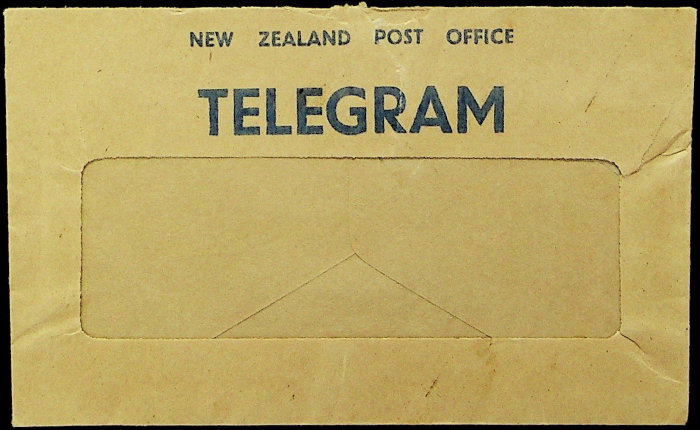
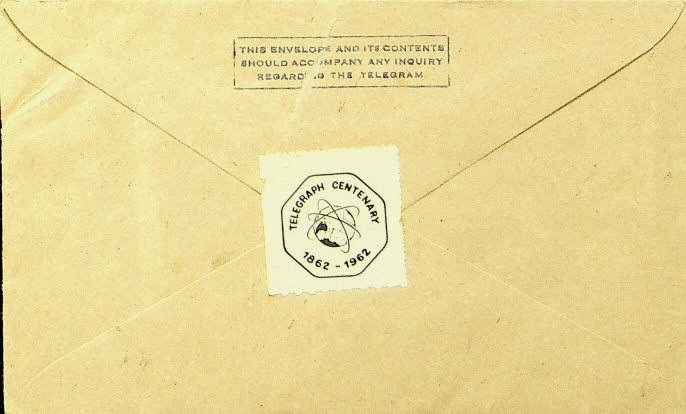
Telegram envelope of 1962, courtesy of AsianStamp - (click image for listing).
Telegram Seals.
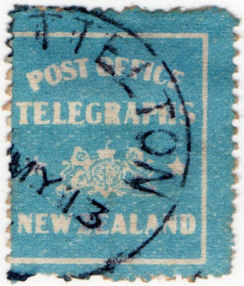
A few are known and shown in the section on seals.
Nova Scotia
The examples I show here pre-date the entry of Nova Scotia into the Dominion of Canada (1867).
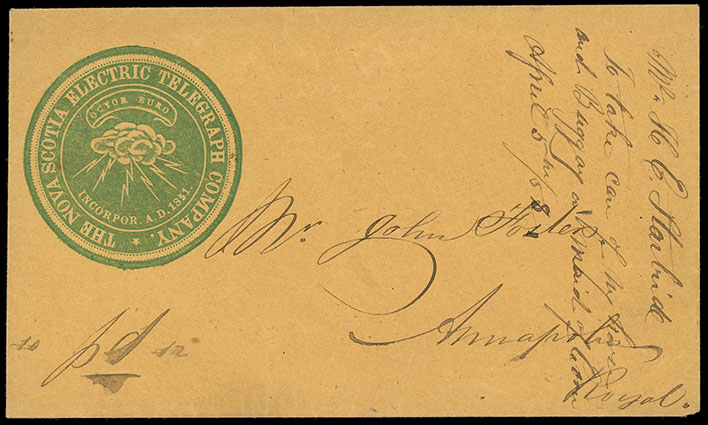
The Nova Scotia Electric Telegraph Company - incorporated 1851
This is 1858.
Courtesy of Schuyler Rumsey Philatelic Auctions. (click on image for listing).
Pakistan
Pakistan was created aa a separate entity on 15 August 1947 when India was divided. Initially, Pakistan was in two parts, West and East.
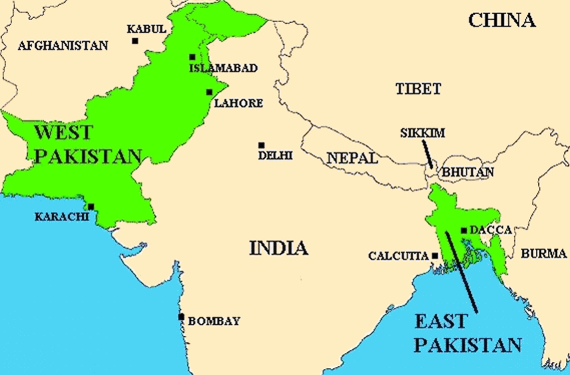
In December 1971, East Pakistan became the independent Bangladesh, with Dhaka (Dacca) as its capital.
Anyone have telegraphic material of Bangladesh ?
Initially Pakistan still needed to rely on facilities that had been created prior to the partitioning, by overprinting.
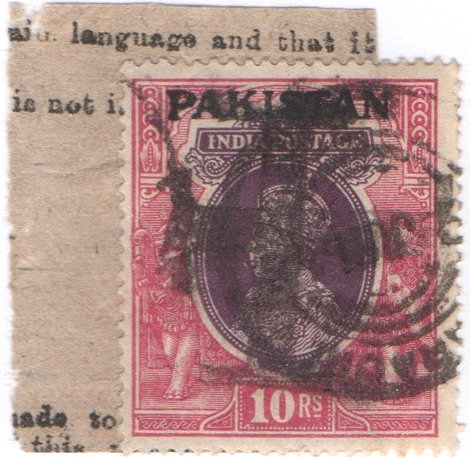 |
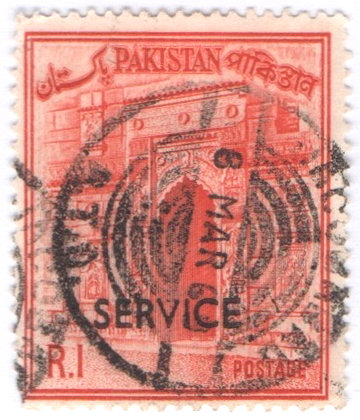 |
| An overprinted 10Rp stamp used in 1948. Pakistani (bilingual) stamps became available later that year. Courtesy Les Bottomley. |
1Rp stamp used in 1969. The cancel is in the style of India, but now with P.T.O. at the bottom. Courtesy Les Bottomley. |
Stationery.
A selection of Telegraph forms. Courtesy Les Bottomley.
Not sure what the "B. T. B." stands for.
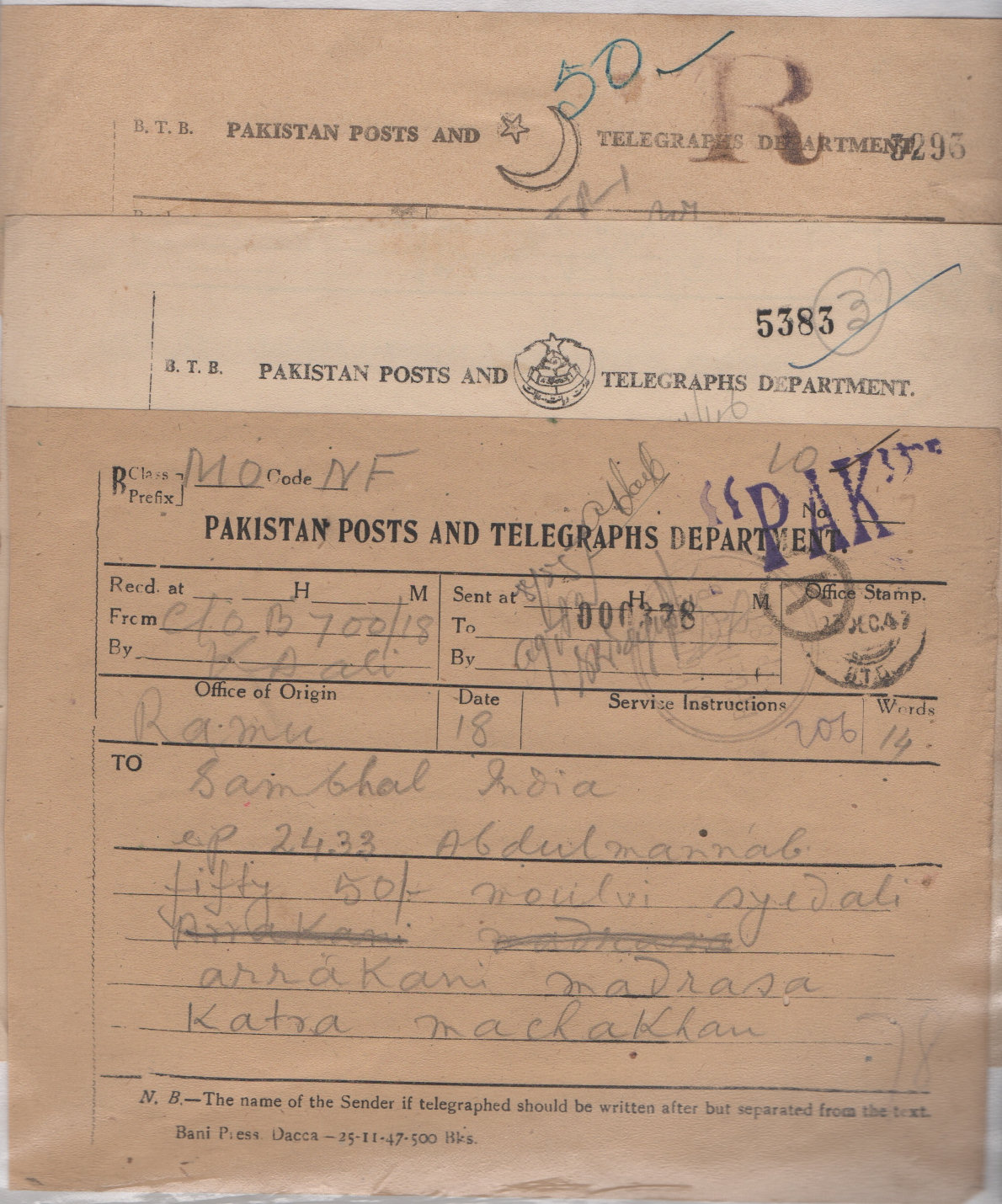
A Telegraph form used 20 March 1971.
C.-Book. (T&T). This has a large, boxed "SU" which I take to mean "SUKKUR".
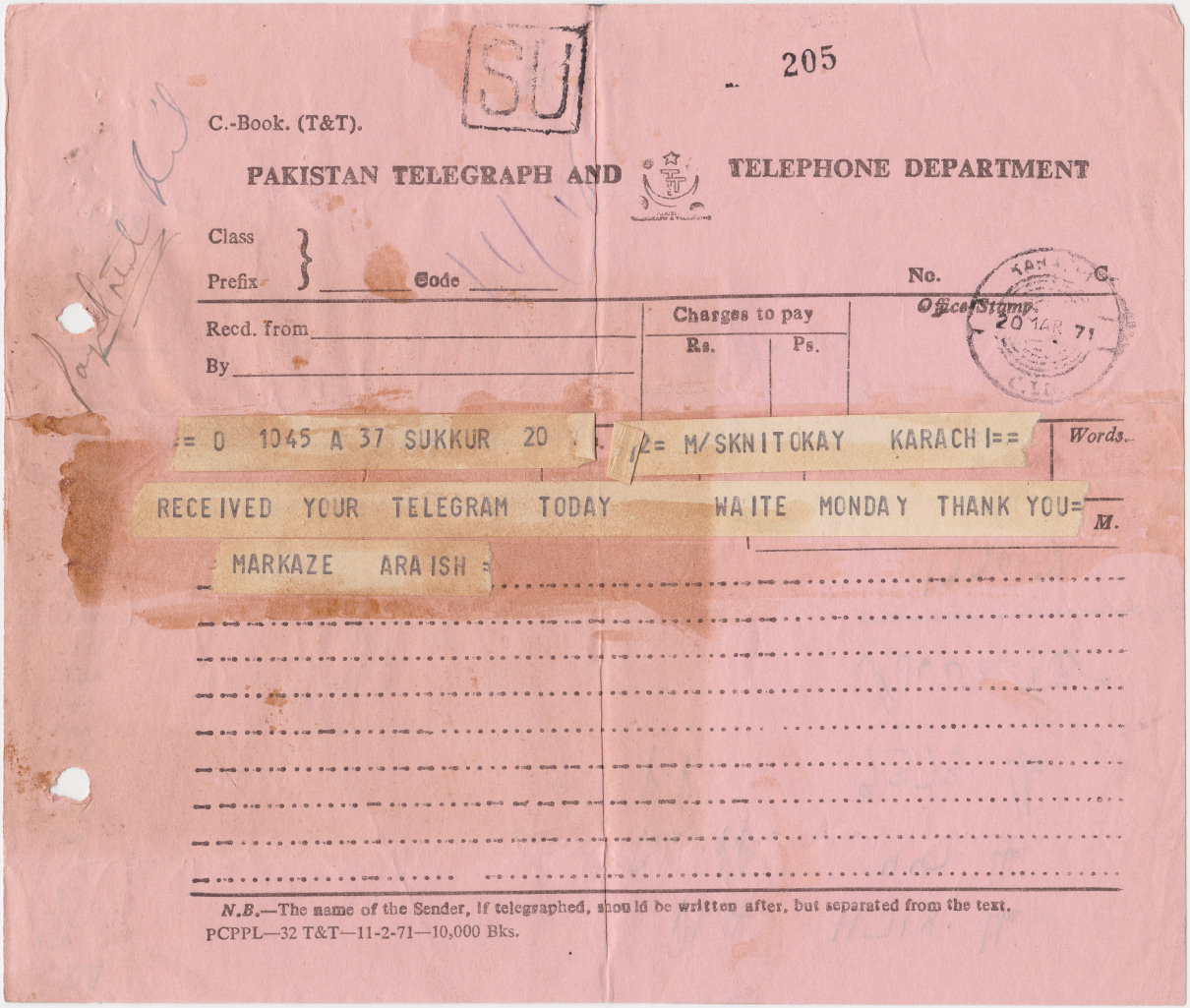
This has an imprint at the bottom reading "PCPPL—32 T&T—11-2-71—10,000 Bks."

A Telegraph form used 18 January, but I'm not sure if 1971 or 1977 as the Karachi date-stamp is unclear.
C-3. at top-left. Again "SU".
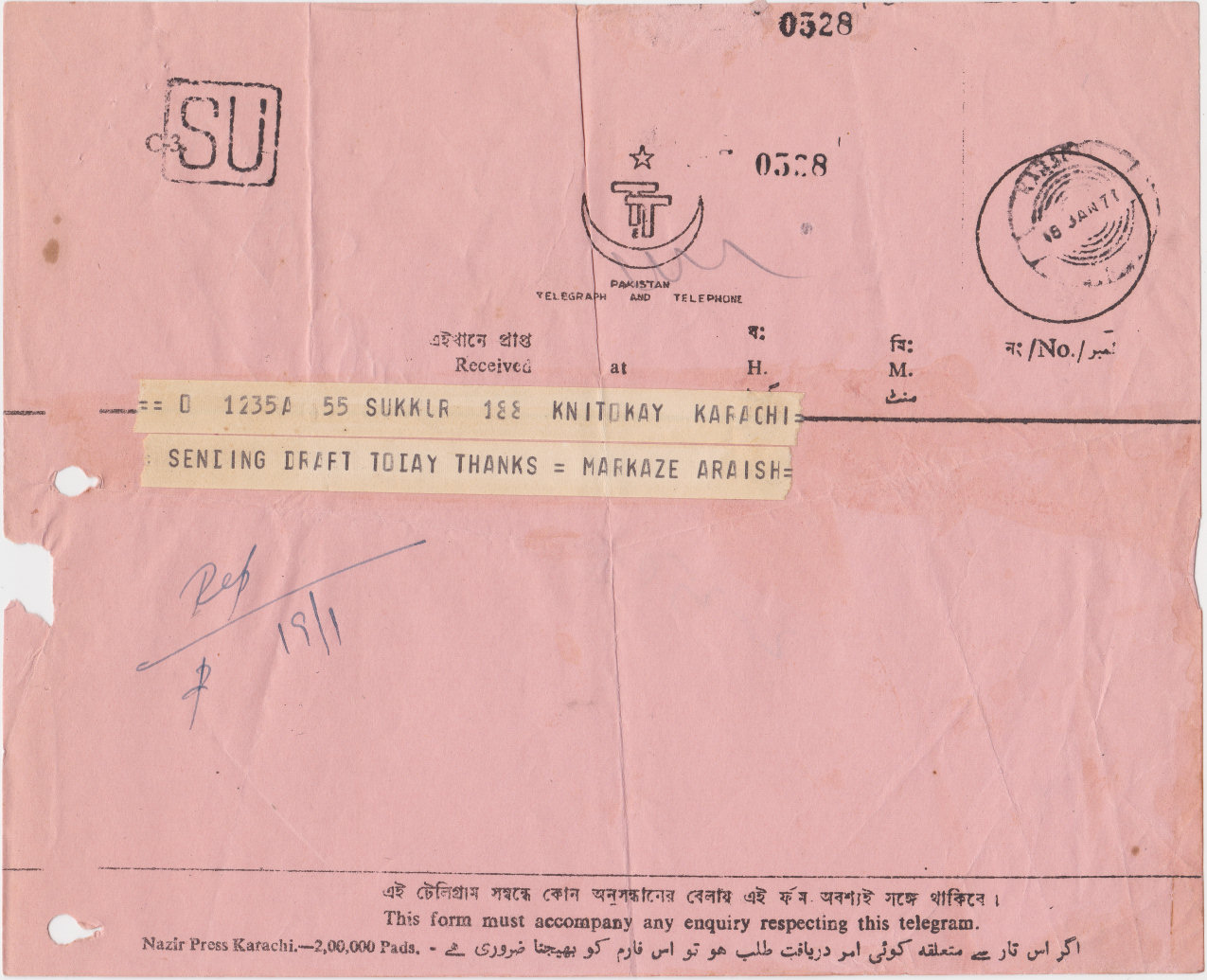
This has an imprint at the bottom reading "Nazir Press Karachi.—2,00,000 Pads -" it continues in what I would guess to be Urdu :-


Palestine
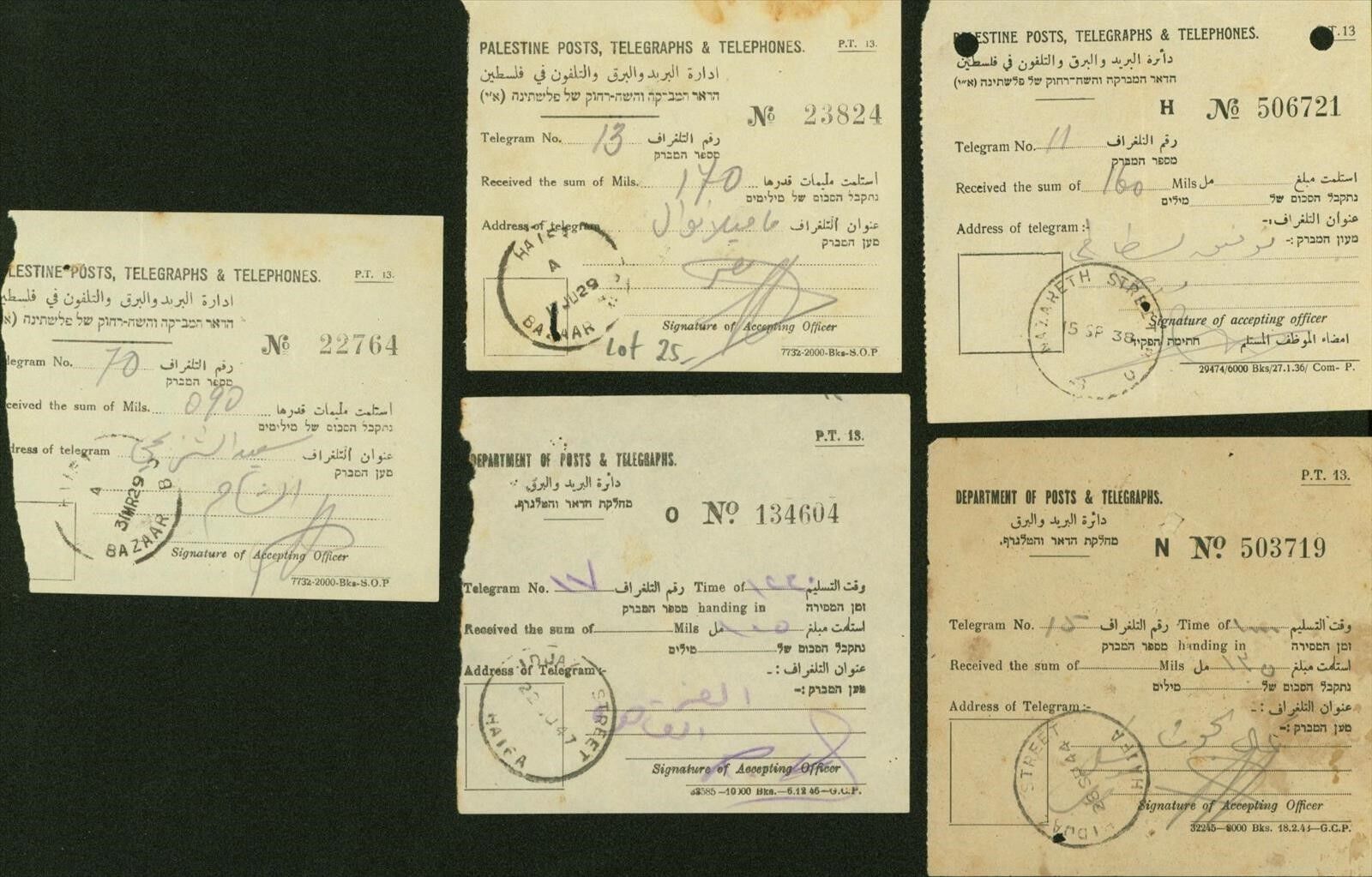
A selection of 5 telegraph receipts (4 different) from Haifa, spanning 1929 headed "Palestine Posts, Telegraphs & Telephones" to 1947 headed "Department of Posts & Telegraphs".
The writing was in Arabic, Hebrew and English, with various imprints at the bottom-right with ""S.O.P.", "G.C.P." or "Com-P". Despite these changes, the form number remained P. T. 13.
Images courtesy of vgstamps2015 on eBay (click image for listing).
A form used in Haifa on 9 August 1943, headed "Palestine Posts, Telegraphs & Telephones" with instructions in 3 languages. Hexagonal Censor mark.
An unused sending form P.T. 110. headed "Department of Posts & Telegraphs" of 1946 for "Foreign Telegrams and Radiotelegrams only." Again in 3 languages.
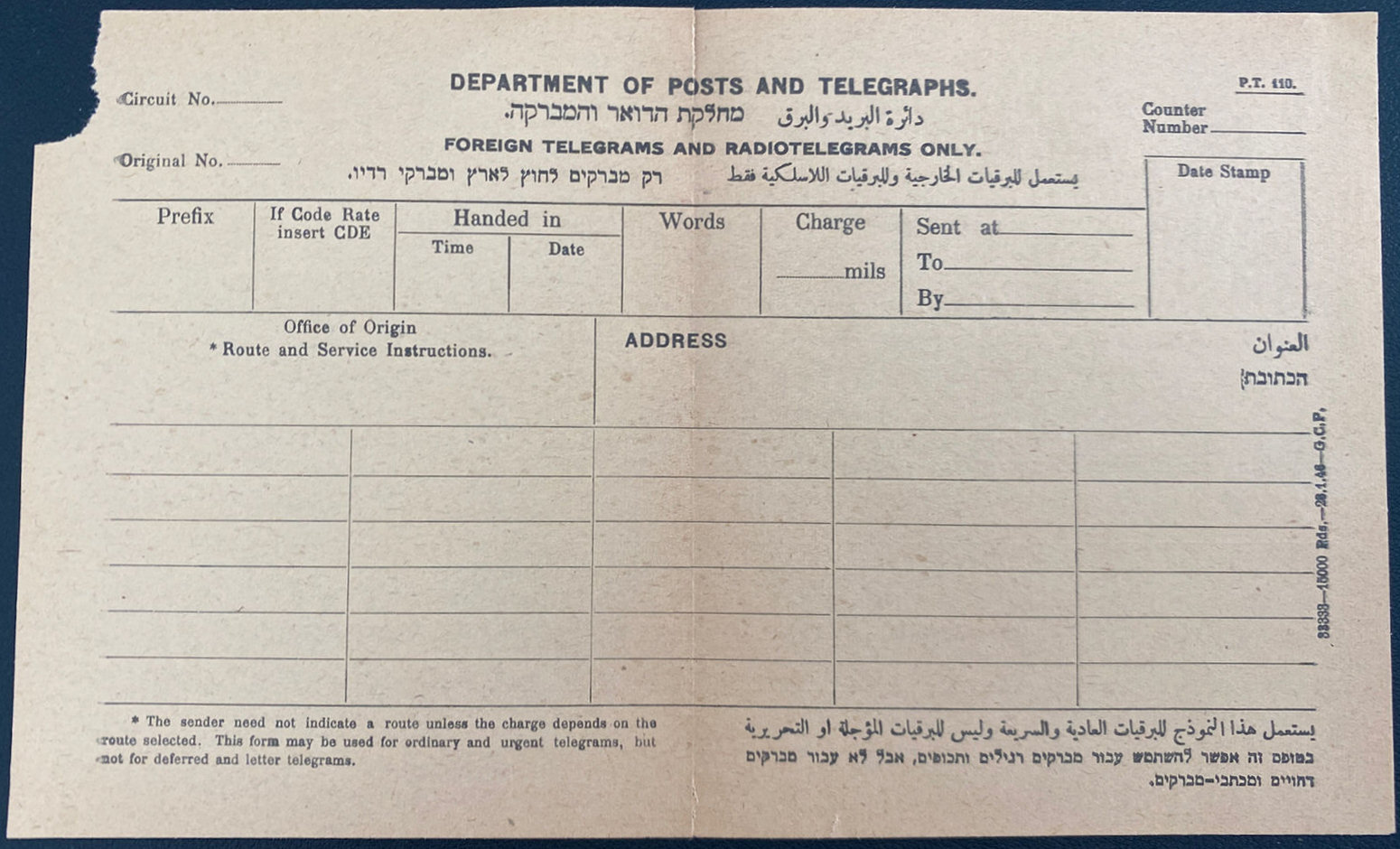
The imprint on the right reading (I think) "33338—15000 Rds,—28.1.46—G.C.P.", so presumably 15000 printed by G.C.P. on 28 January 1946.

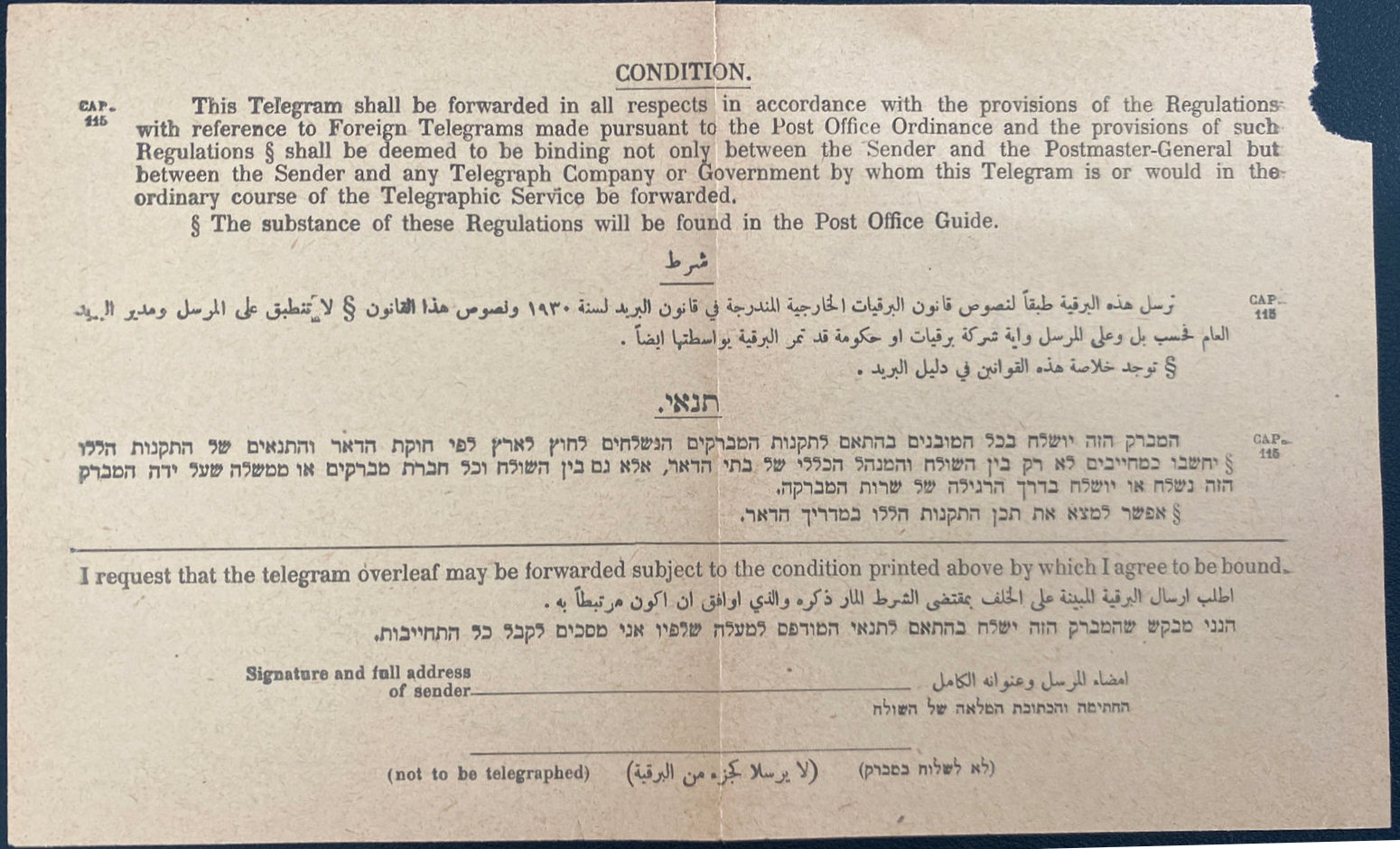
The back has the conditions of service. Photos courtesy of Aztec Collectables, click on one for the listing.
Papua and New Guinea
The eastern half of a large island just to the north of Australia, the western half being part of Indonesia.
Posts & Telecommunications Telegram envelope dated 30 September 1908.
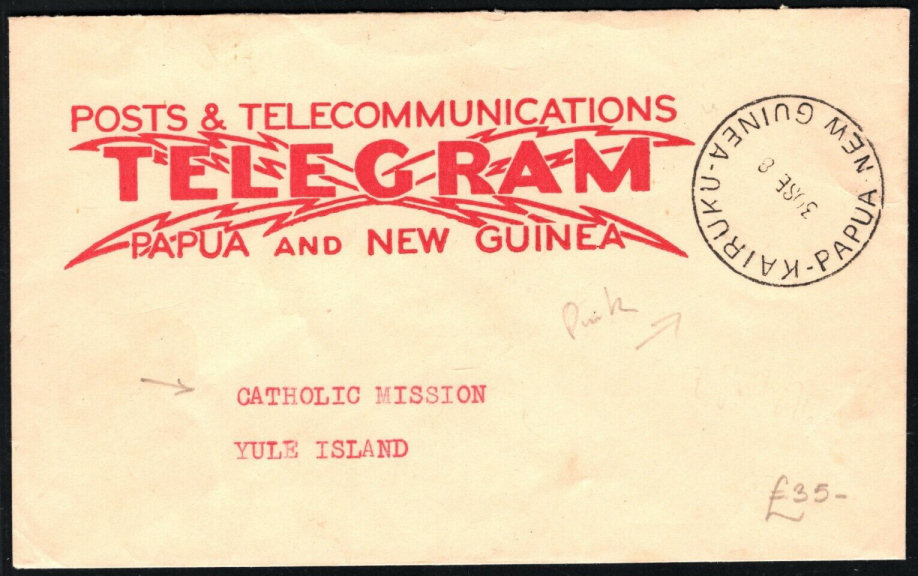
It was to Yule Island in Kairuku District. Image courtesy of Samwells Ltd.
click image for eBay listing.
Poland
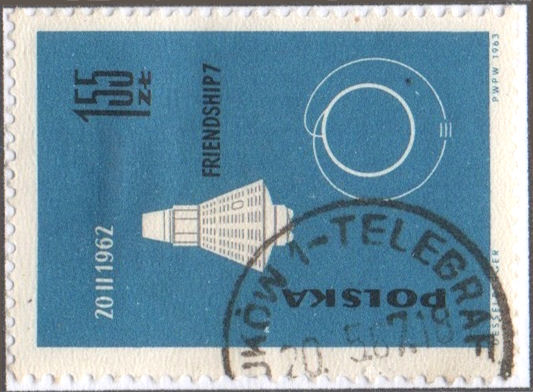
TELEGRAF used at Łuków.
Image courtesy of Les Bottomley.
Telegram Seals.
A range of seals are known and shown in the section on seals.
Syria
Bilingual u nused Posts, Telegraph, Telephone & Radio Form of some kind.
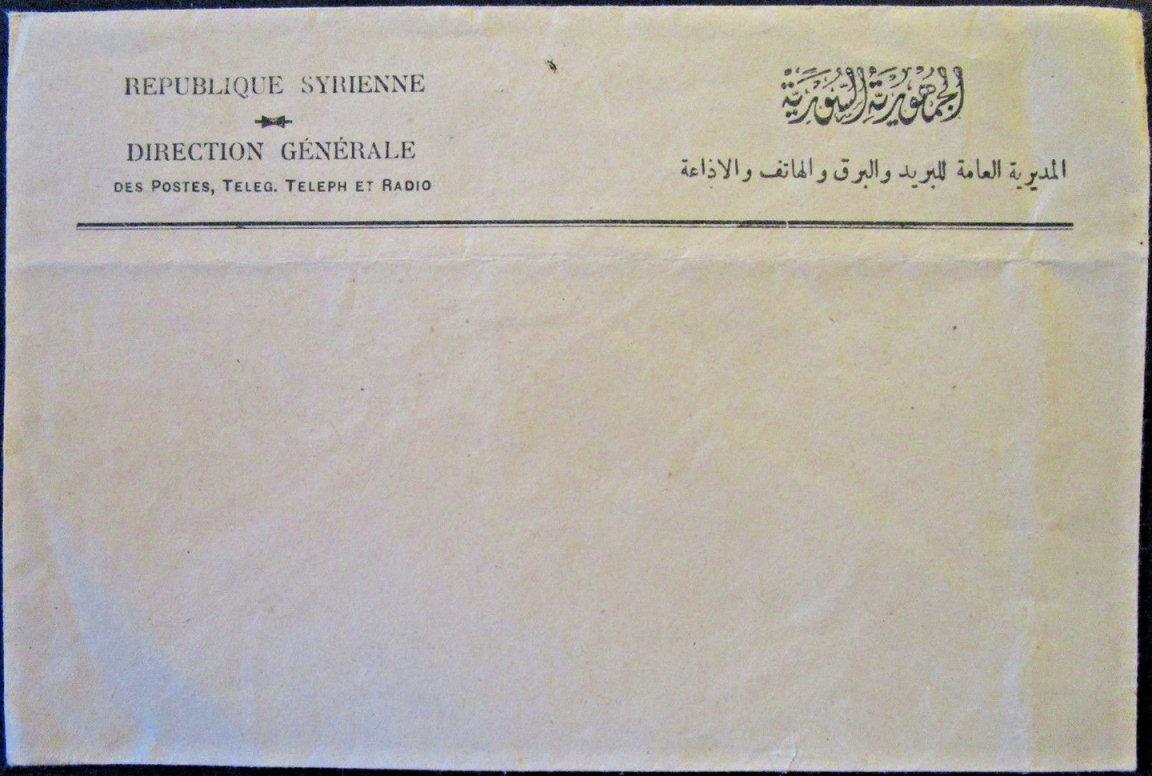
Turkey
Like many countries normal postage stamps were often used to pay for telegraphic services. The only way to recognise them is by the cancel.
![]()
These are the Arabic numerals, 0 to 9 readig left to right.
Arabic dates.
When using cancels on telegrams or stamps to get the dates, there are some complications.
From 1840 to 1926 the Ottoman Empire used the Rumi calendar.
After converting the date from Arabic, add 584 years to get the Gregorian (Western) date.
After 1926, Gregorian dates were used, though sometimes dropping the first '1'.
Similarly to Persia, Money was raised to fund infrastructure by taxation on postal and telegraphic services.
This was done by using Charity stamps that were mandatory on certain days.
This requires some background since it contradicts information in both the Michel and the Scott catalogues (at least), which also contradict each other.
This was originally brought to my attention by Rodney Cork, a member of ONEPS, by showing me the "TELEFON" example. From there I looked at the Scott comments
for the "Postal Tax Stamps" and the "Postal Tax Air Post Stamps" which indicated that both were obligatory on certain days for certain things,
and stipulated 3k was required for telegrams sent by the latter. Strangely though, there was no 3k value of the Air Post type.
I mentioned this to John Barefoot who pointed out that it was very similar to what the Michel catalogue says, except that said 5k for telegrams.
This prompted John to look at his Turl Pullari Katalogue 1973 (in Turkish), that quoted the laws that instigated these taxes.
It turns out that it was the 2½k for telegrams, to be used on 20 days each year from 1926 (29 June) until 1934.
For the Air Post stamps, there was only a single issue of the 2½k stamps, the one shown, but for the non-air post types, there were a number of issues,
but they could also be used for parcels etc.
Having said that, Michel #17, issued in 1932 was for 2½k. From 1936 to 1938, Michel numbers 37 to 42 were various overprints on Michel #17. Michel #17 was a "Kinderhilfe" (Child aid) issue.
In 1928 there was a "Roter Halbmond"(Red crescent) issue of 2½k, Michel #10. There were further 2½k Red Crescent issues in 1935(#29A), 1938/43(#45I, #45III) with a single overprinting, #24.
To me that says that the Red Crescent 2½k stamps were not affected by the Tax, but the Child Aid 2½k stamps were primarily used for the Tax.
Time - Line :
According to Pulham, 1973,
Days requiring compulsory Tax from 29 June 1926 :
A Telegram in Arabic and French. Though having a pre-filled year of 188_, this has ١٨٩٤ written on it suggesting use in 1894.
The French-style perforated flap is rather slanted and there is no sign of it, or anything being used as a seal.
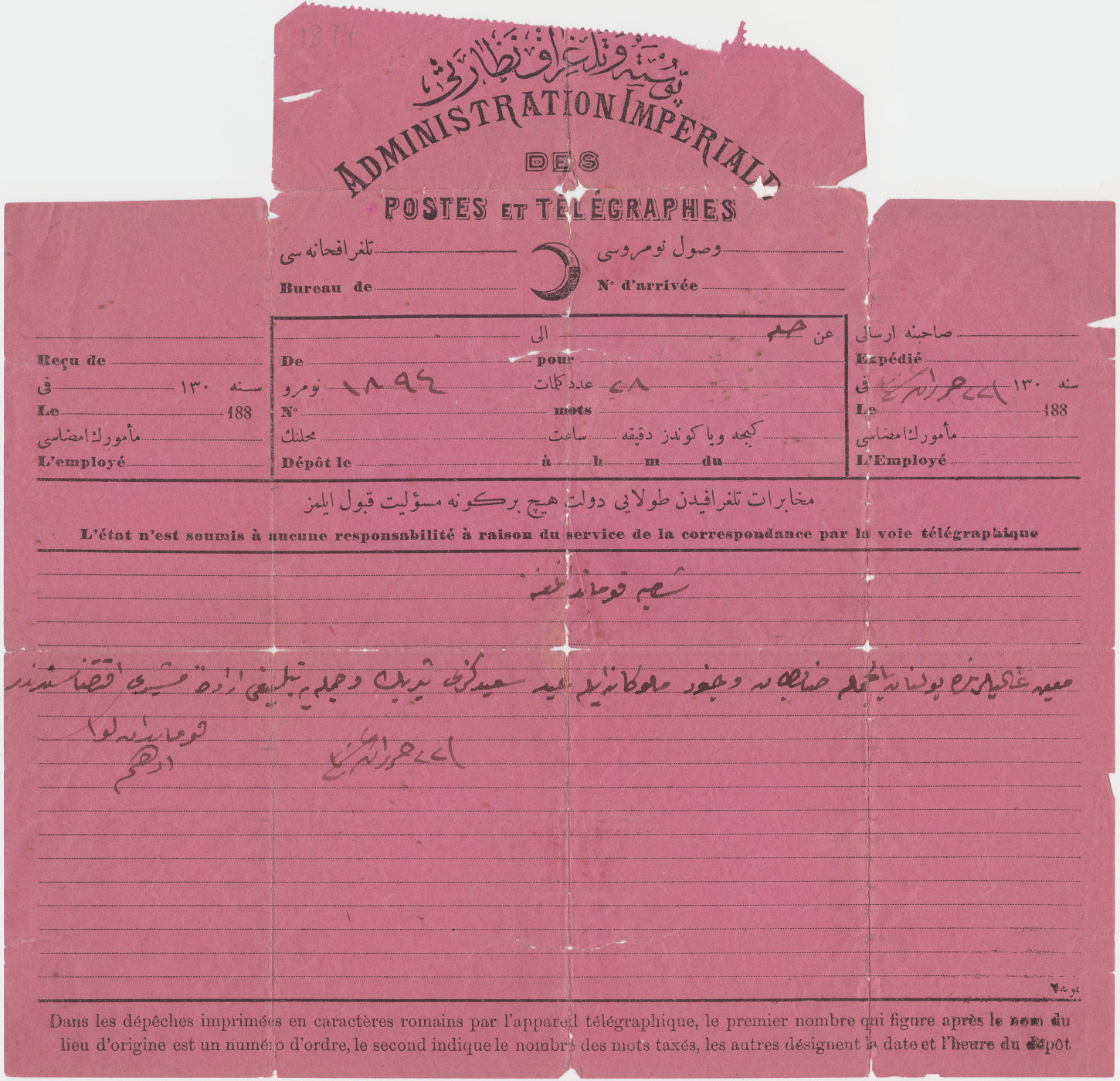
The only thing printed on the back is on the flap.
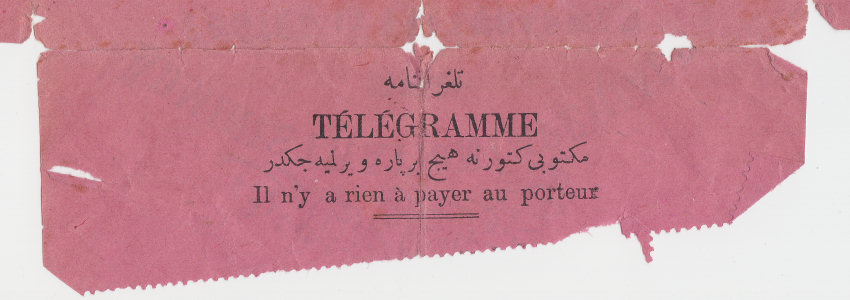
Don't pay for delivery.
A French-style Telegram with pre-filled date of 190_ printed in Arabic and French, inside and outside. Again slanted perforations.
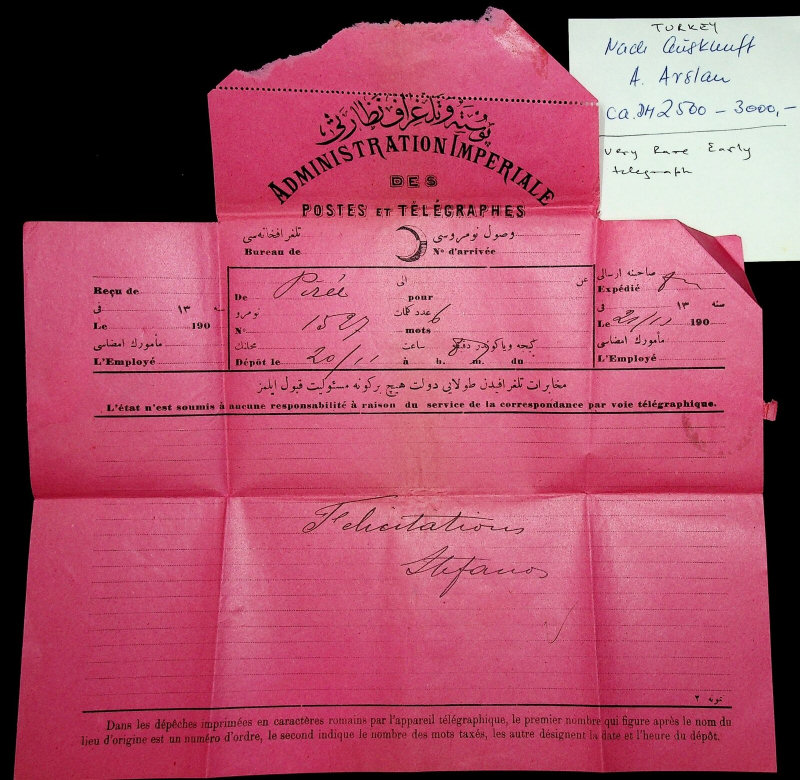
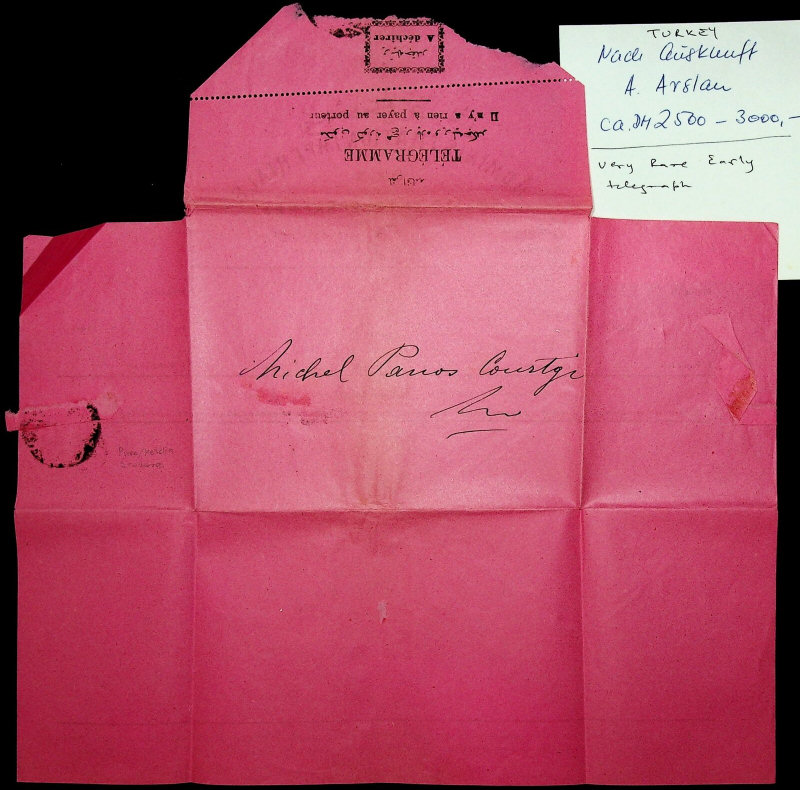
The pre-printed year is "190", but as usual has not been completed. Images courtesy of AsianStamp - (click one for listing).
A Telegram with pre-filled date of 190_, printed in Arabic and French.
It has two sheets pasted togethe, making it quite long. Because of that I am displaying it half size.
For full size, copy it or open in a new tab and use <control>+ to magnify.

there are a three Ottoman negative seals stamped on this.
A Telegram of January 1910 (date in pencil at top-right), in Arabic and French.
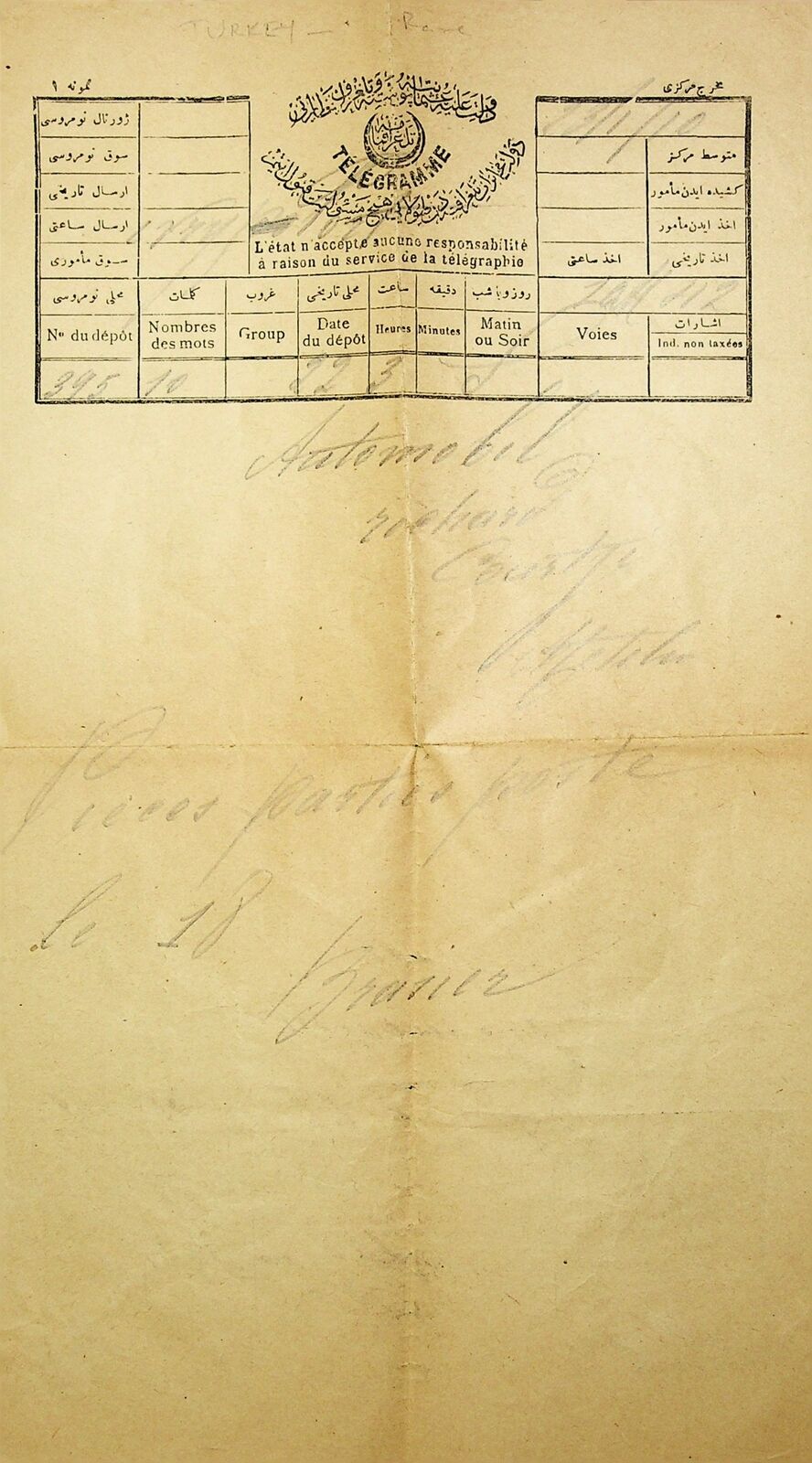
Still very long. Image courtesy of AsianStamp - (click for listing).
Here is an example of a Telegram from Sofia to Pera (a europeanized area of Constantinople/Istanbul). Said to be 27 January 1917.
Printed in just Arabic and using strips, it was sent in anglicized Bulgarian
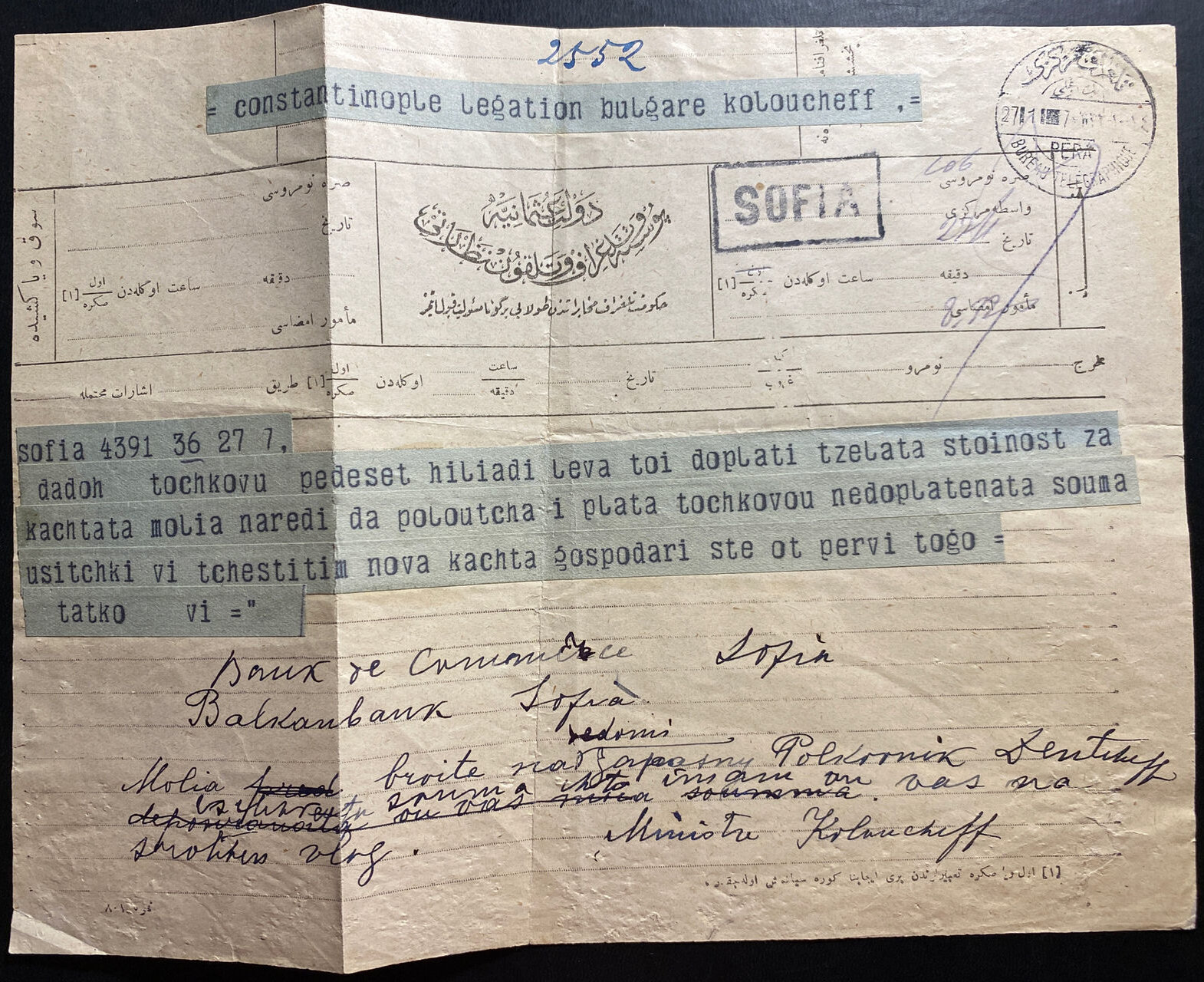
Now much shorter. Note the imprints at bottom right and left. Photo courtesy of Aztec Collectables, click on it for the listing.
A Telegram of 1 December 1925 printed just in Arabic and using strips. Note the top-central large Arabic "Logo".
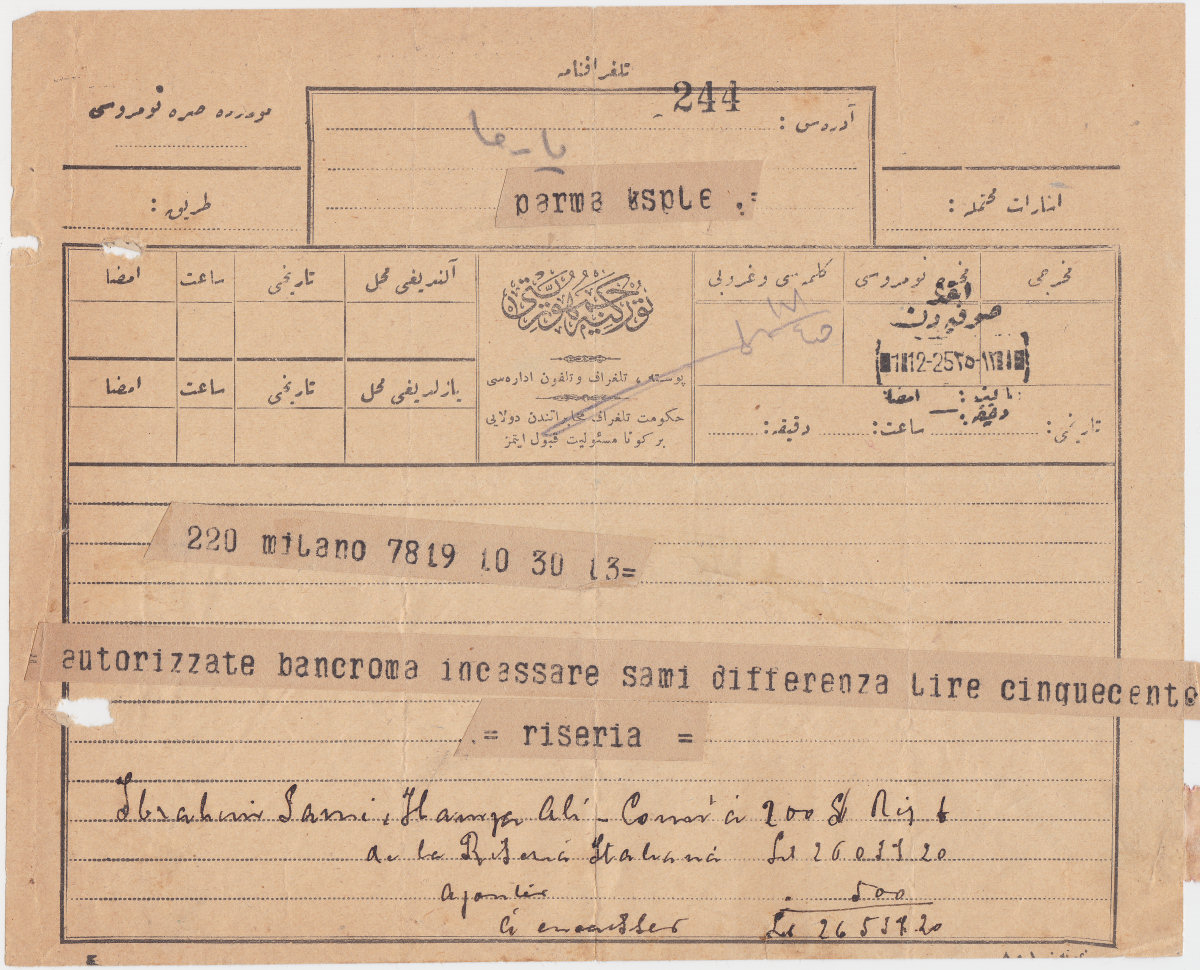
Note the different imprints at bottom right and left.
A Telegram of 1925 printed just in Arabic and using strips. Note the top-central large Arabic "Logo".
The date-stamp is unclear, but does appear to be 1925 and this does appear to be transitional between the last and the next.
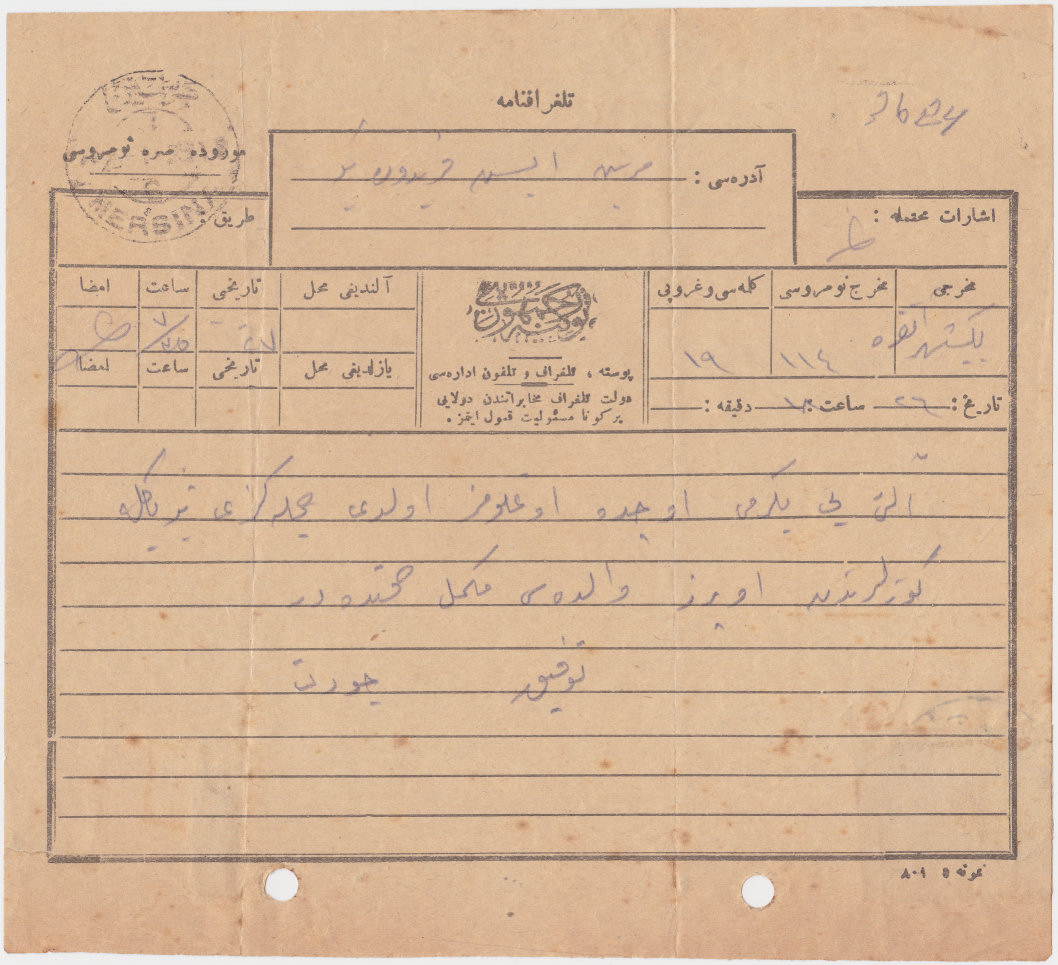
Changed imprints at the bottom.
A very similar Telegram of 21 October 1926, just in Arabic, but with a different top-central large Arabic "Logo".
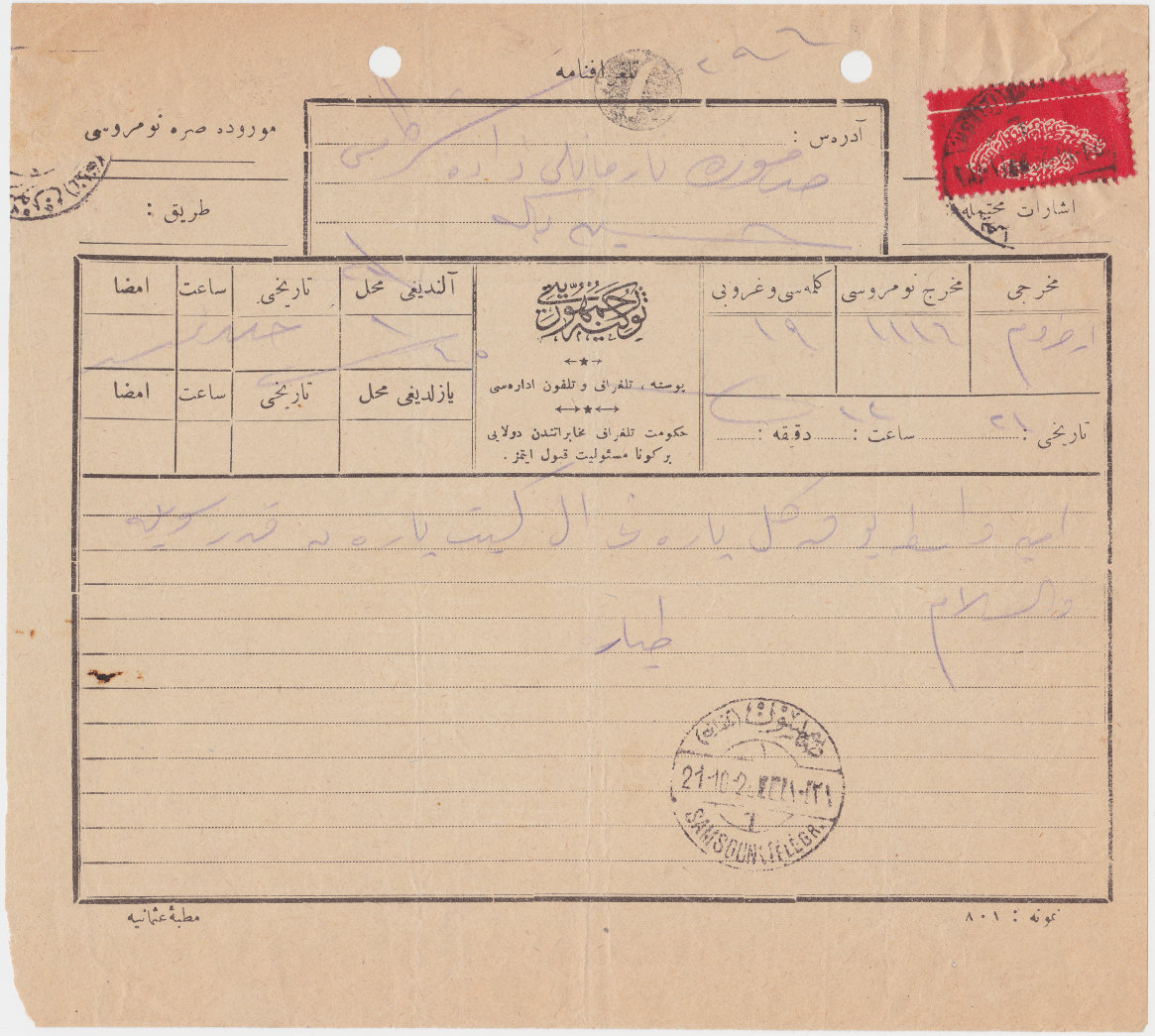
Different imprints at bottom left at least.
A very different Telegram of unknown date, just in Anglicised Turkish. I put it here since it looks like a forerunner of the following ones.
At the top-left is "DEVLET / Telgraf muhaberatindan / dolayi mes'uliyet kabul etmez." - a Government disclaimer ; Top-centre is "T.C. P.T.T. TELGRAFNAME", and
top-right has "(Nü: 251)" with "Tarik:" and a place fore a date-stamp. That is unstamped, possibly because "Tarik" is a bit confusing.
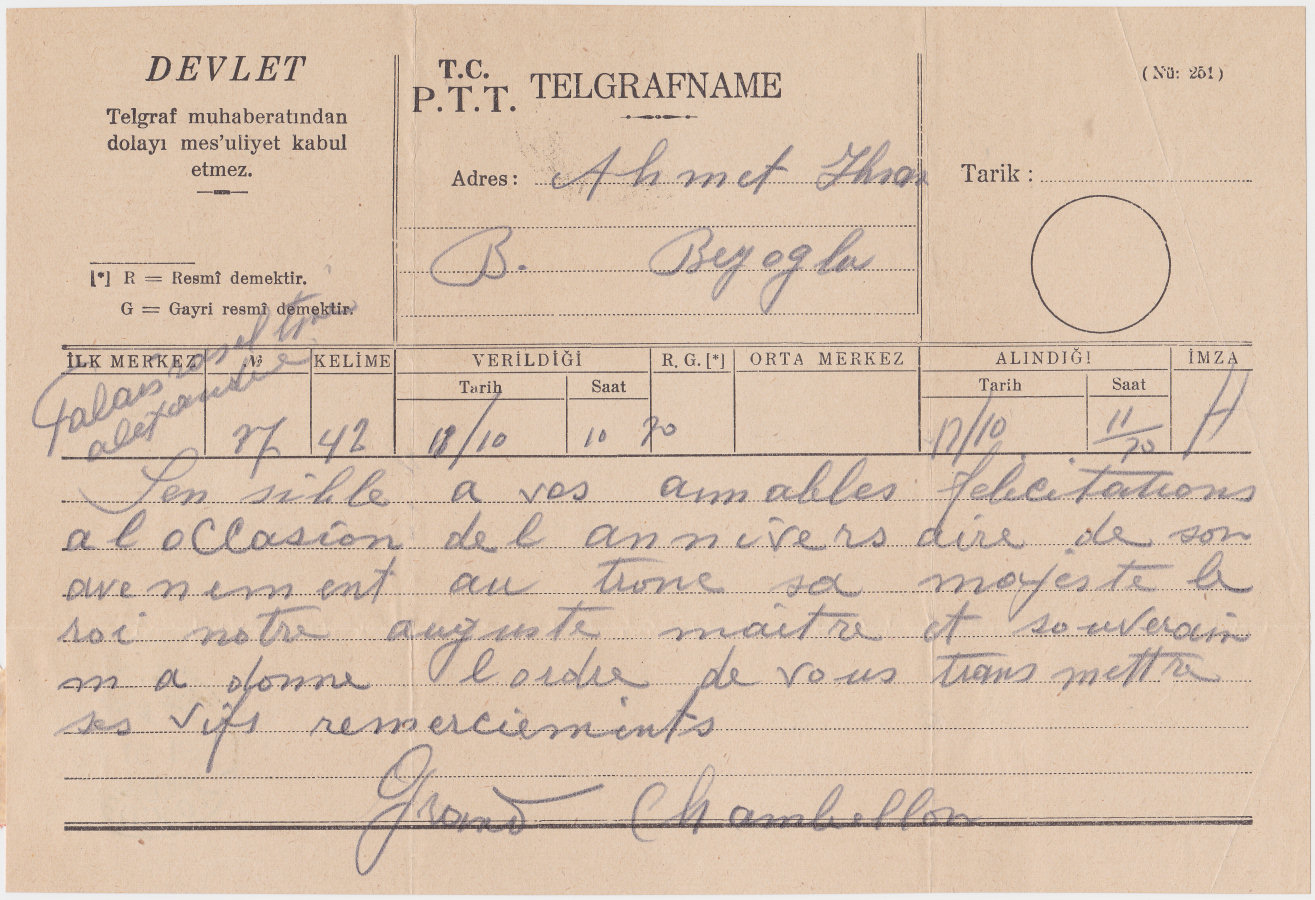
No imprints at bottom.
A Telegram of 8 December 1941, in Anglicised Turkish. This has "T. C. / MÜNAKALÂT VEKÂLETİ / P. T. T. U. M." at the top-left,
with a boxed Government disclaimer underneath. At top-right is "(Őrnek : 251/1)" , the Form number.
"Yol" appears to mean Route.
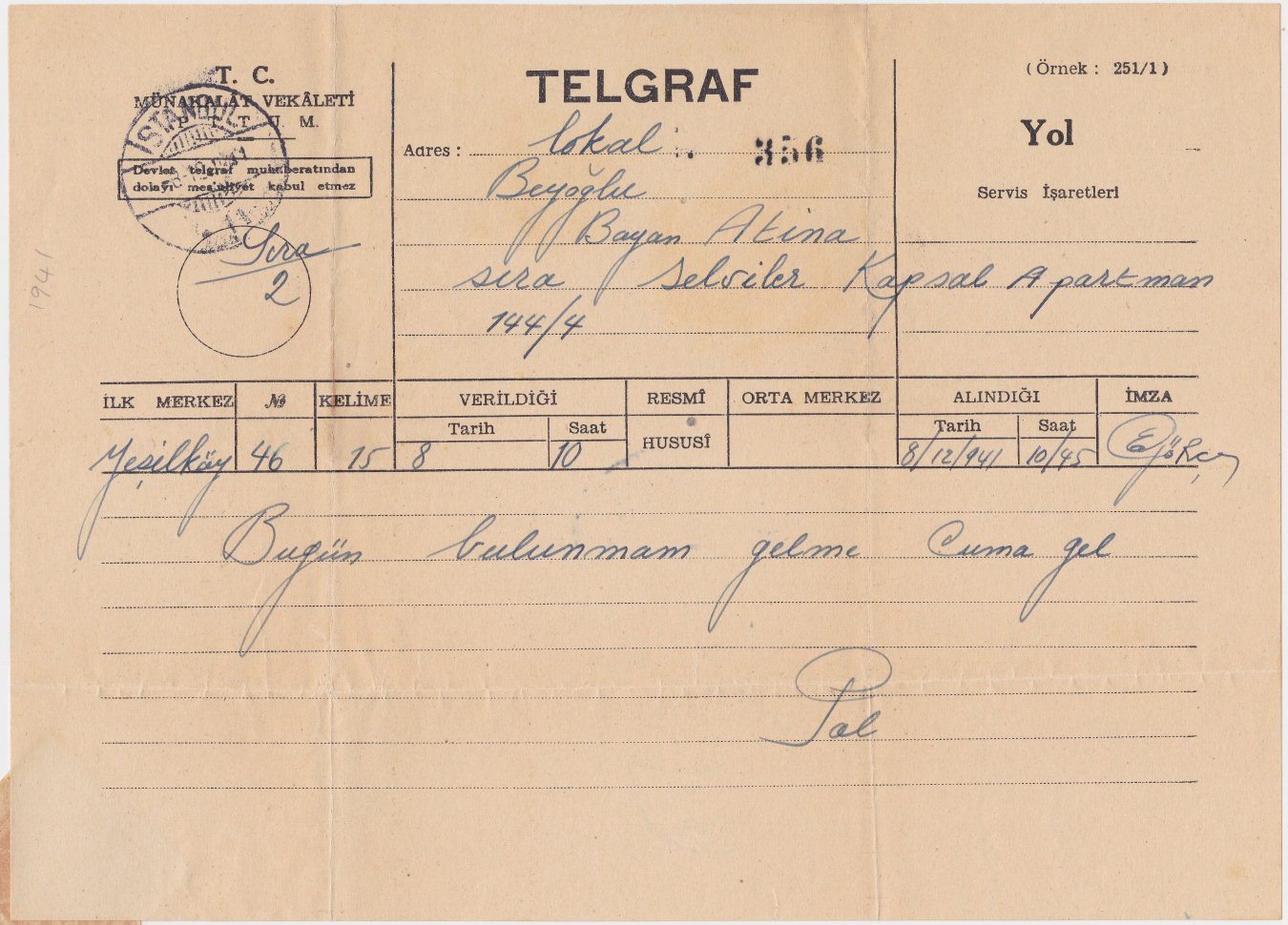
No imprints.
A Telegram of 14 May 1948, quite similar to 1941. This has "T. C. / P. T. T. İ. G. M." at the top-left.
At top-right is now "(Őrnek : B. 1)".
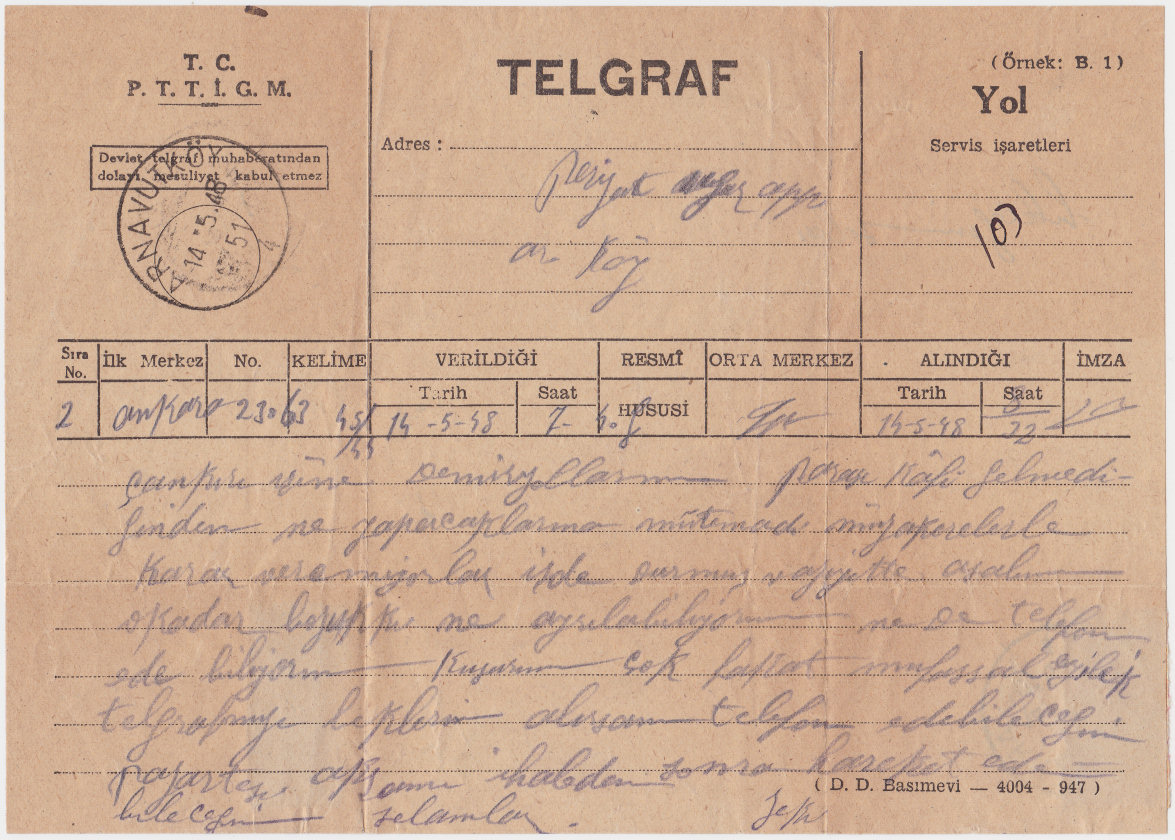
There is an imprint at bottom-right reading "( D. D. Basimevi — 4004 - 947 )" which suggests a printing by "Devlet Basımevi" (State Printing House) in 1947.
A Telegram of 24 December 1954. This is mostly in Arabic, with an imprint at top-left which includes ١٩٥٣ suggesting a printing in 1953.
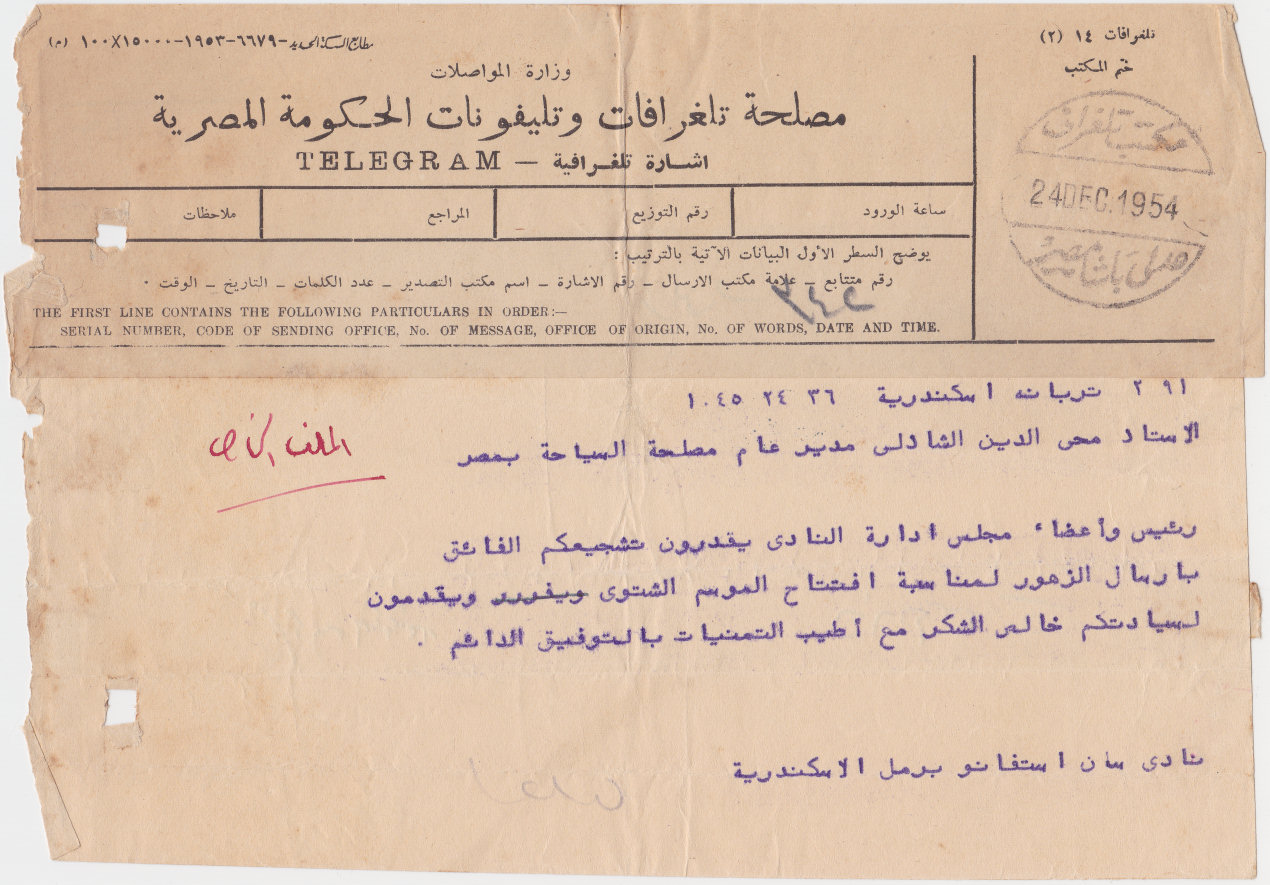
This Ottomam Empire receipt was used in Samatia (Samatya) an area in Constantinople (Istanbul) in 1918. It has a 10 Paras impressed fiscal stamp.
The receipt is in French, but completed in Arabic.
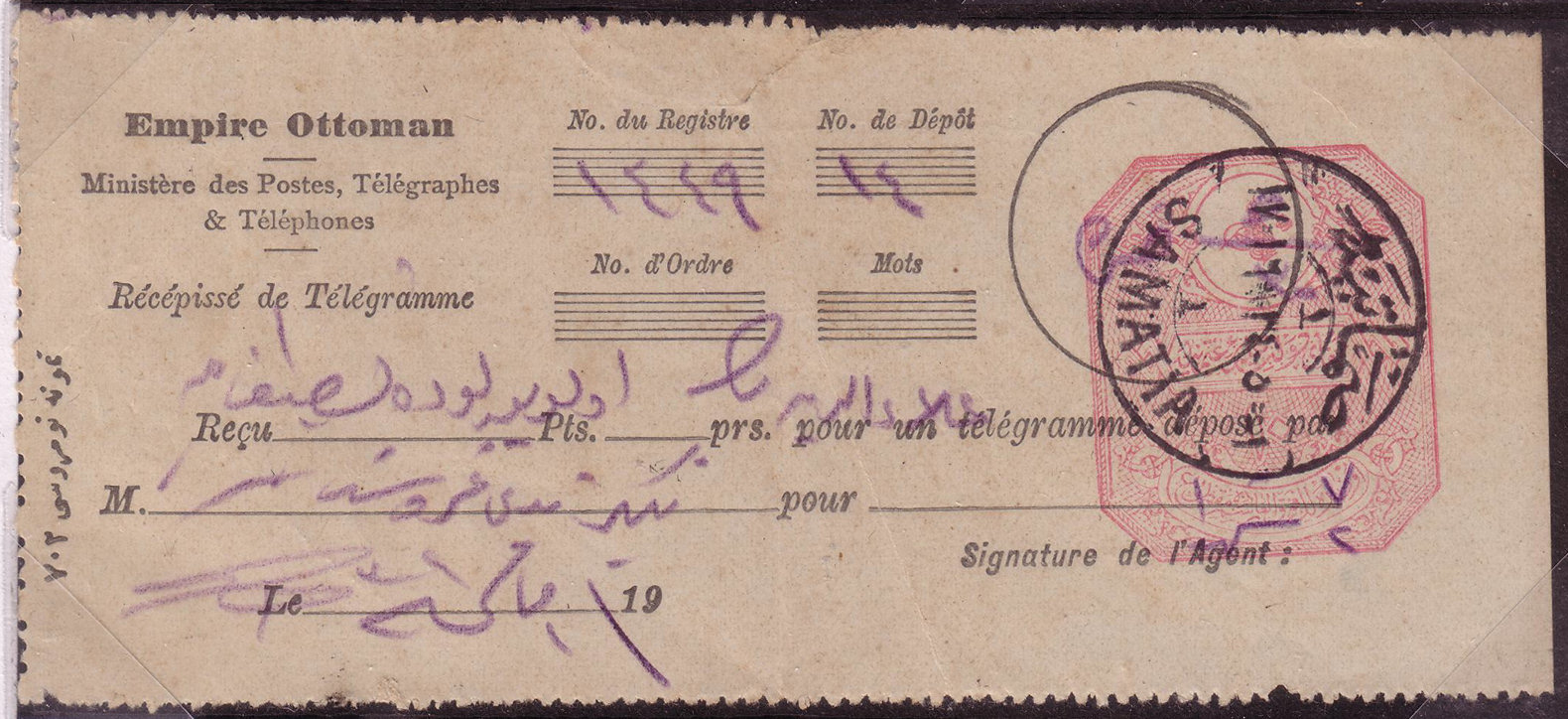
Image courtesy of Rolf Lamprecht.
Another Ottomam Empire receipt, this used in Beyrout, then part of Turkey. It has 2 Piastre in Turkish semi-postal stamps of 1916 (Scott B23).
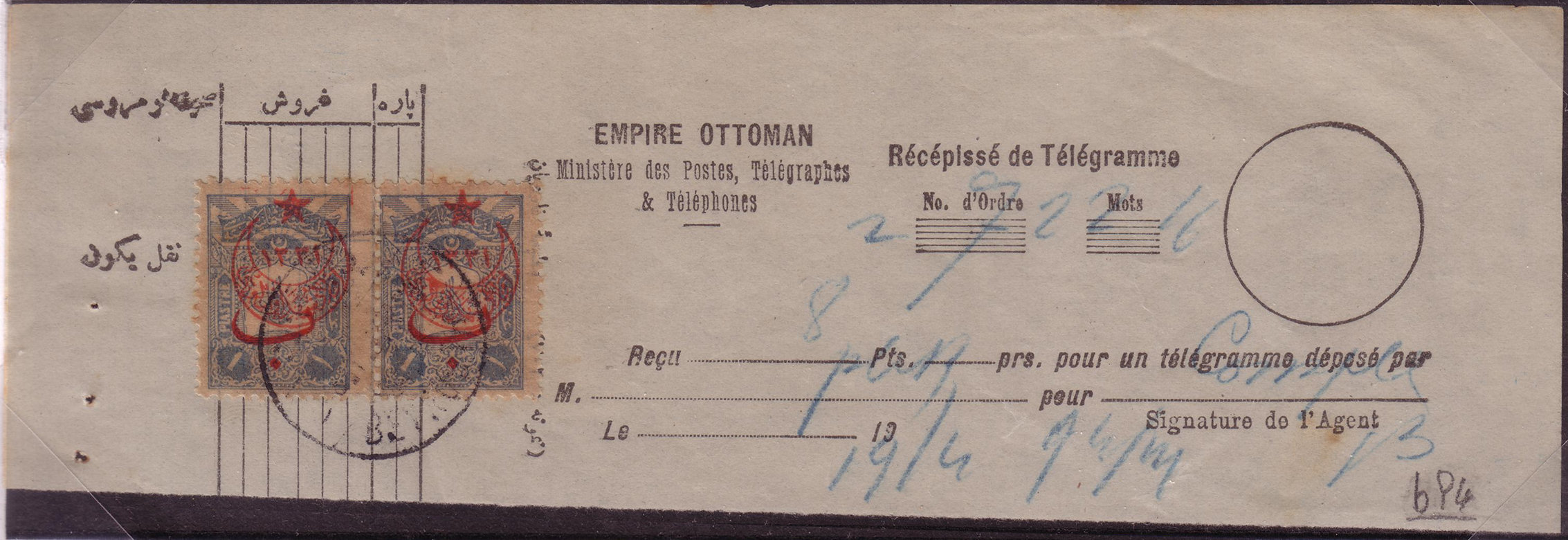
Image courtesy of Rolf Lamprecht.
Telegram Seals.
A range of telegram seals were also used in Turkey, here are some at half scale :
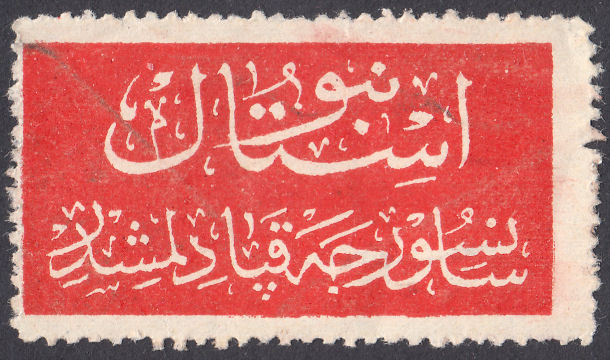
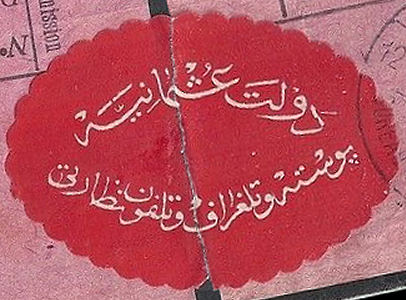
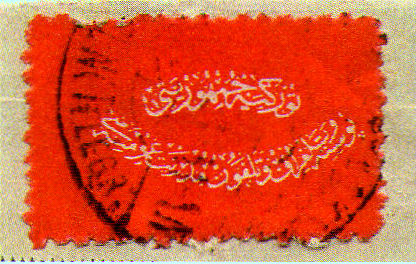
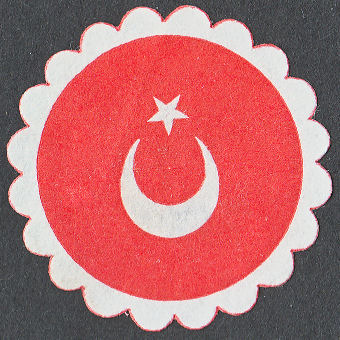
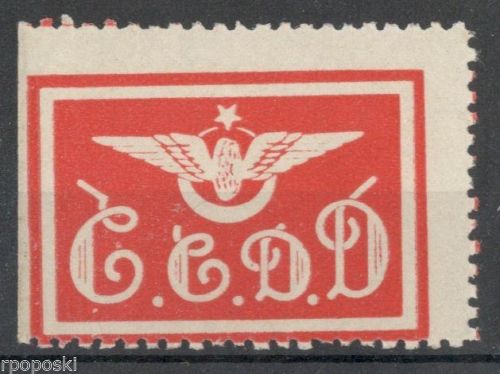
As always, If anyone can provide further information and/or scans to help with this page, I am happy to give appropriate credit.
